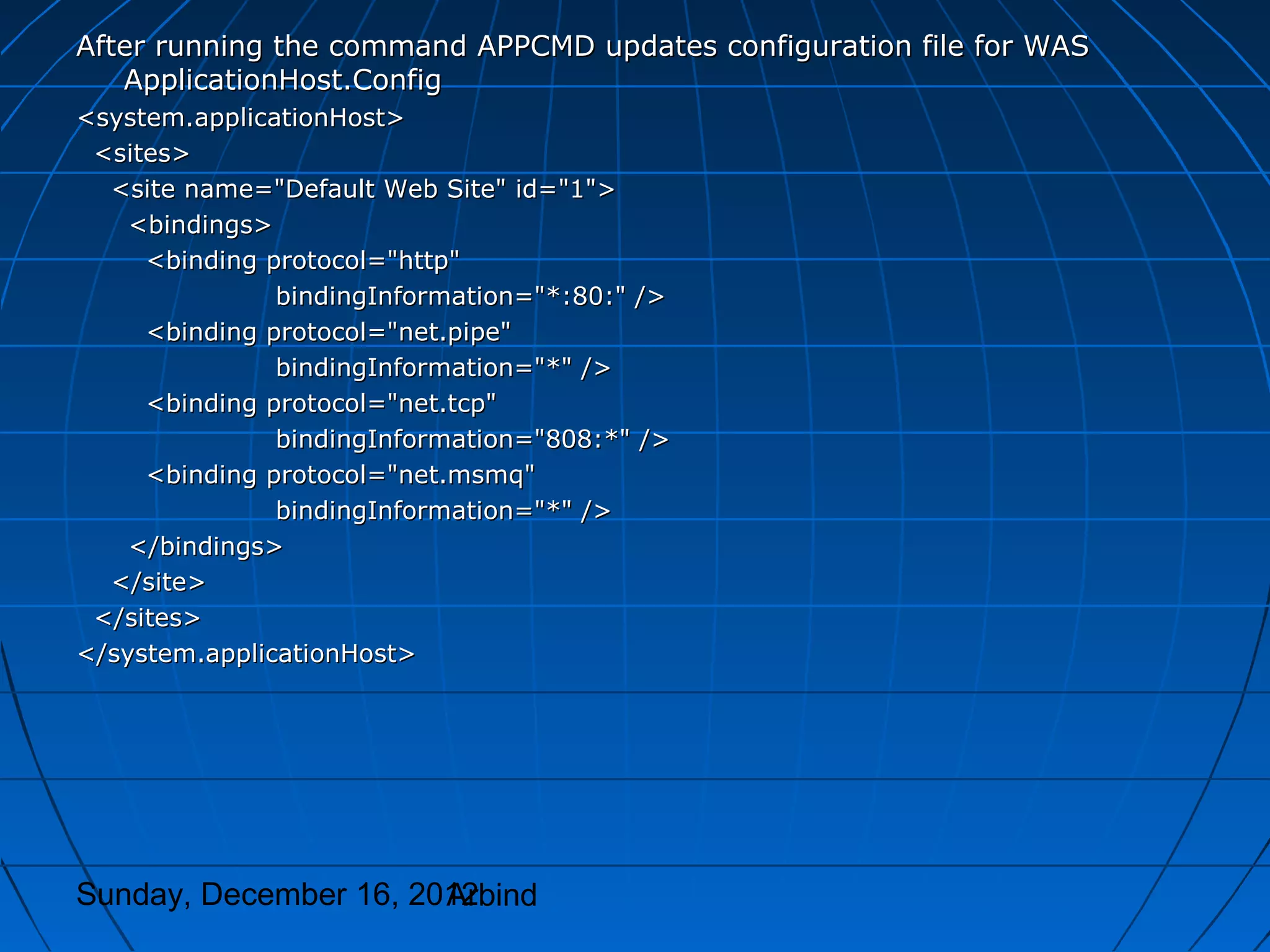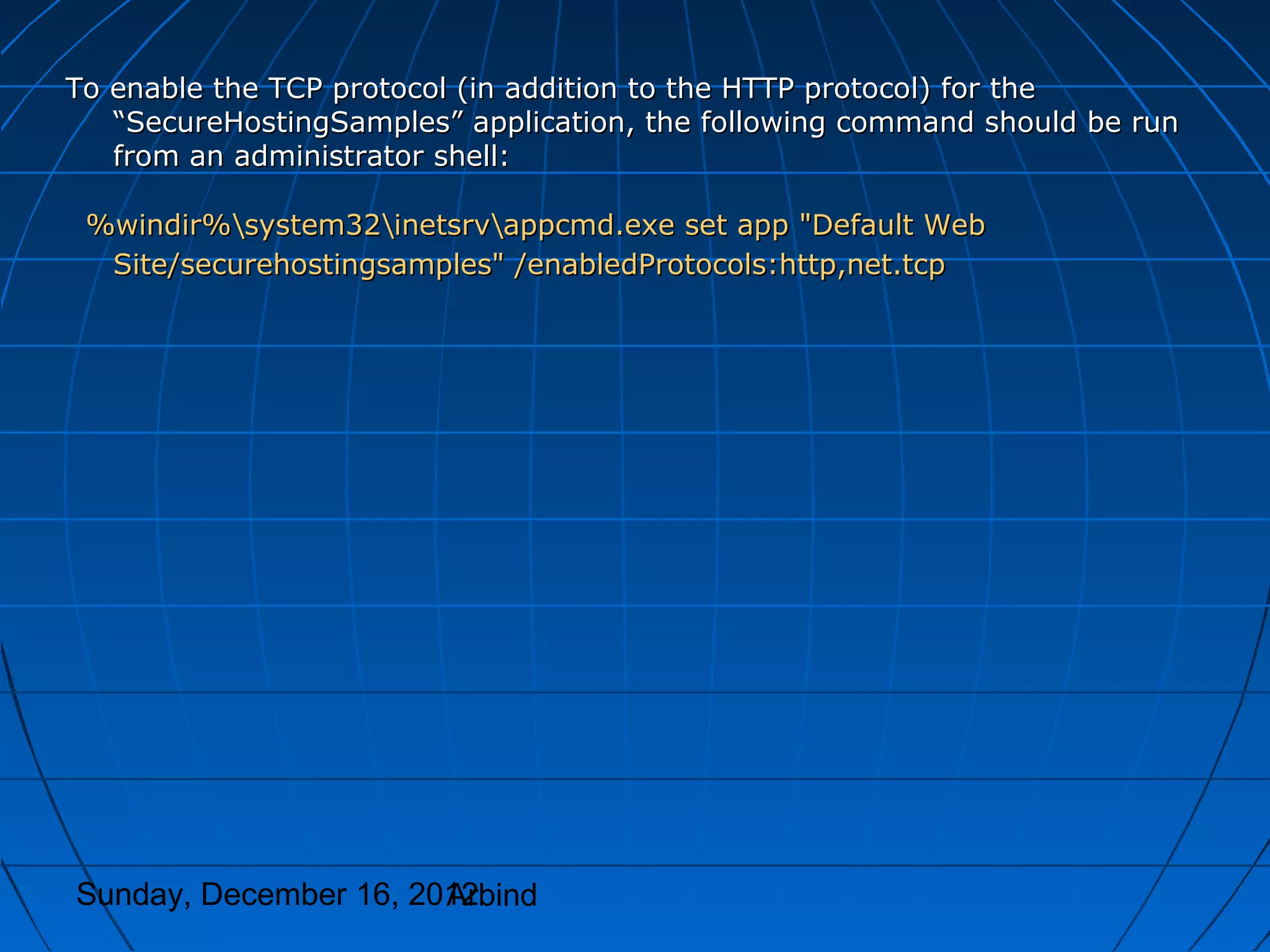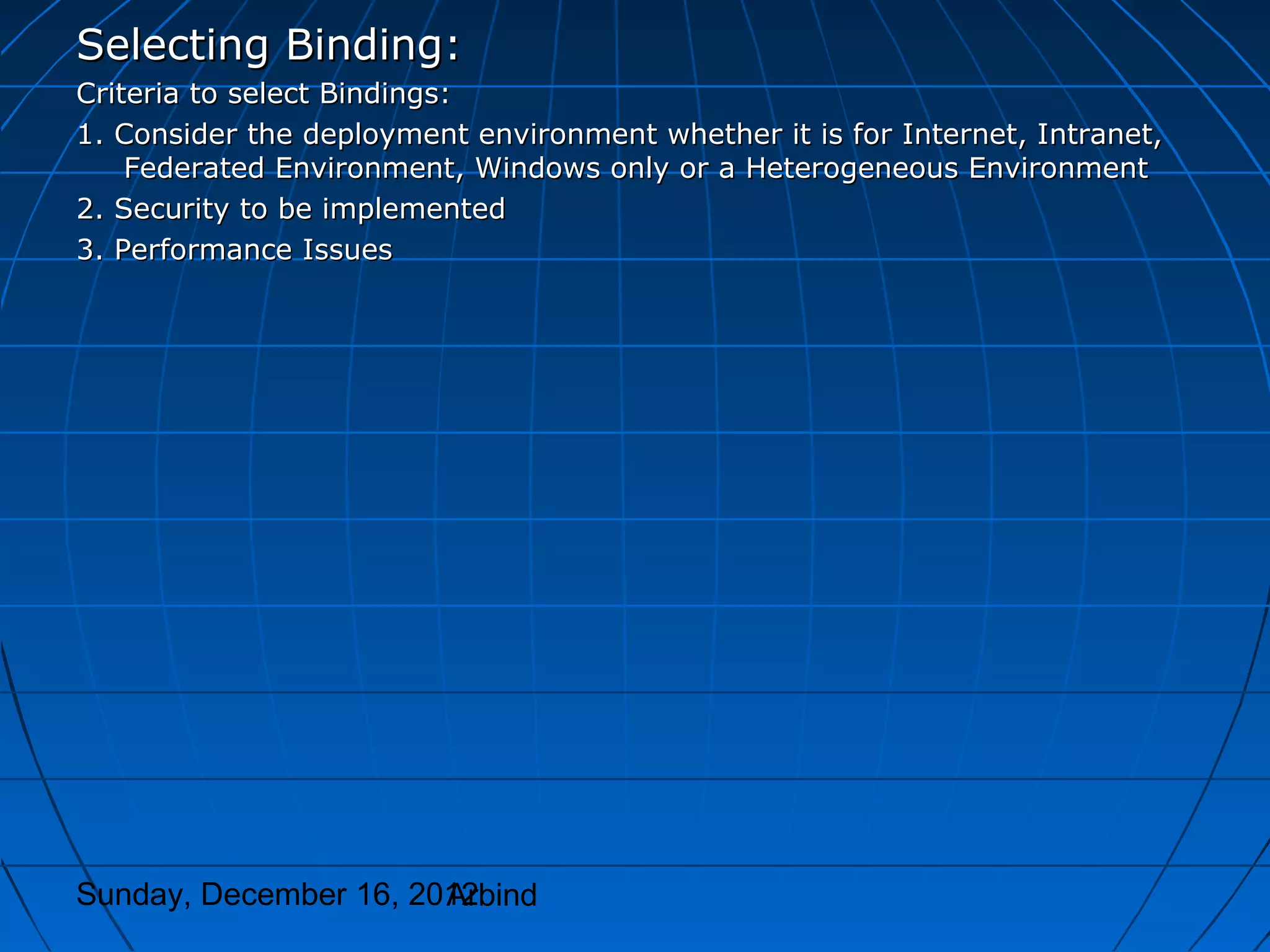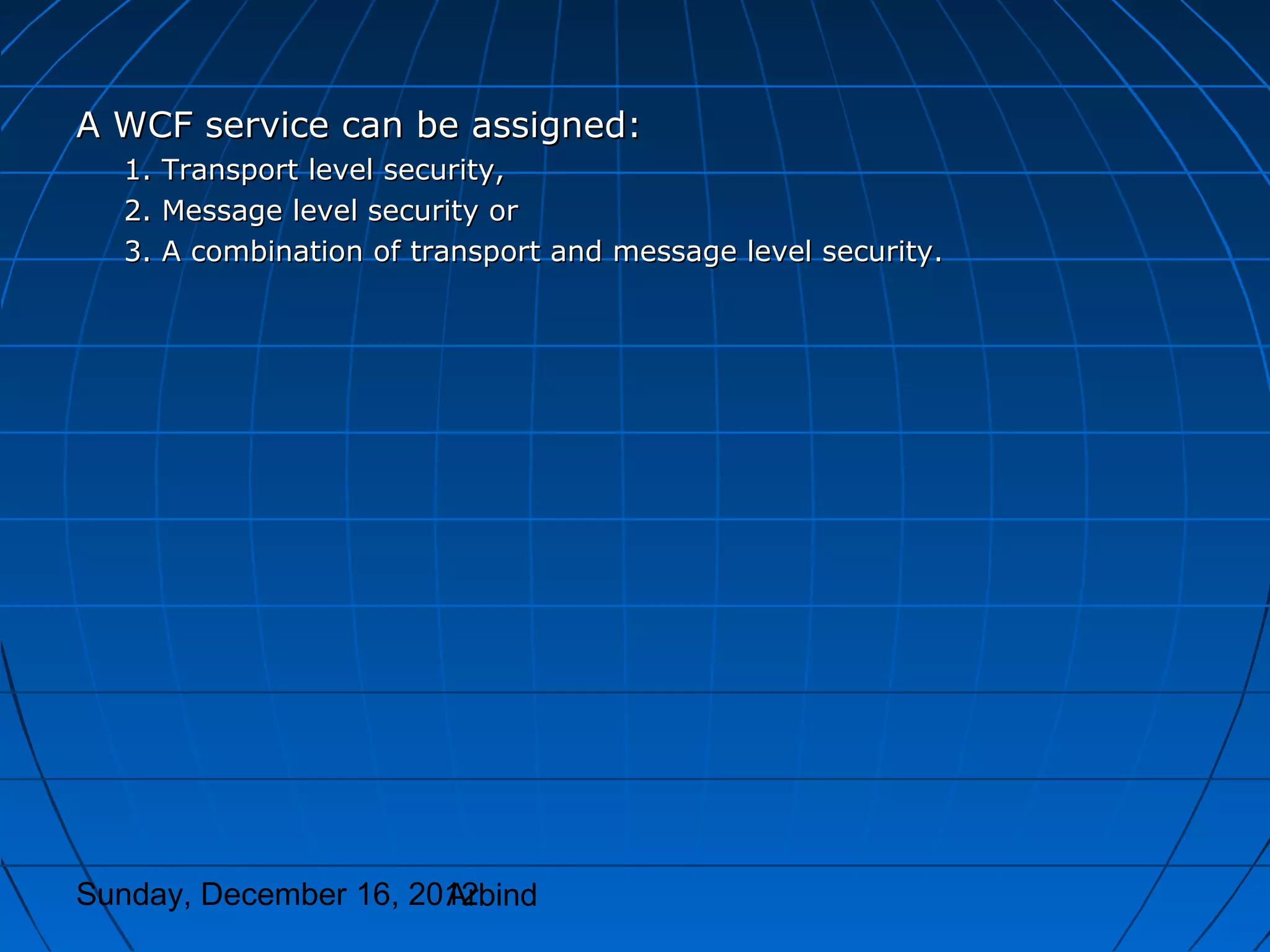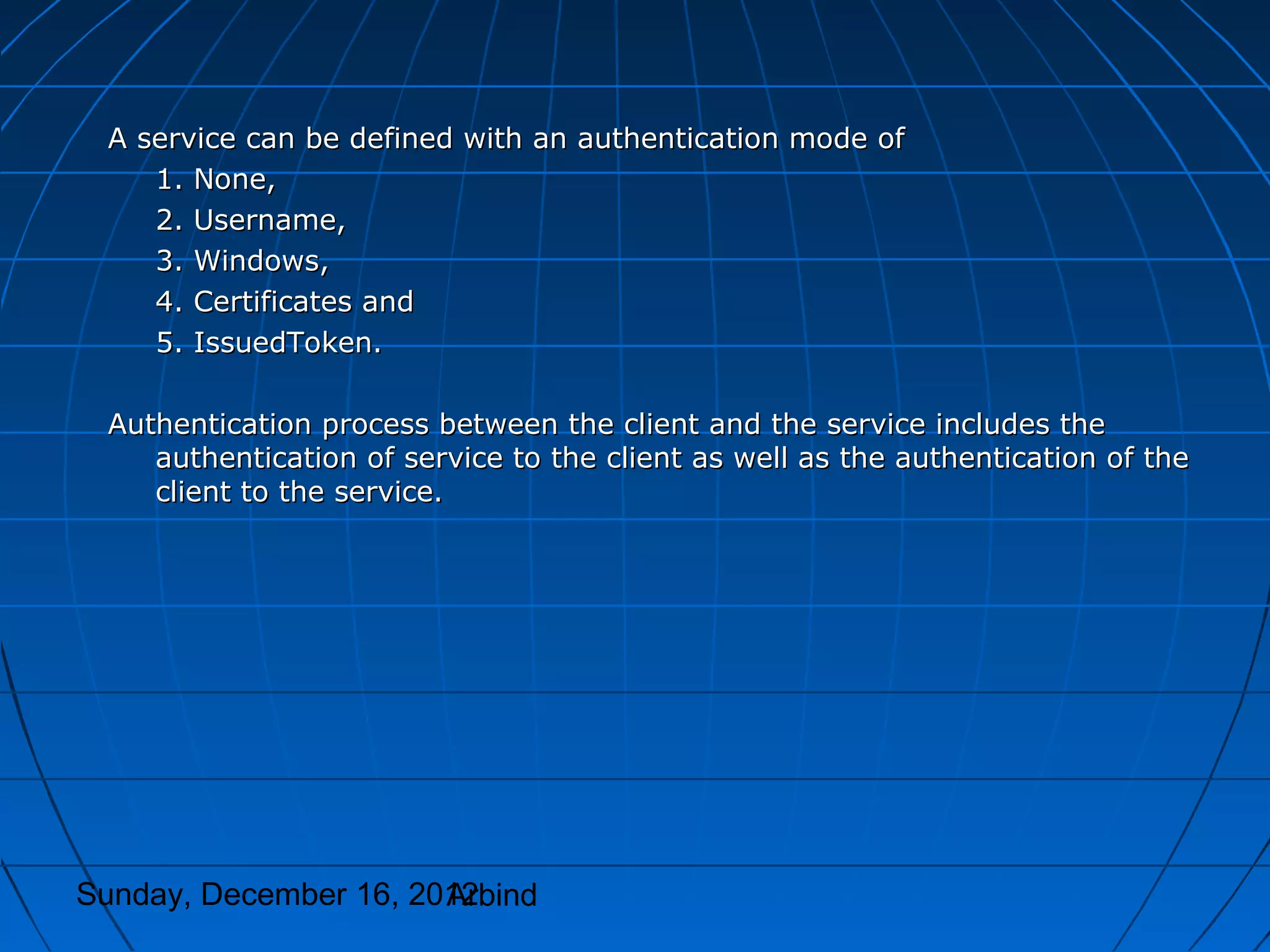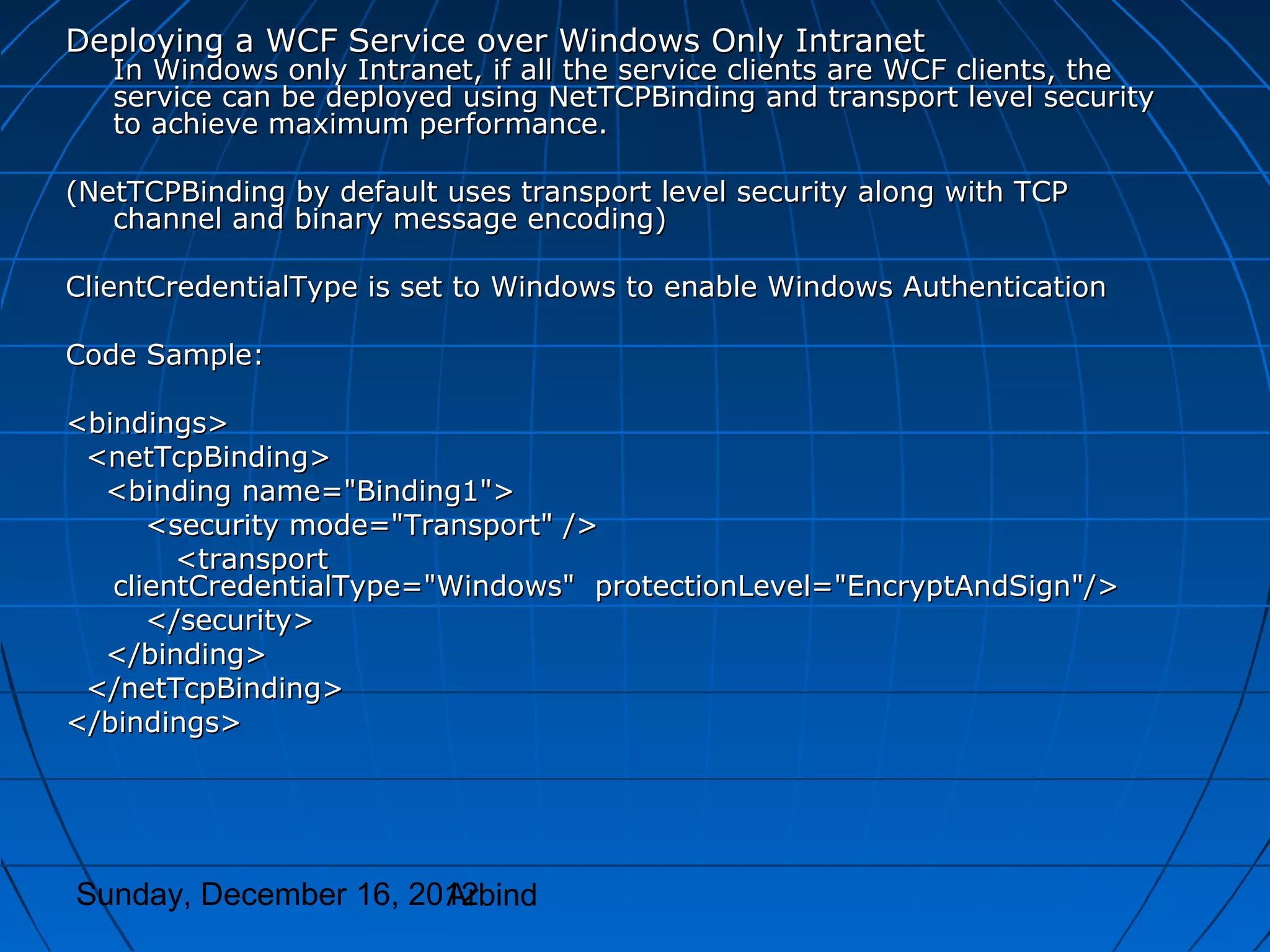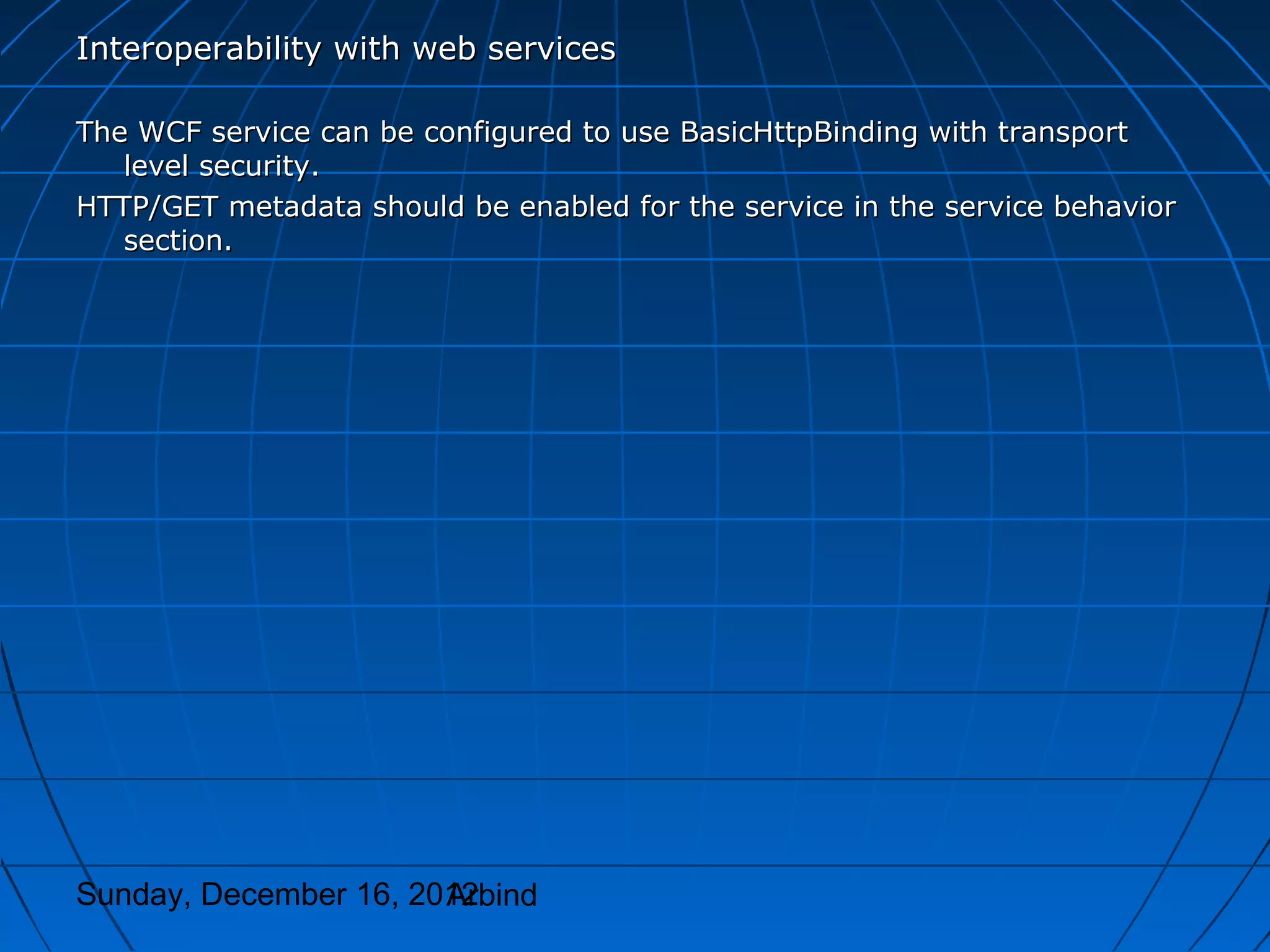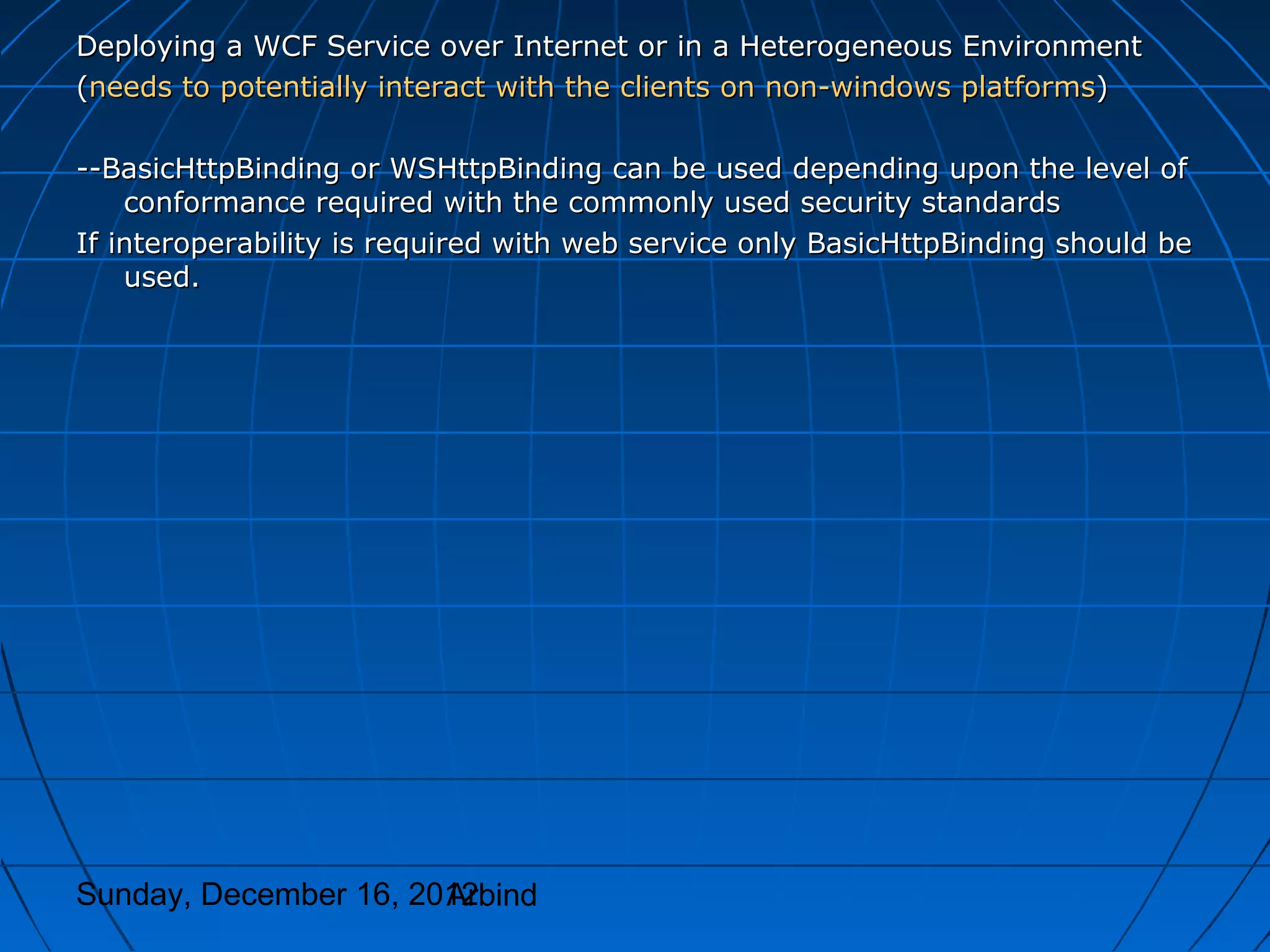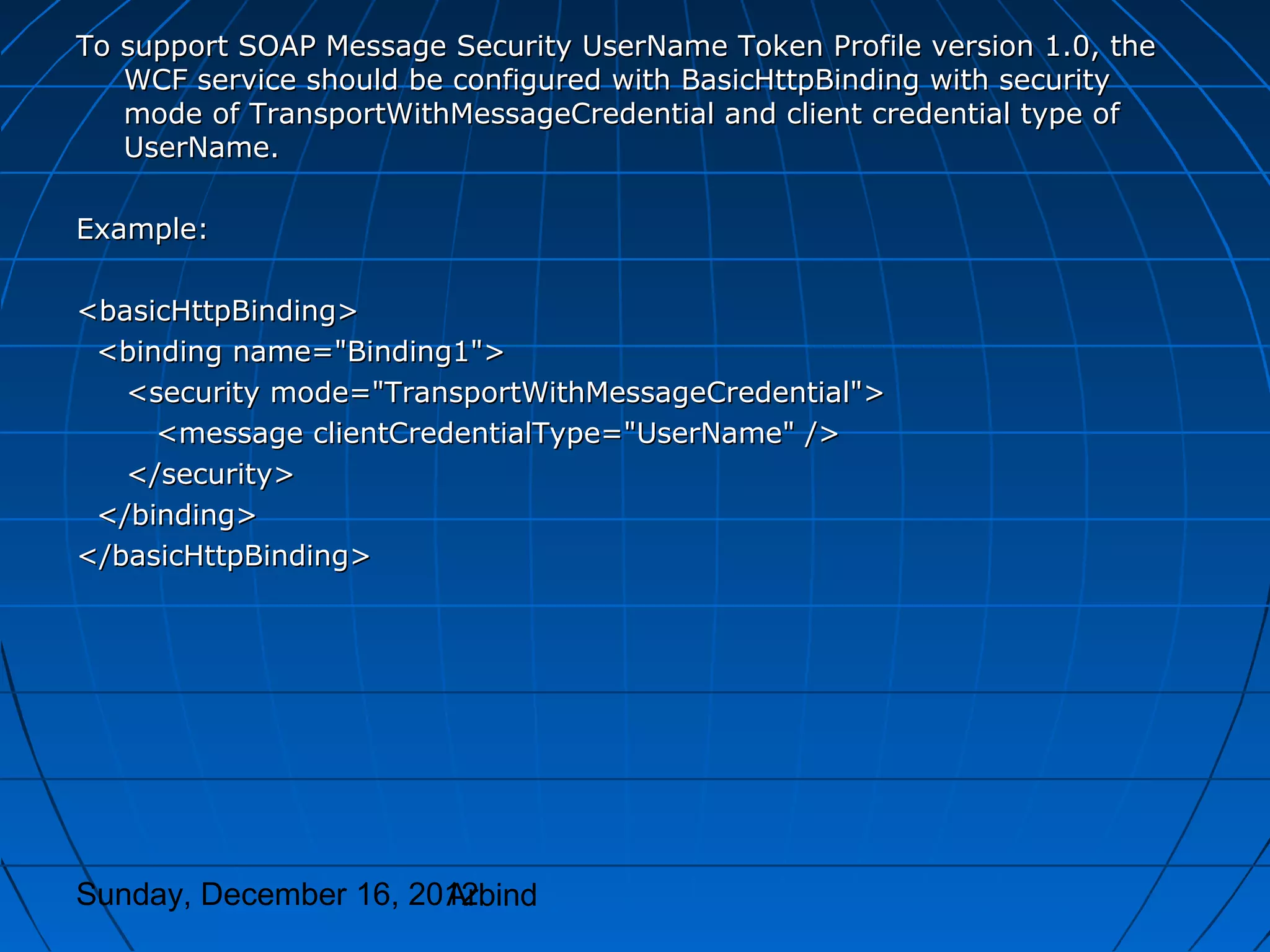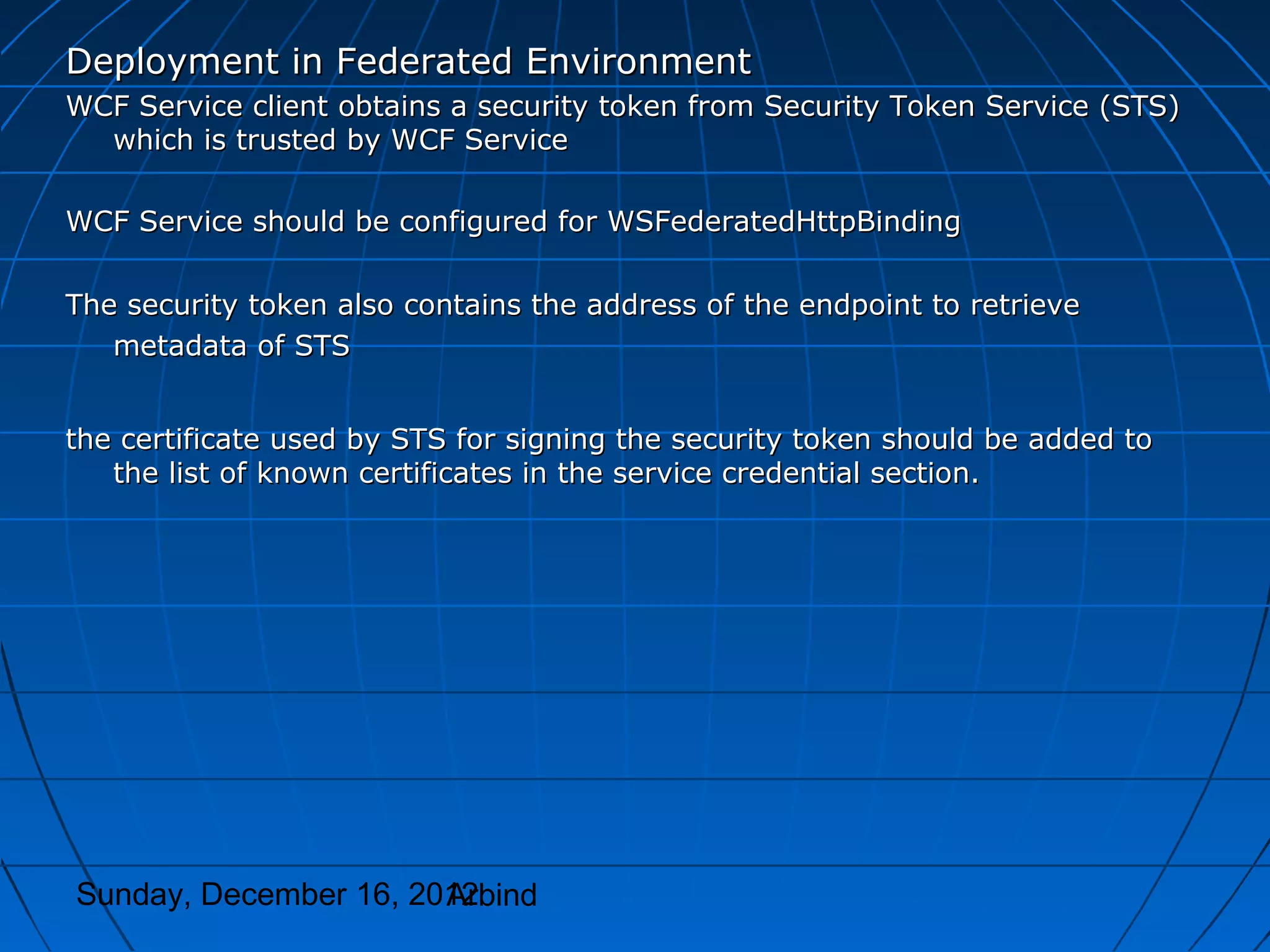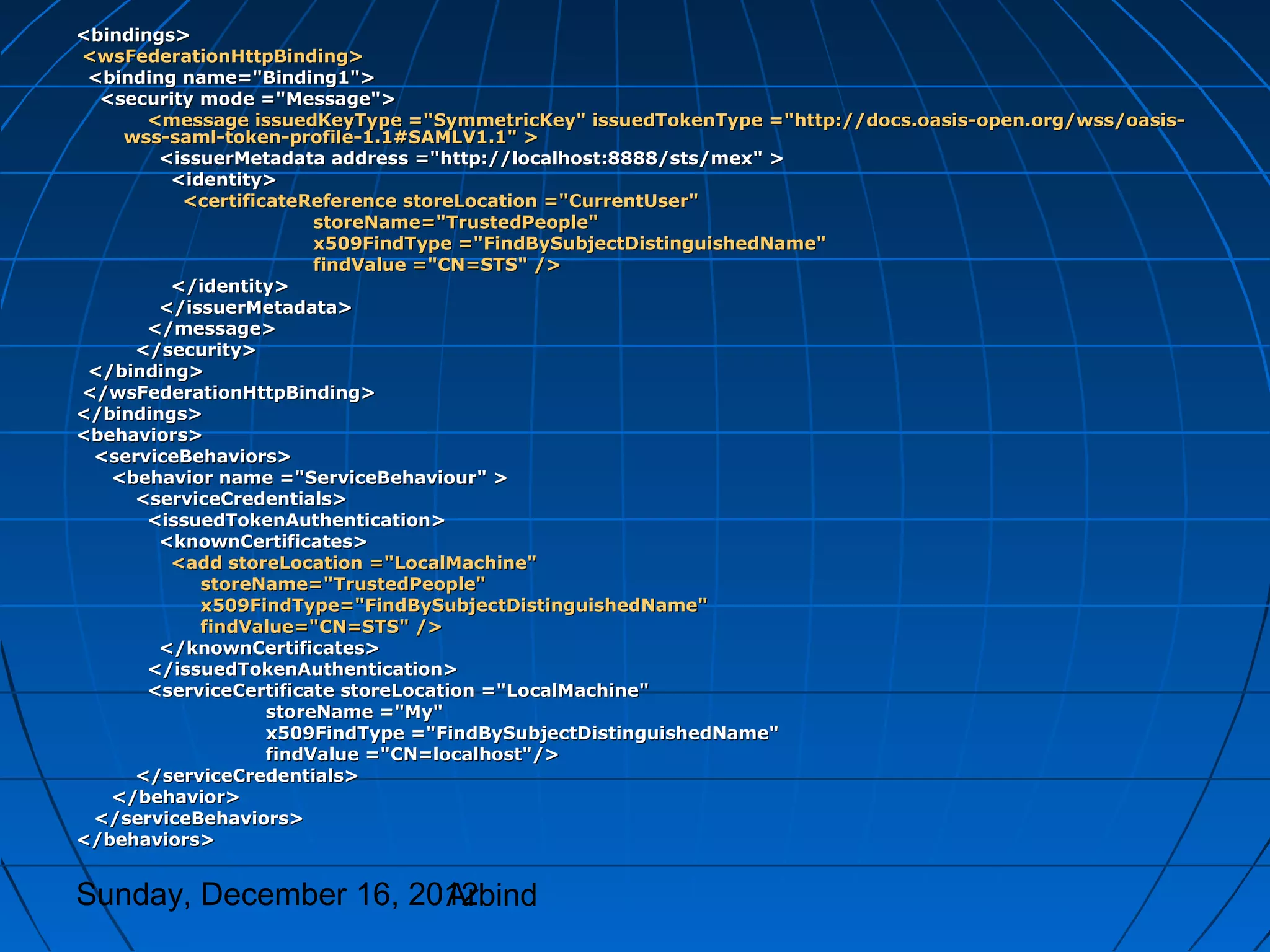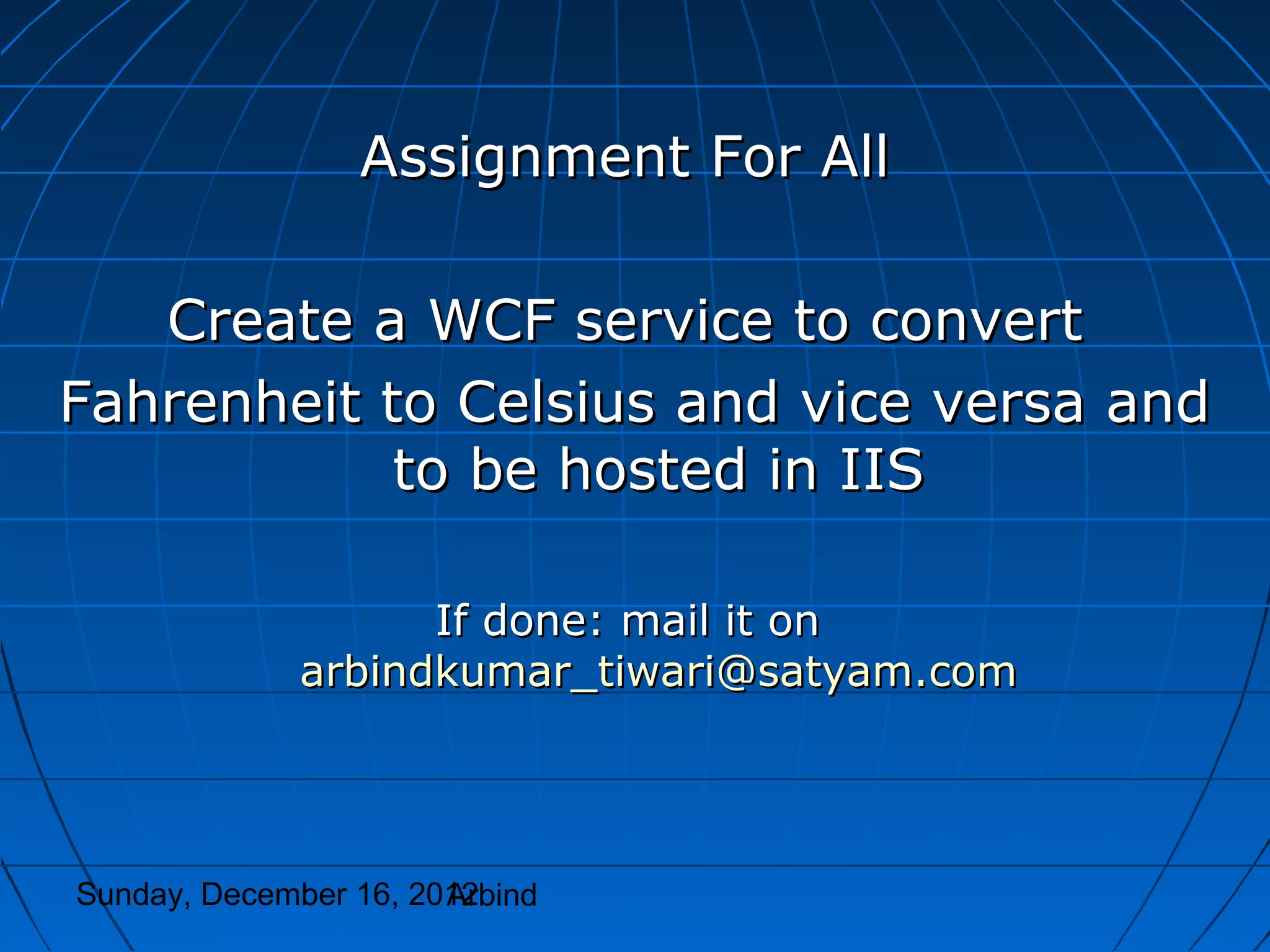WCF allows services to be hosted in various ways including self-hosting in a managed application, hosting in a Windows service, or hosting in IIS. The hosting environment determines how services are activated and configured. Services expose endpoints that clients can communicate with using addresses, bindings, and contracts. Clients access services by creating proxy classes or channels. Behaviors can be used to customize service and client functionality.

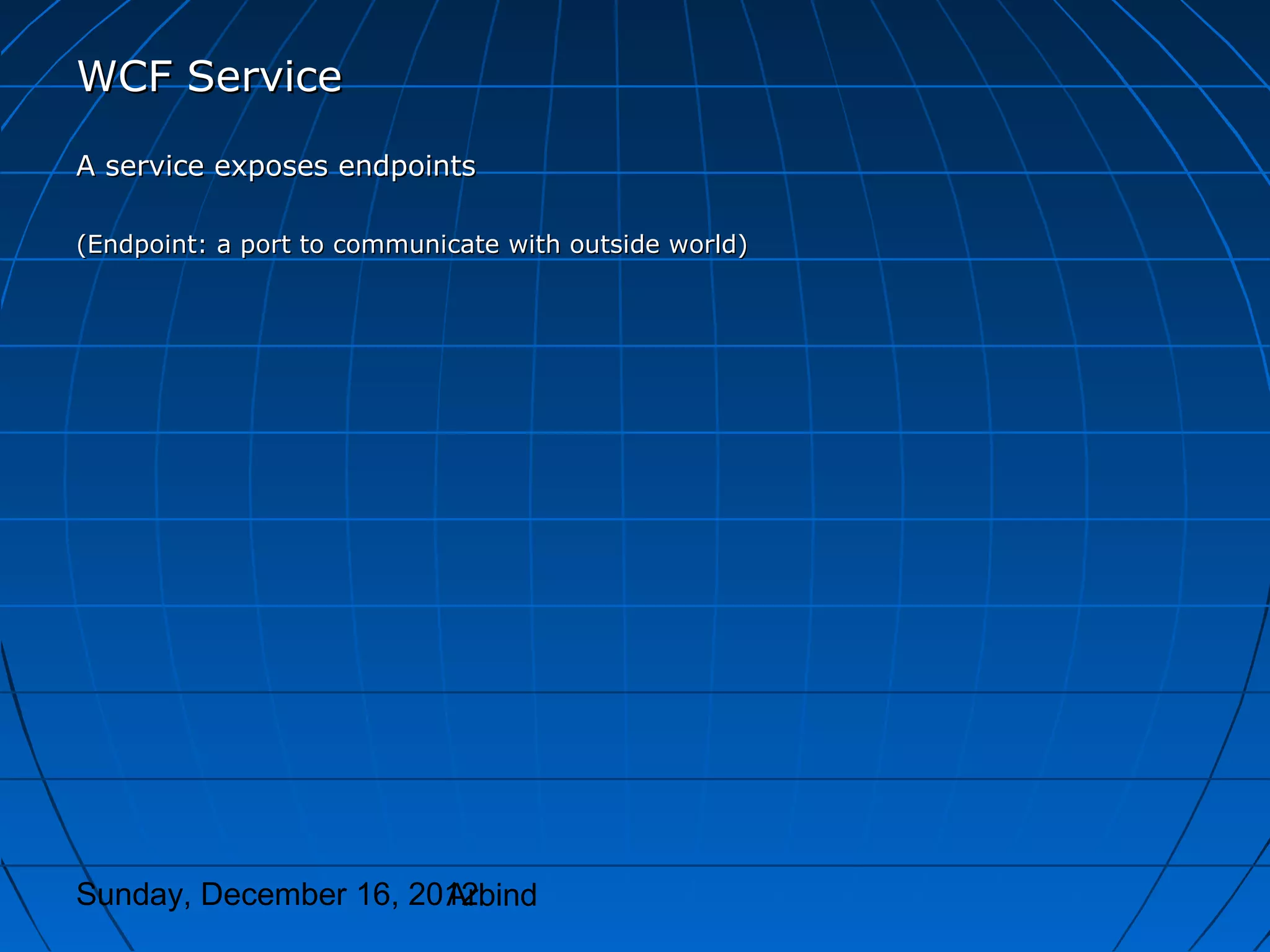
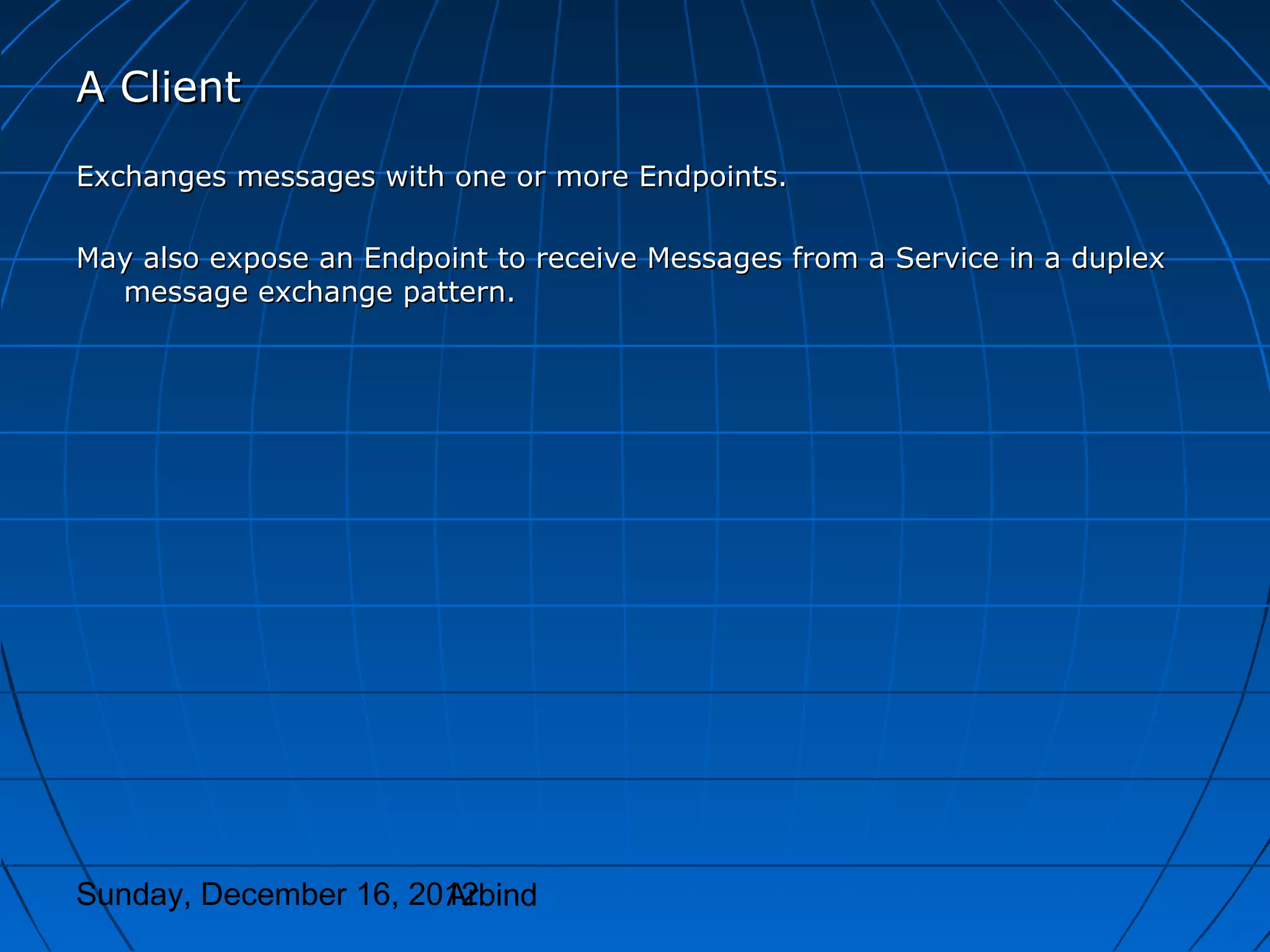
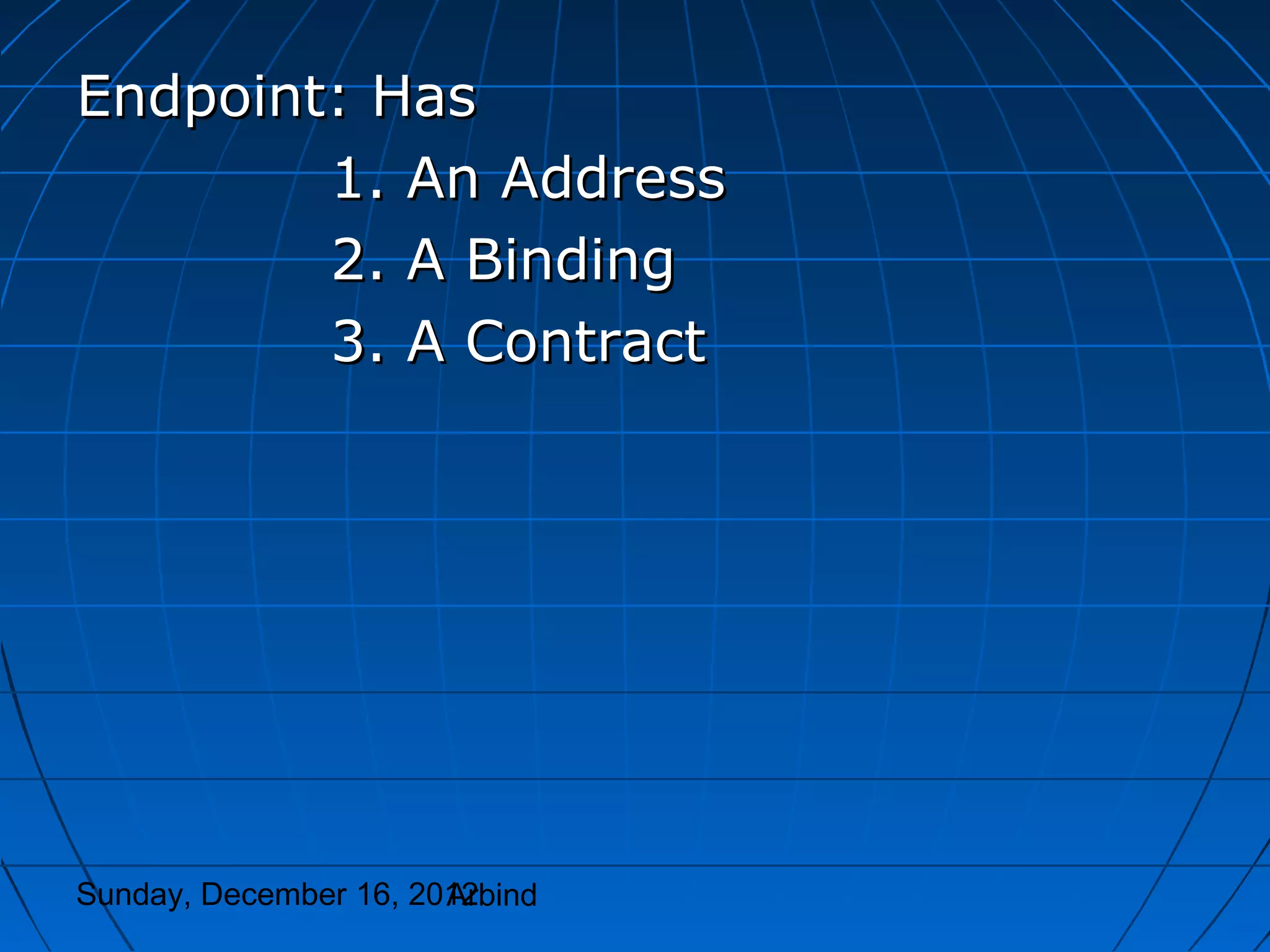
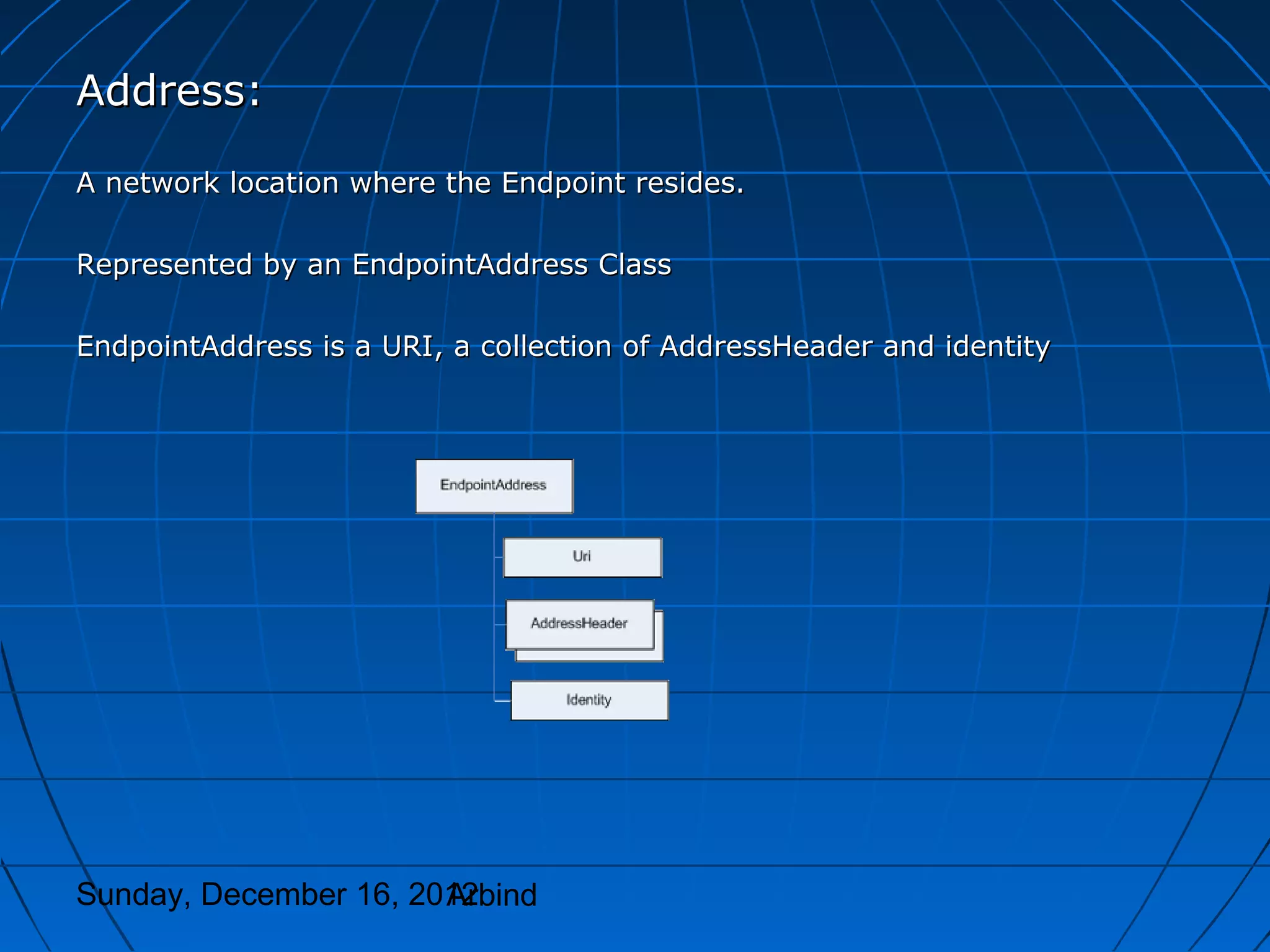
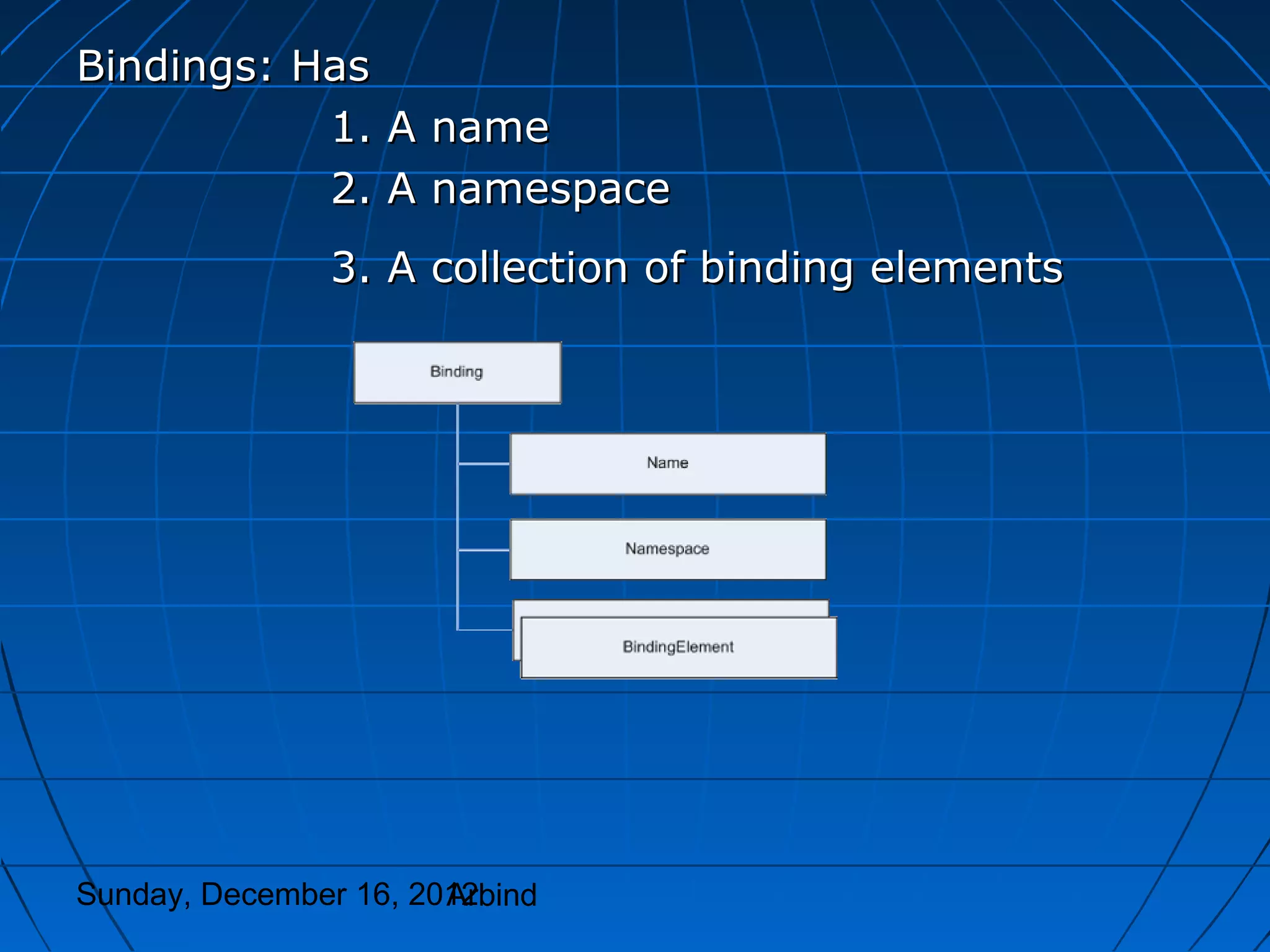
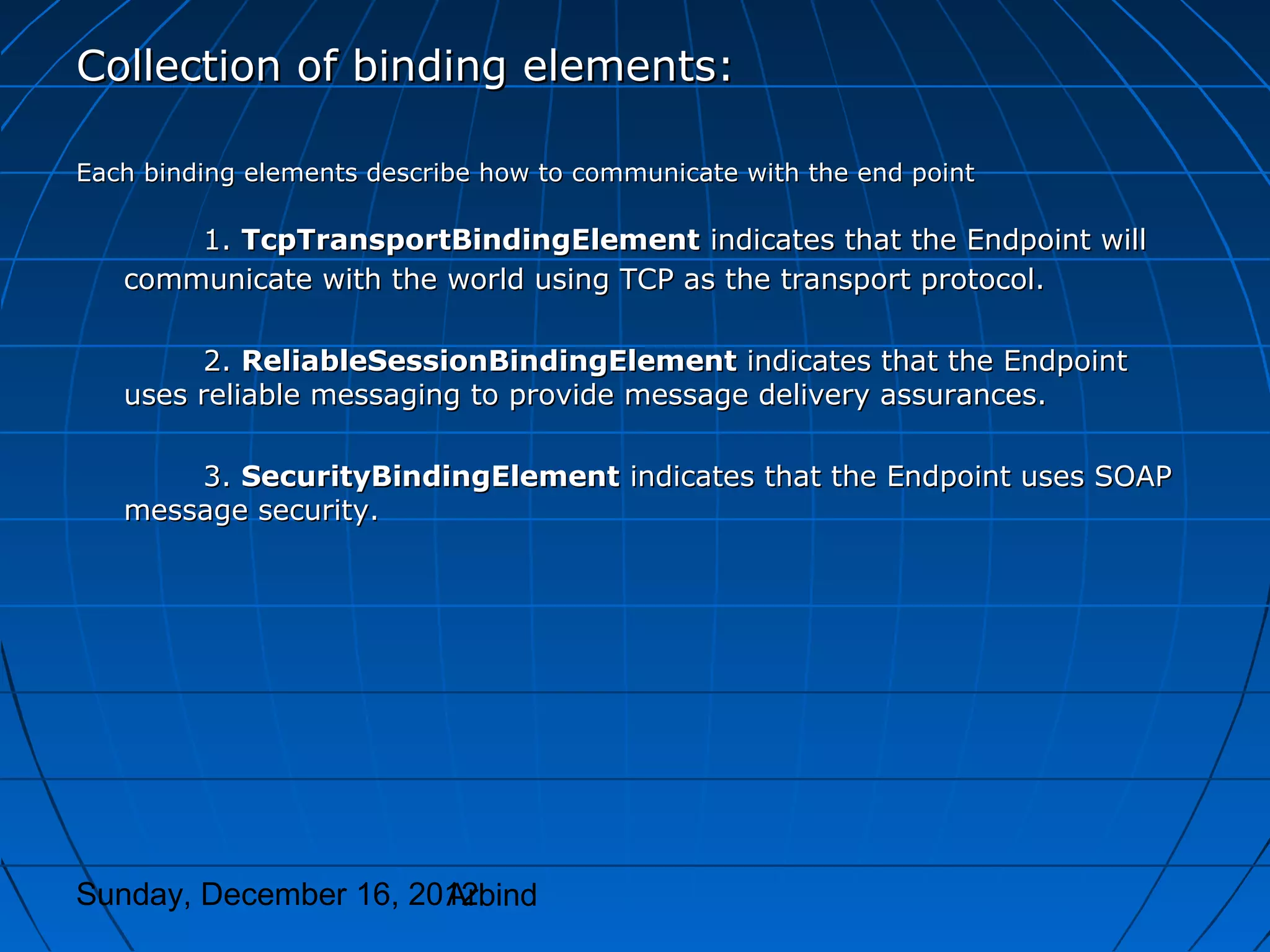
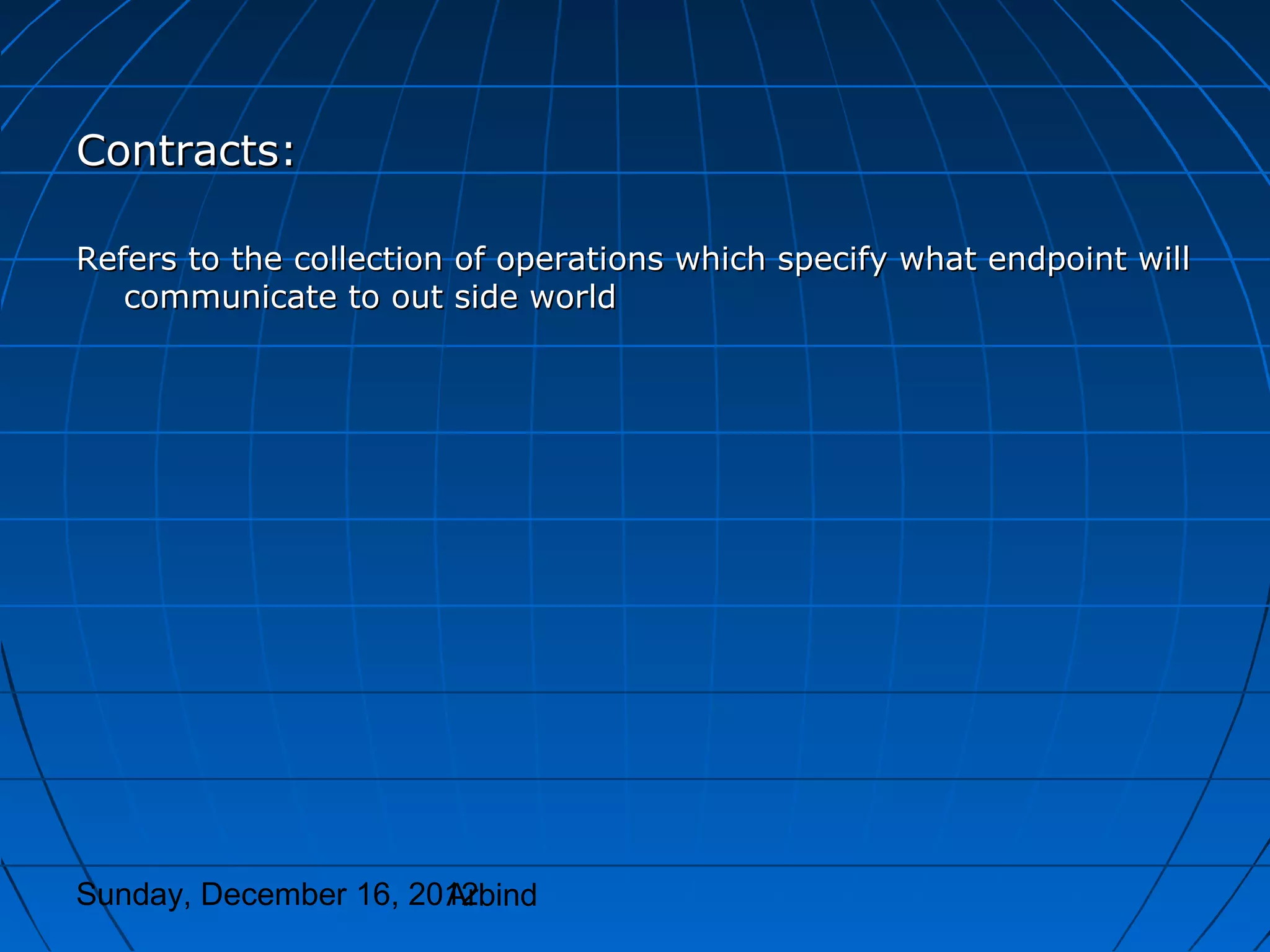
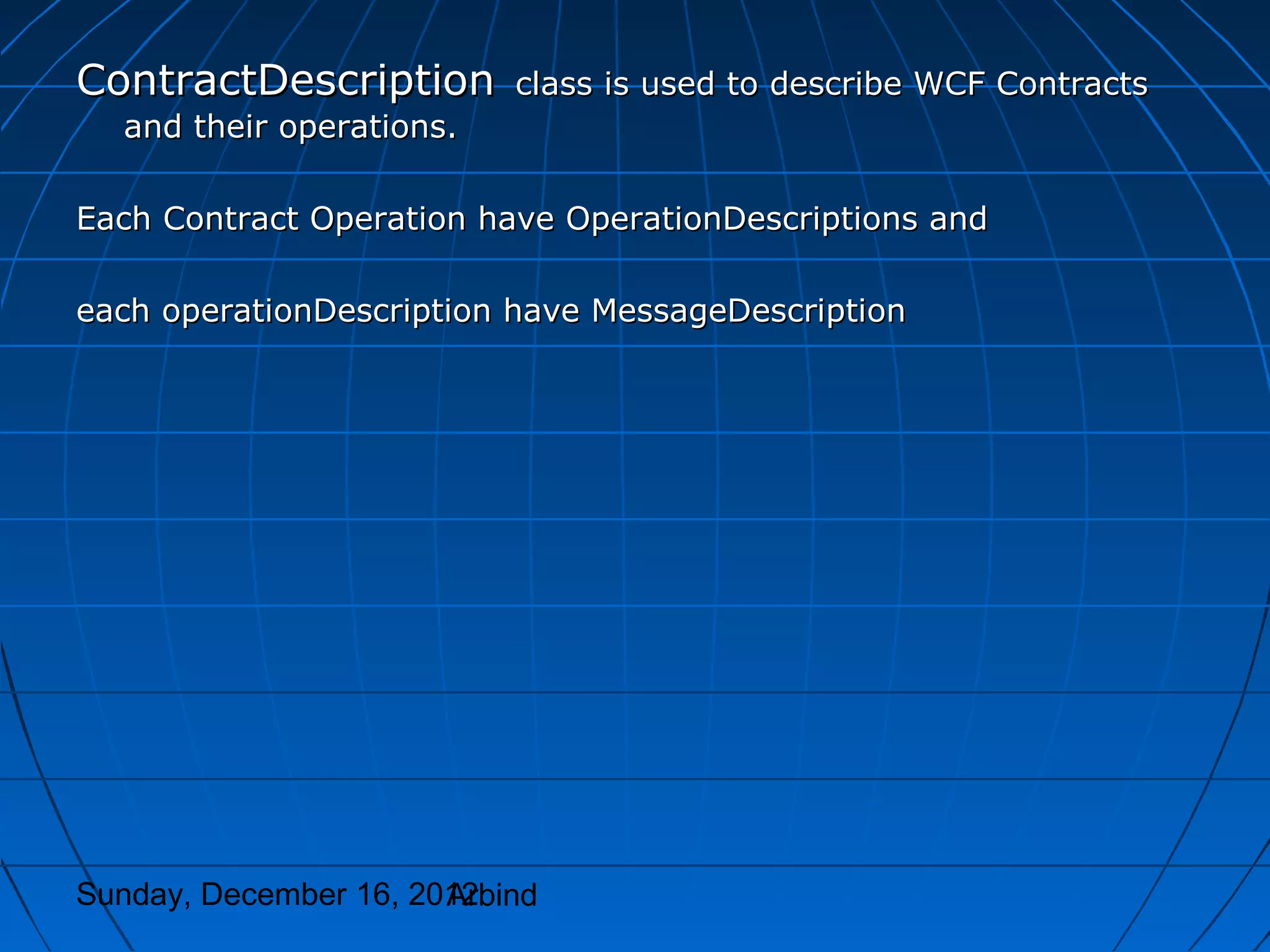
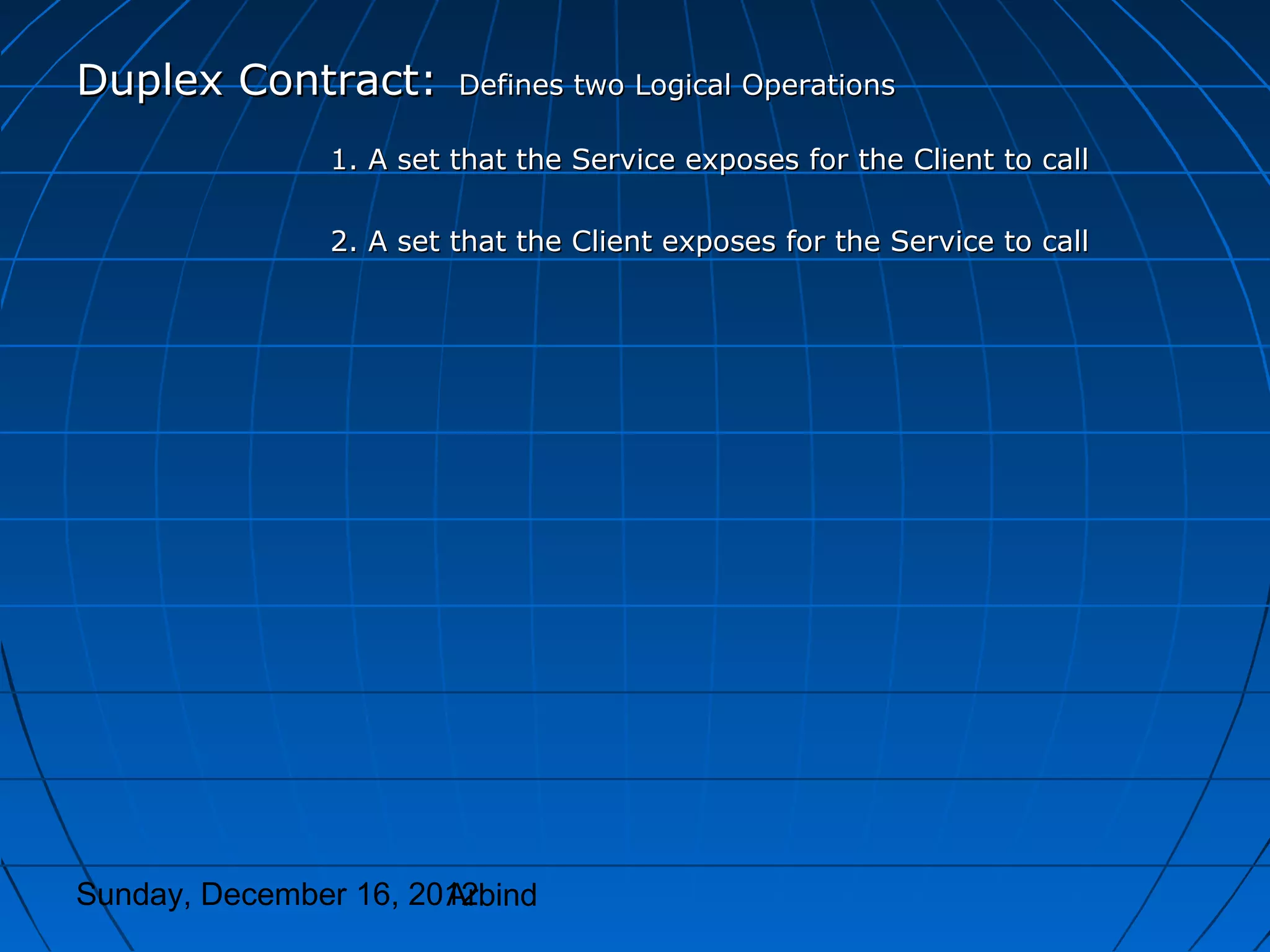
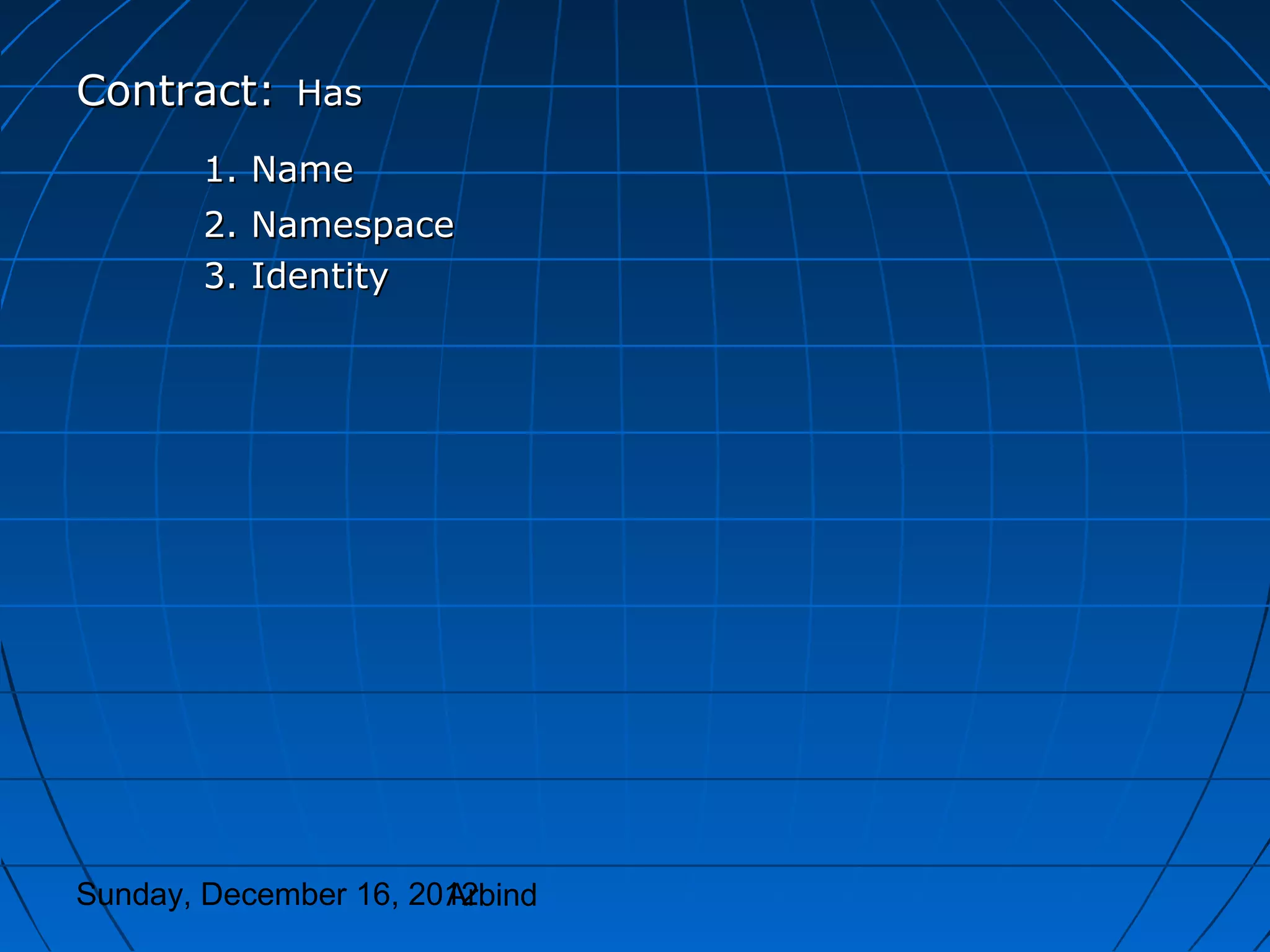
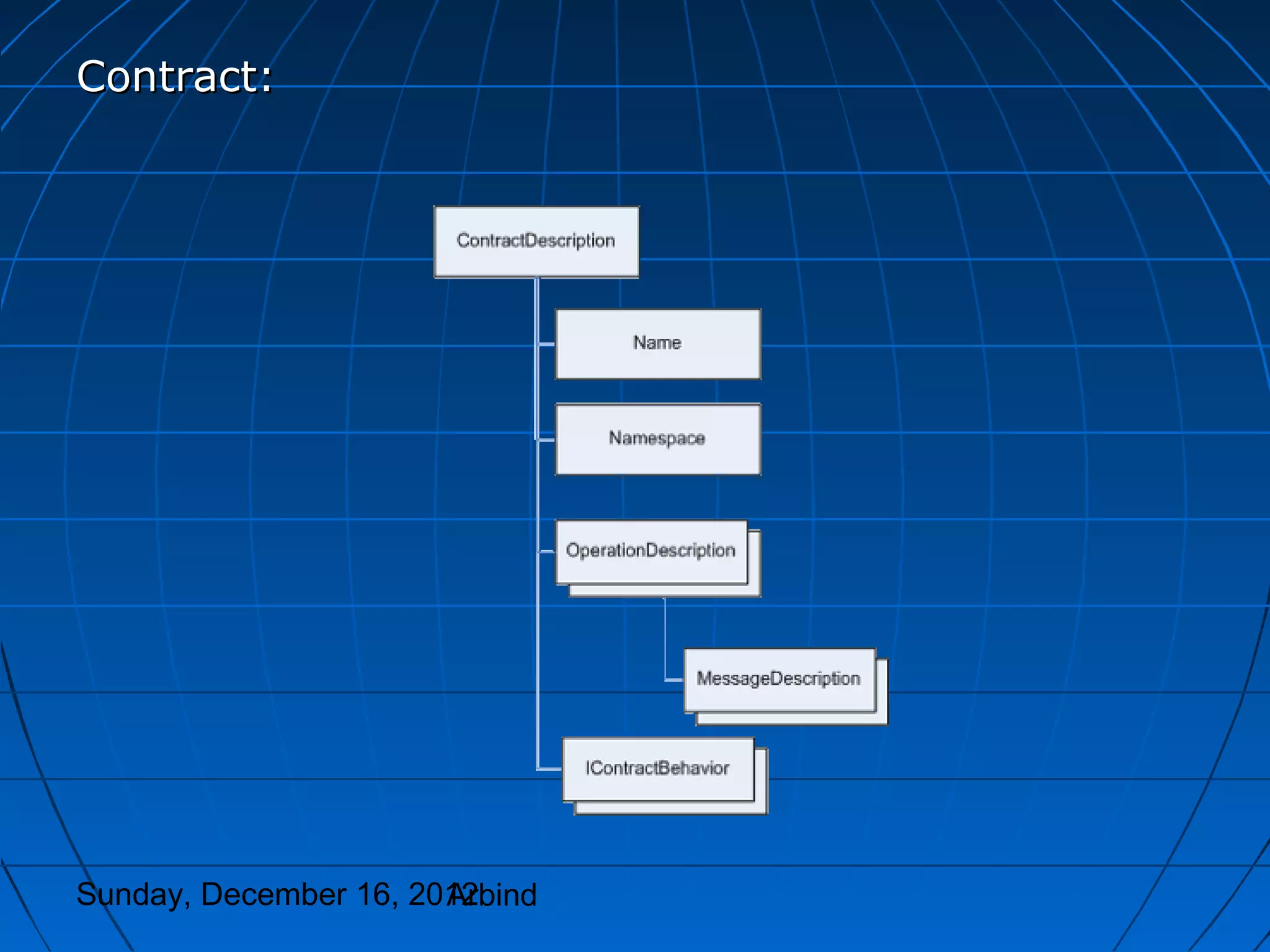
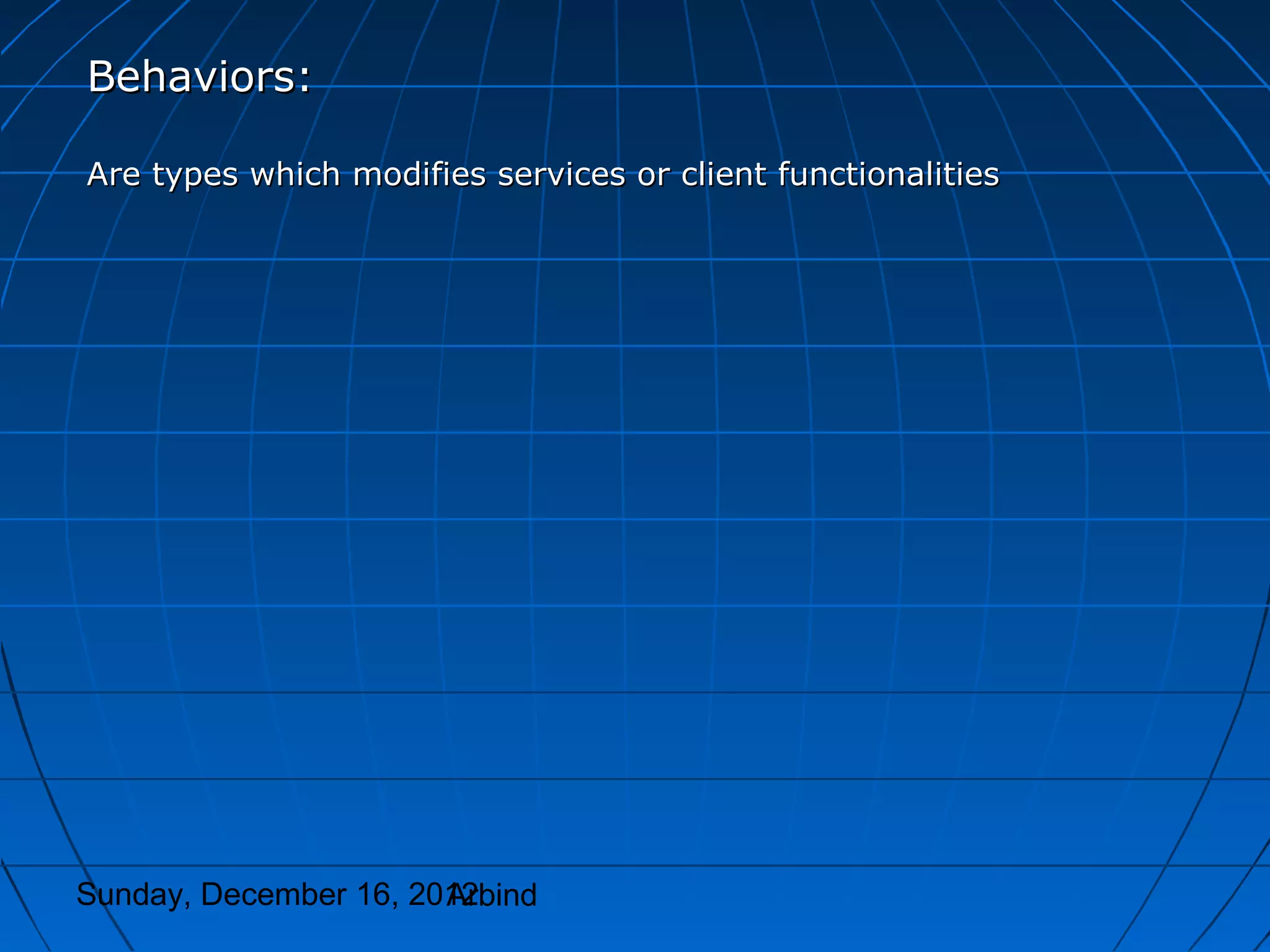
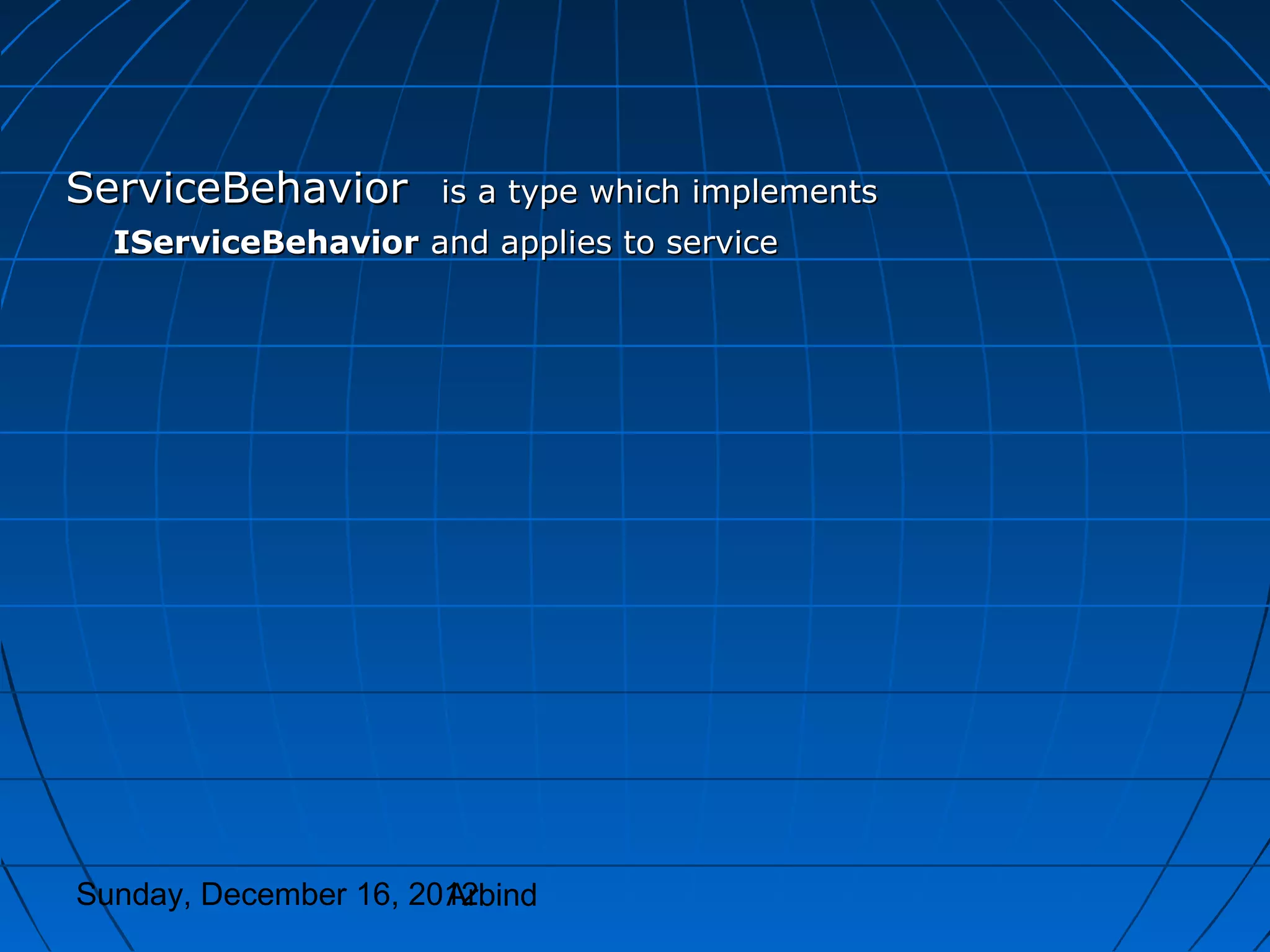
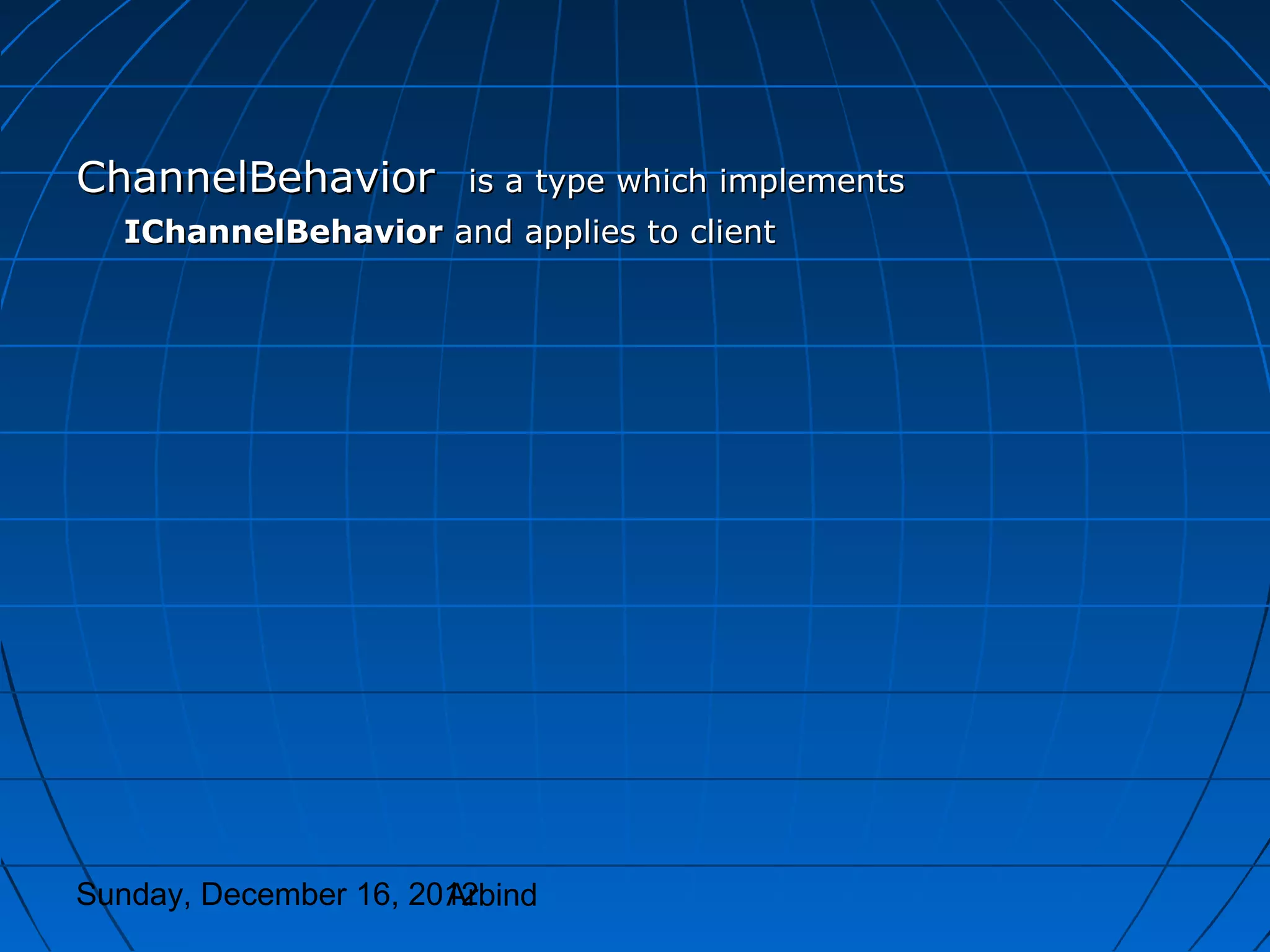
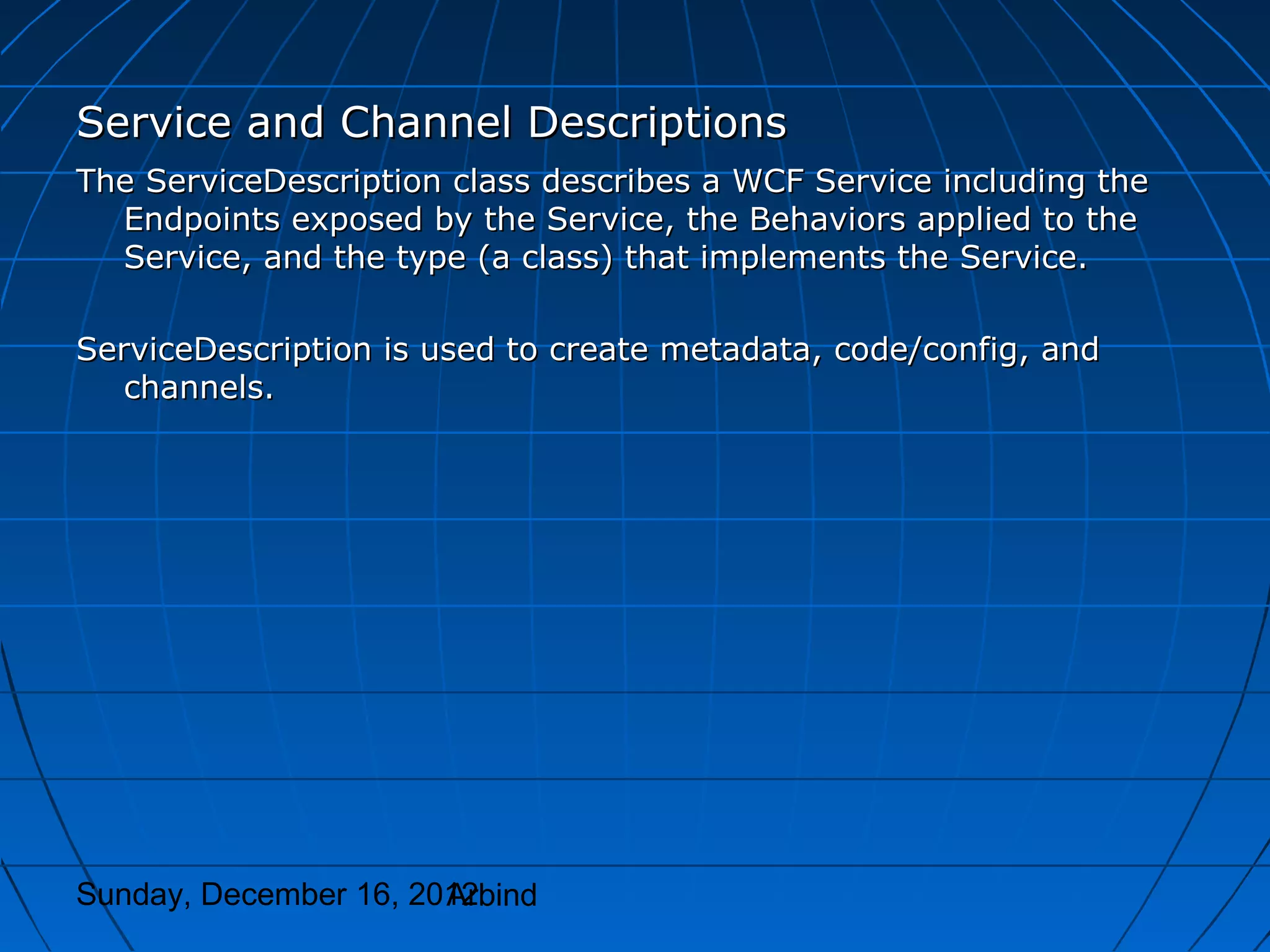
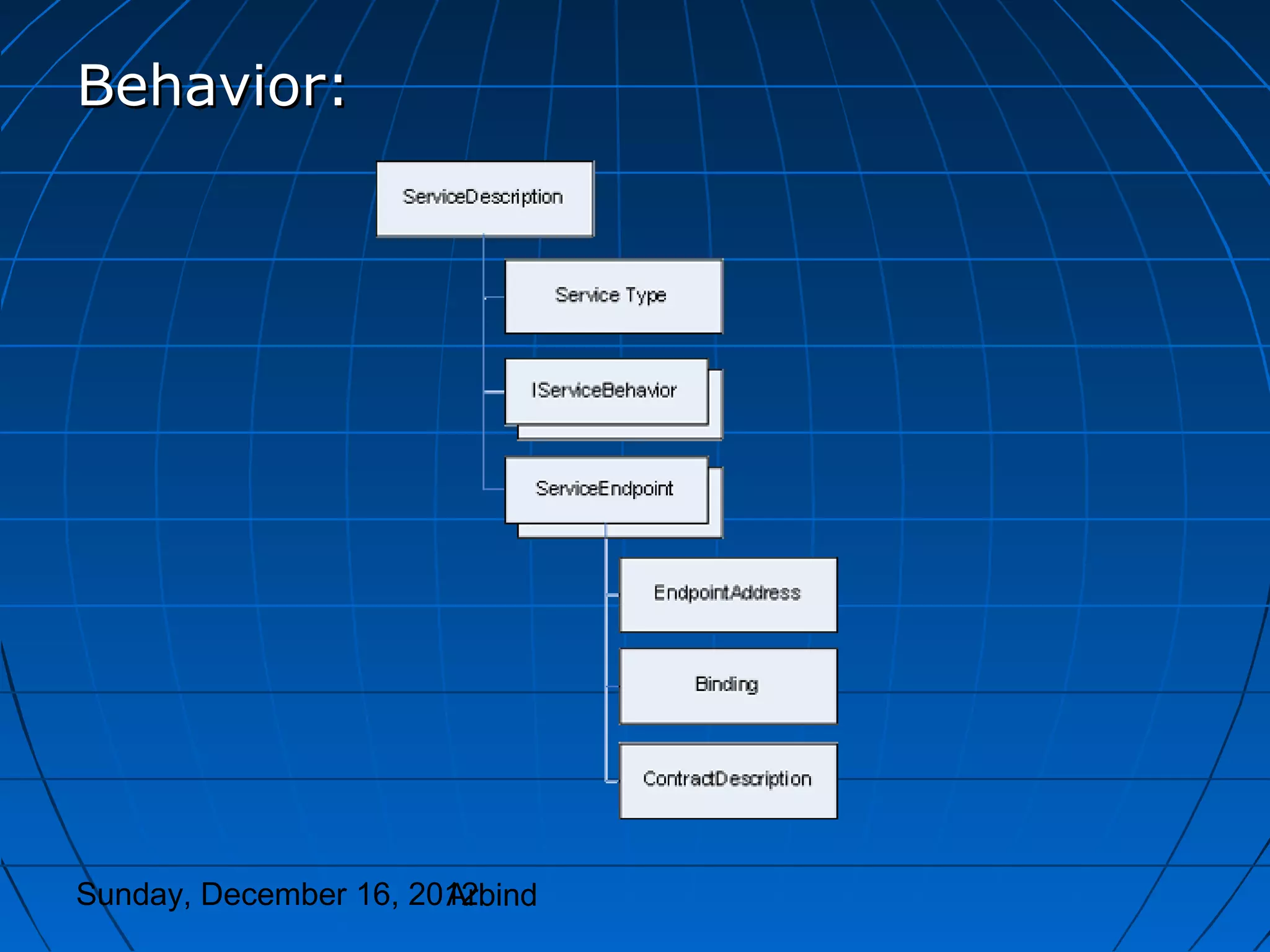
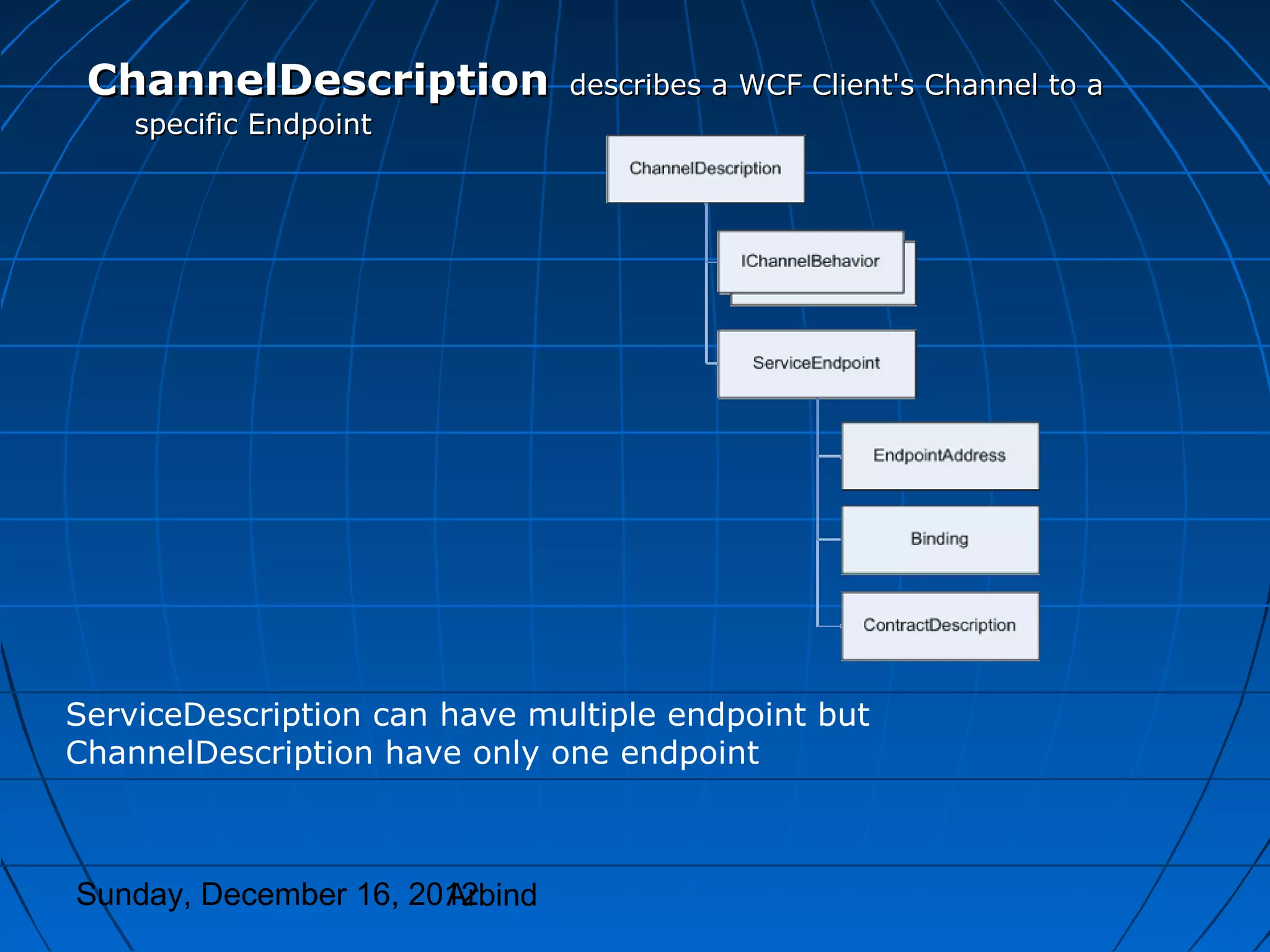
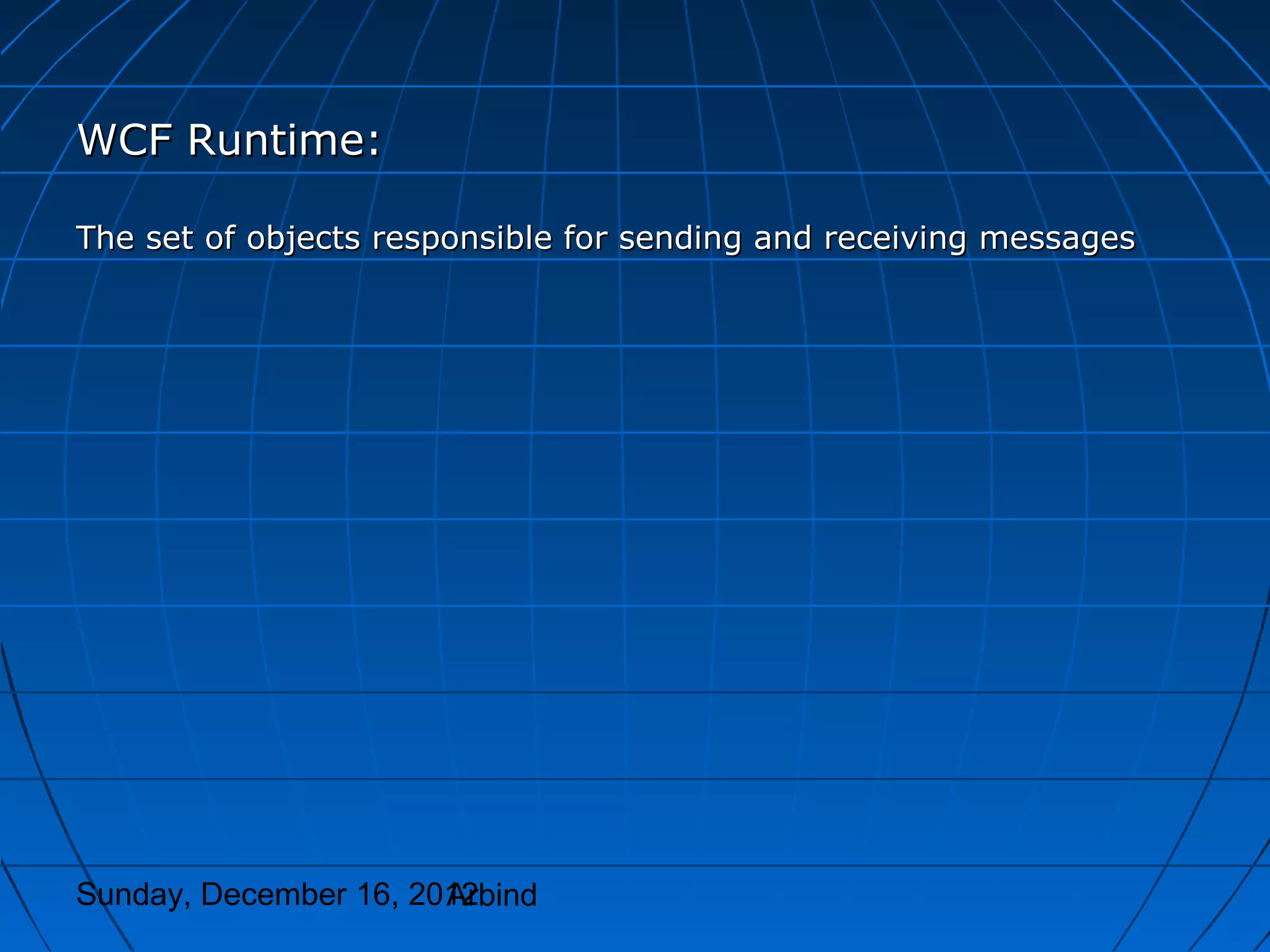
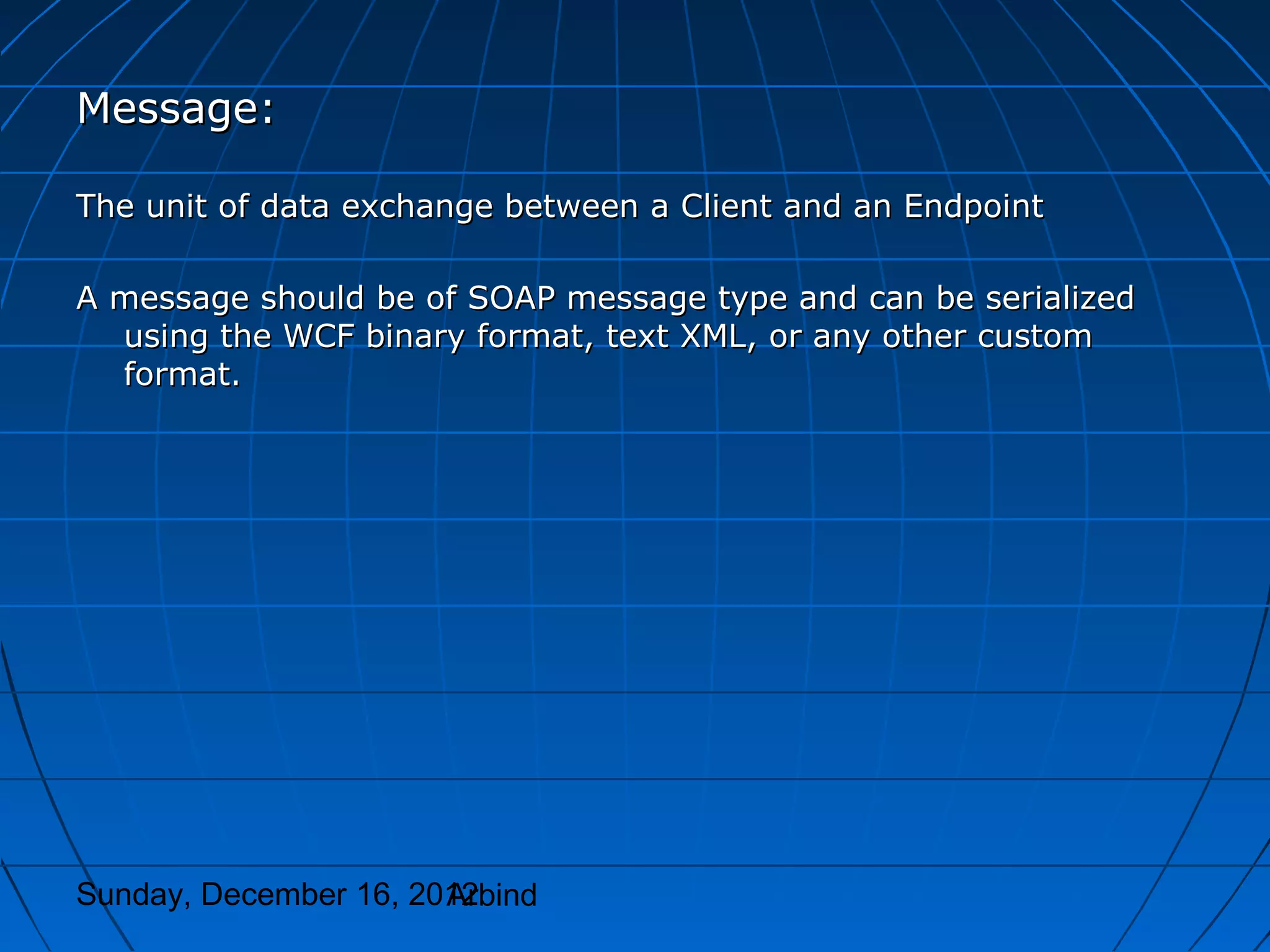
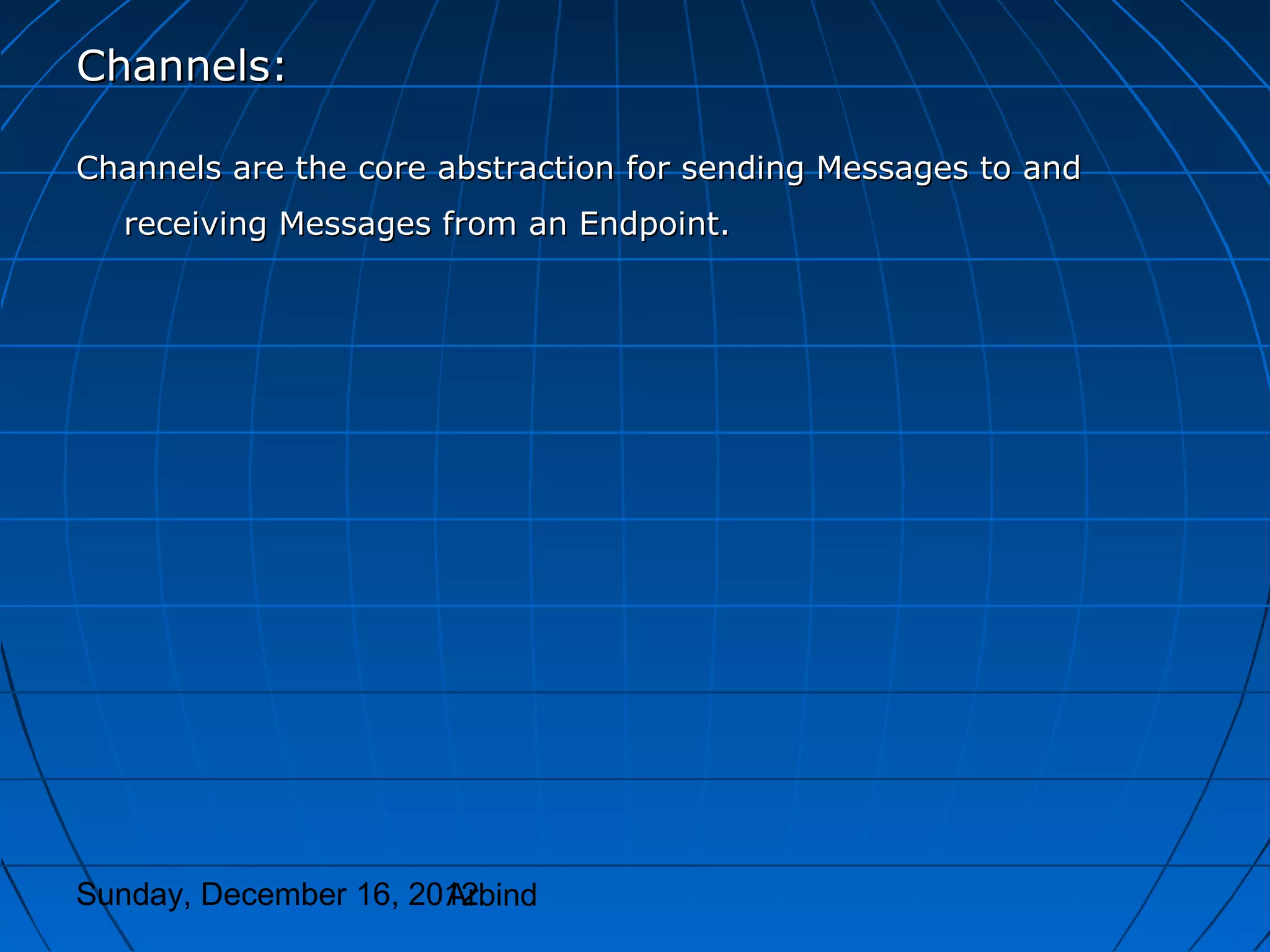
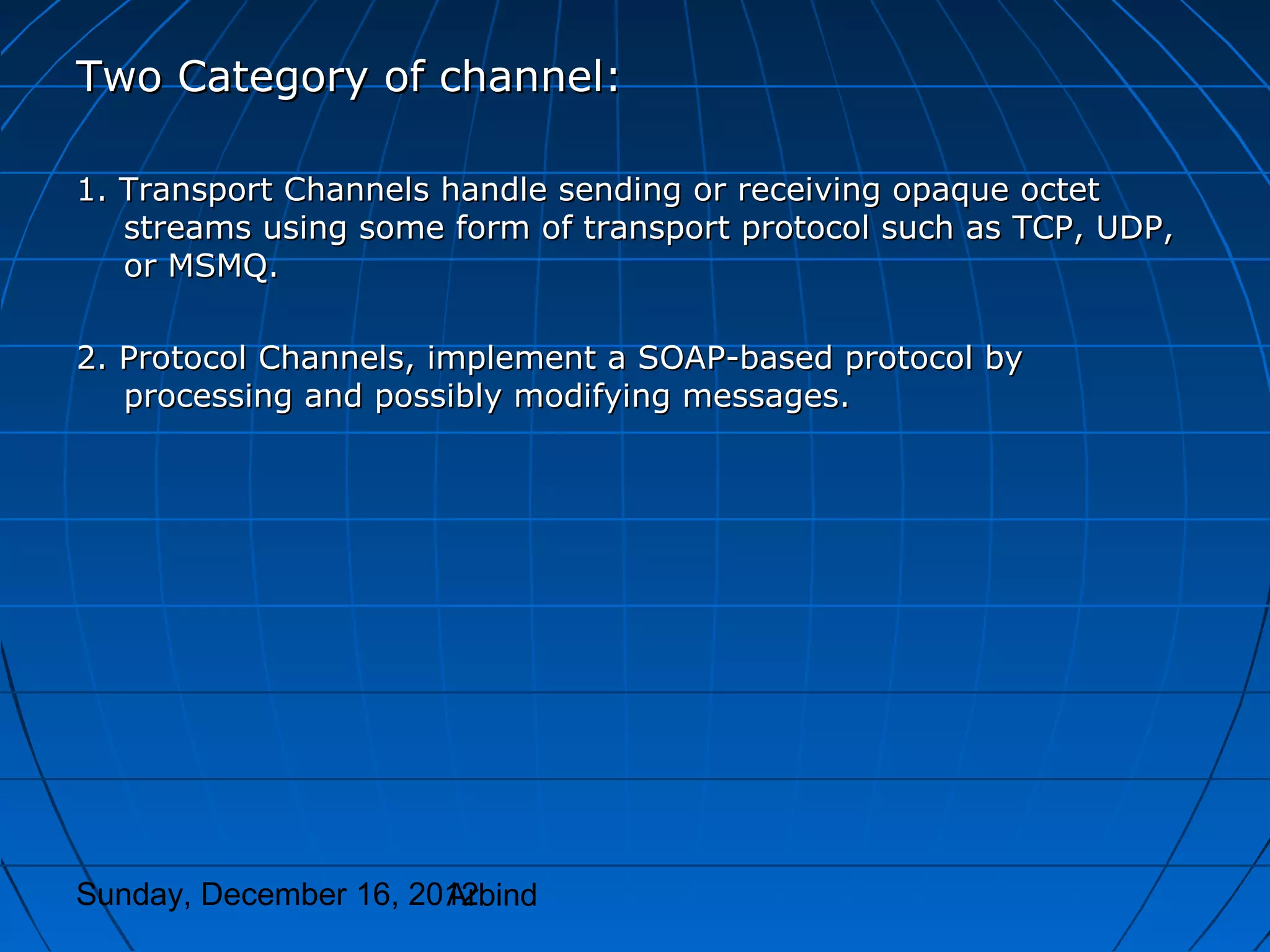
![Procedure to define WCF Service
Step1: Defining and Implementing a Contract
using System.ServiceModel;
[ServiceContract]
public interface IMath
{
[OperationContract]
int Add(int x, int y);
}
Step2: Define a service class
This contract (interface IMath) is implemented to a class which becomes a
service class
public class MathService : IMath
{
public int Add(int x, int y)
{
return x + y;
}
}
Sunday, December 16, 2012
Arbind](https://image.slidesharecdn.com/wcfarchitectureoverview-121216000459-phpapp01/75/Wcf-architecture-overview-23-2048.jpg)
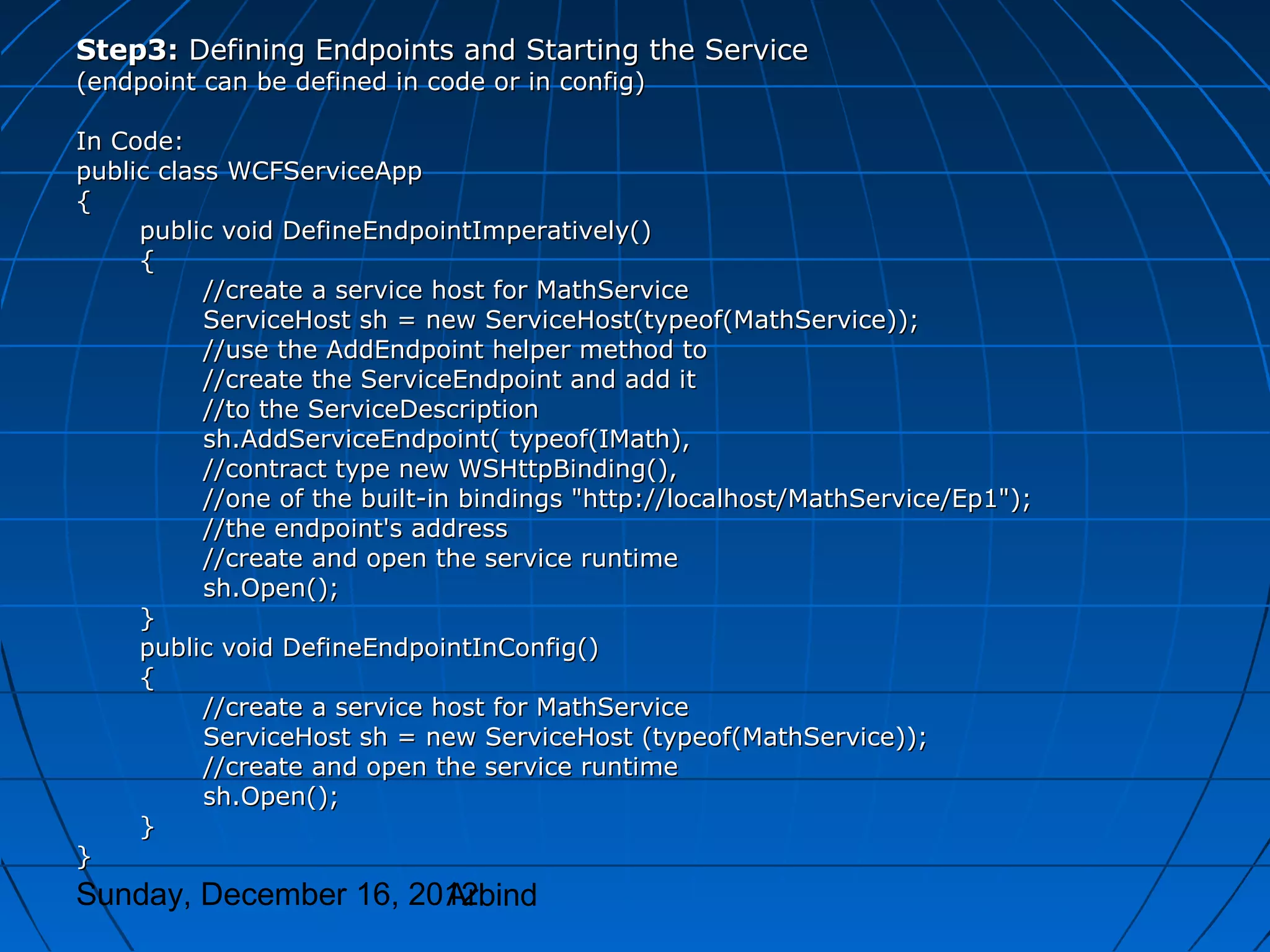
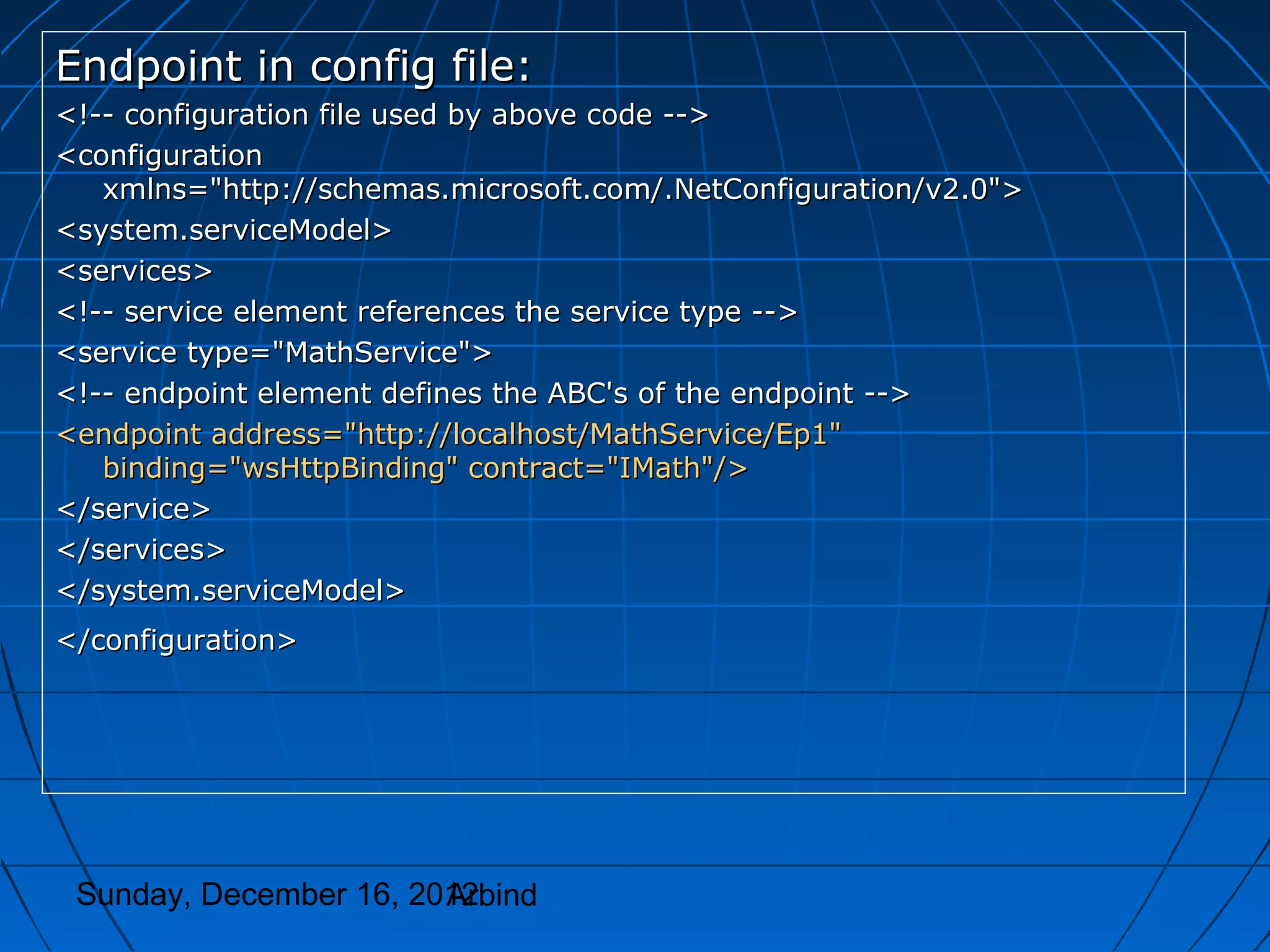
![Step4: Sending Messages to the Endpoint
using System.ServiceModel;
//this contract is generated by svcutil.exe
//from the service's metadata
public interface IMath
{
[OperationContract]
public int Add(int x, int y)
{
return x + y;
}
}
//this class is generated by svcutil.exe
//from the service's metadata
//generated config is not shown here
public class MathProxy : IMath
{ ... }
Continue……….
Sunday, December 16, 2012
Arbind](https://image.slidesharecdn.com/wcfarchitectureoverview-121216000459-phpapp01/75/Wcf-architecture-overview-26-2048.jpg)
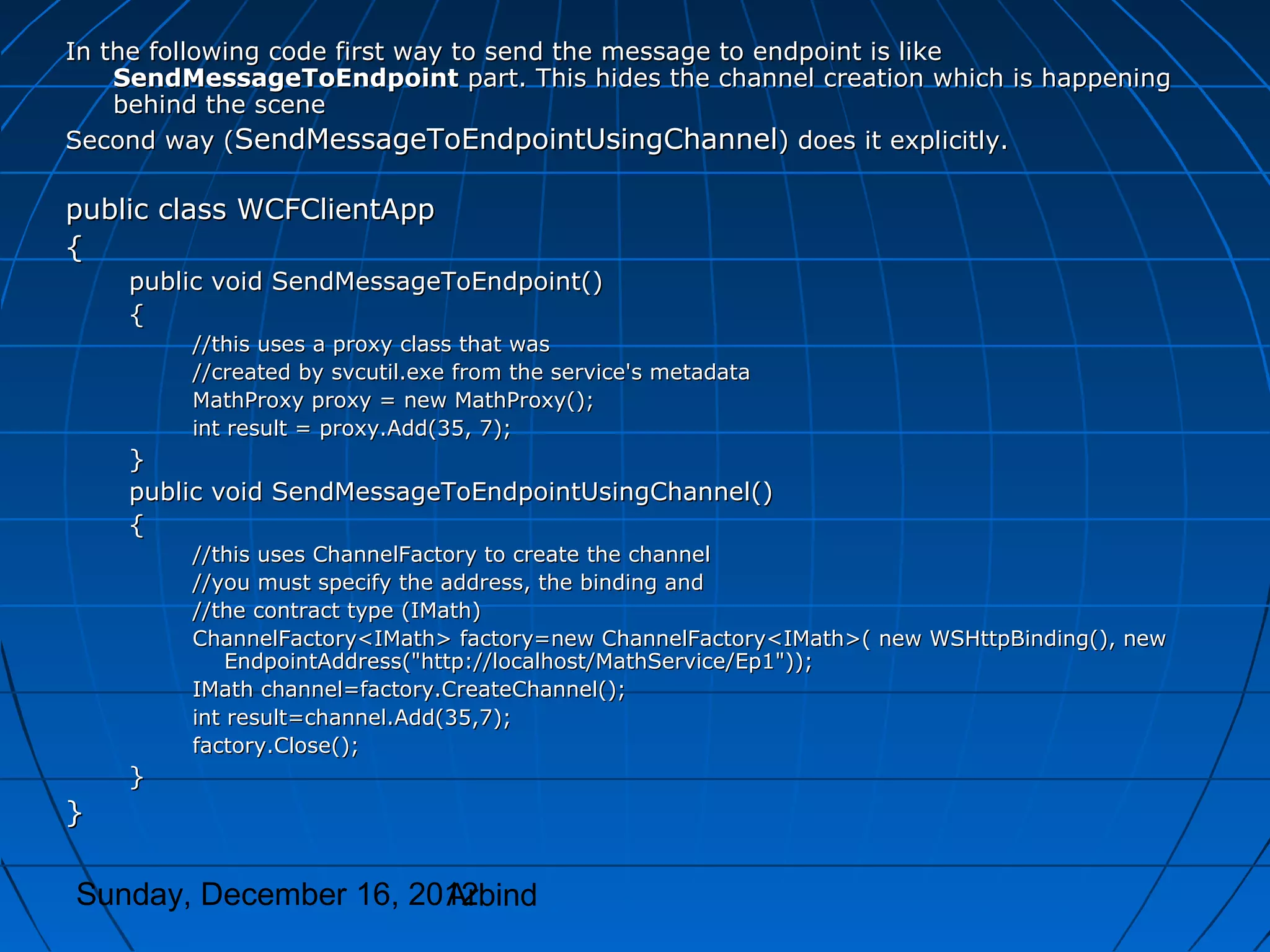
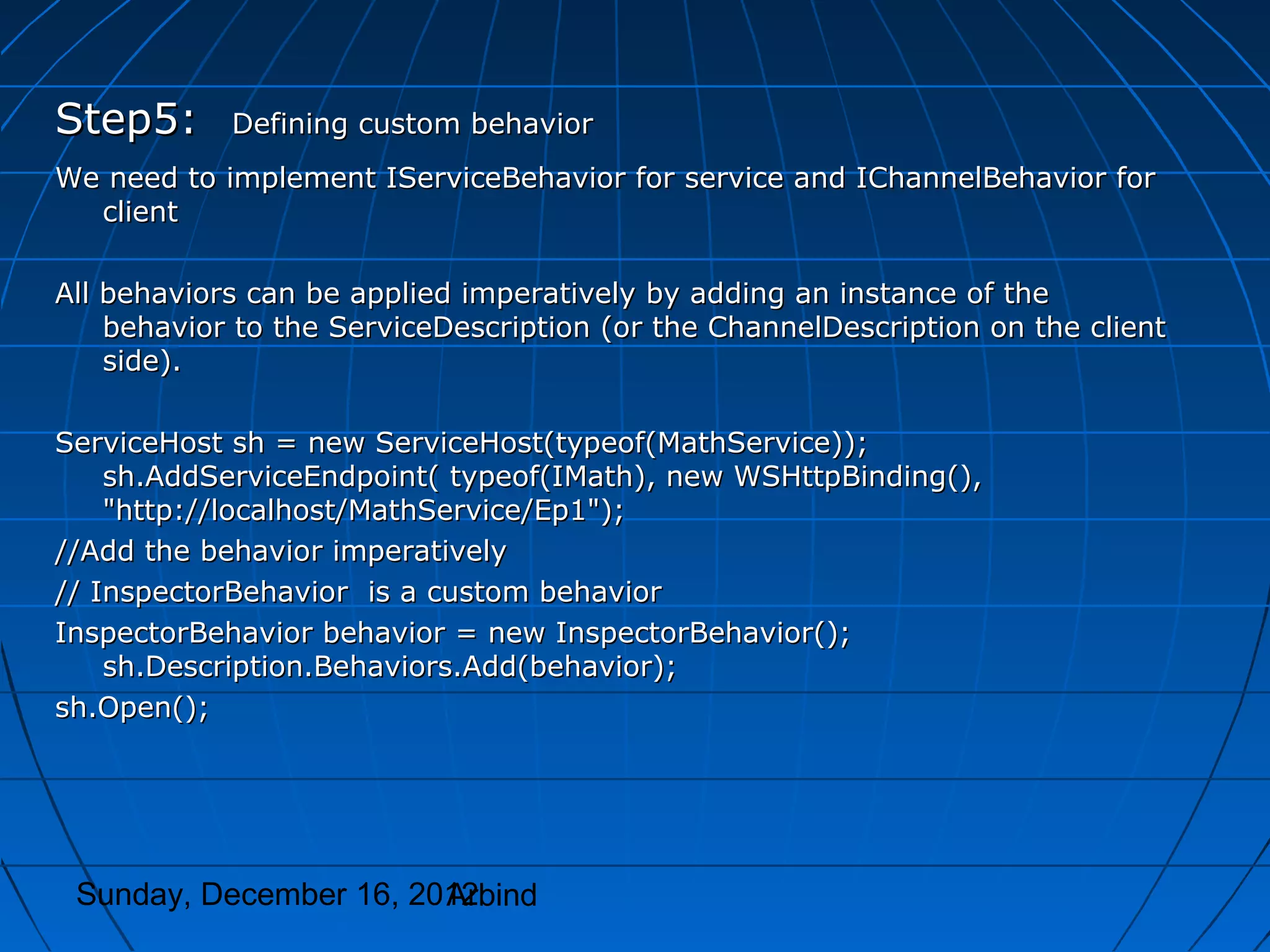
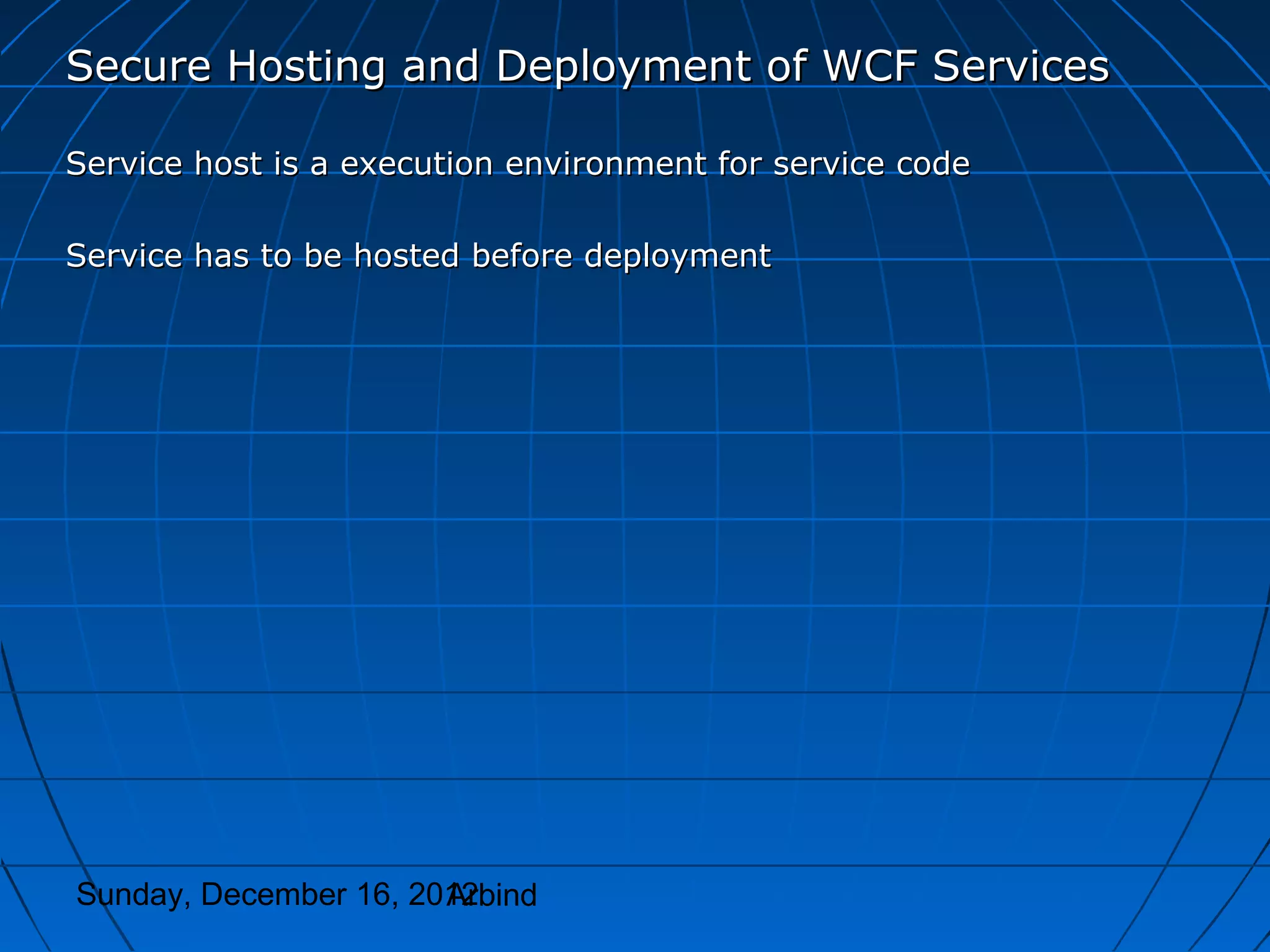
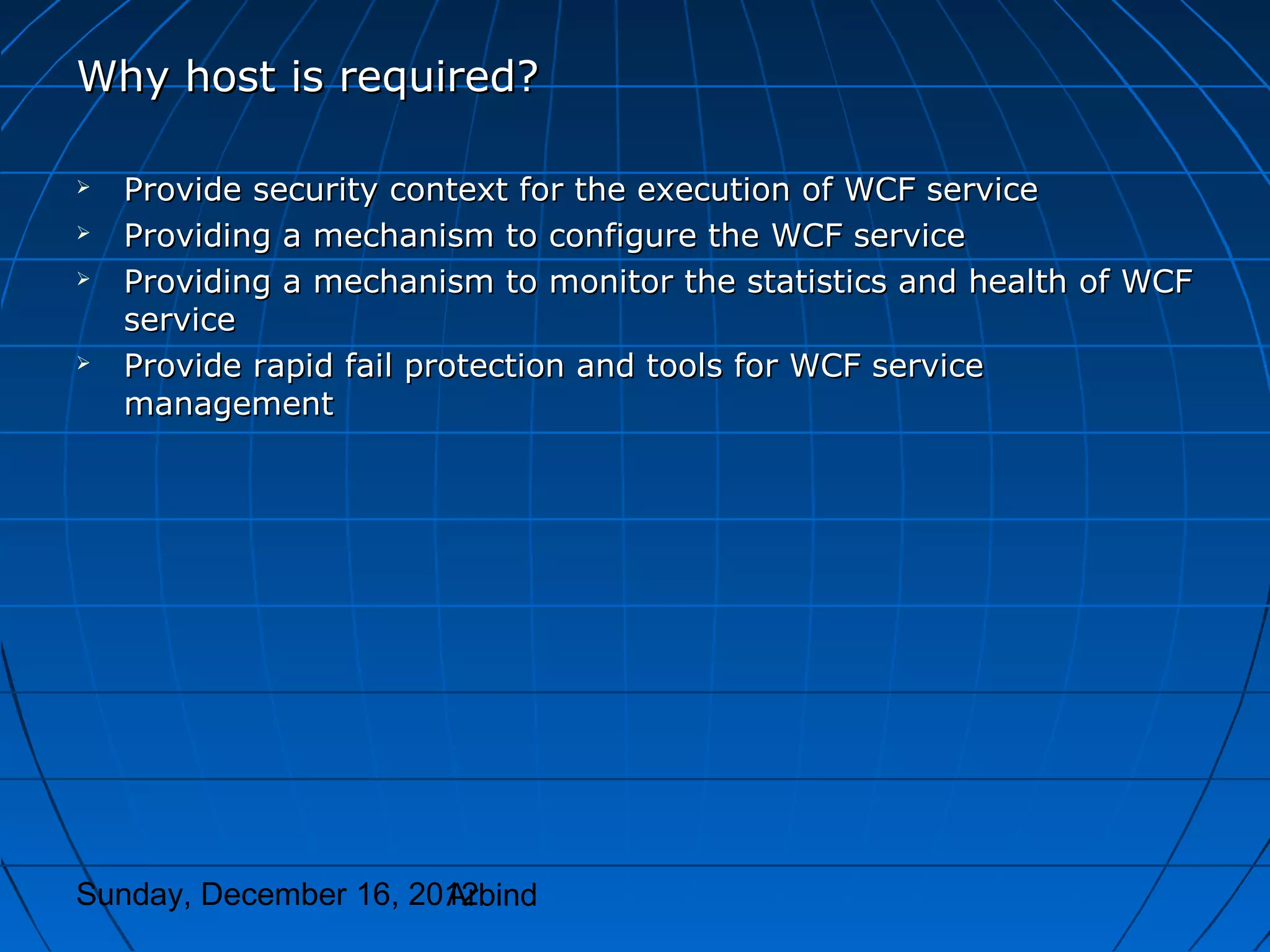
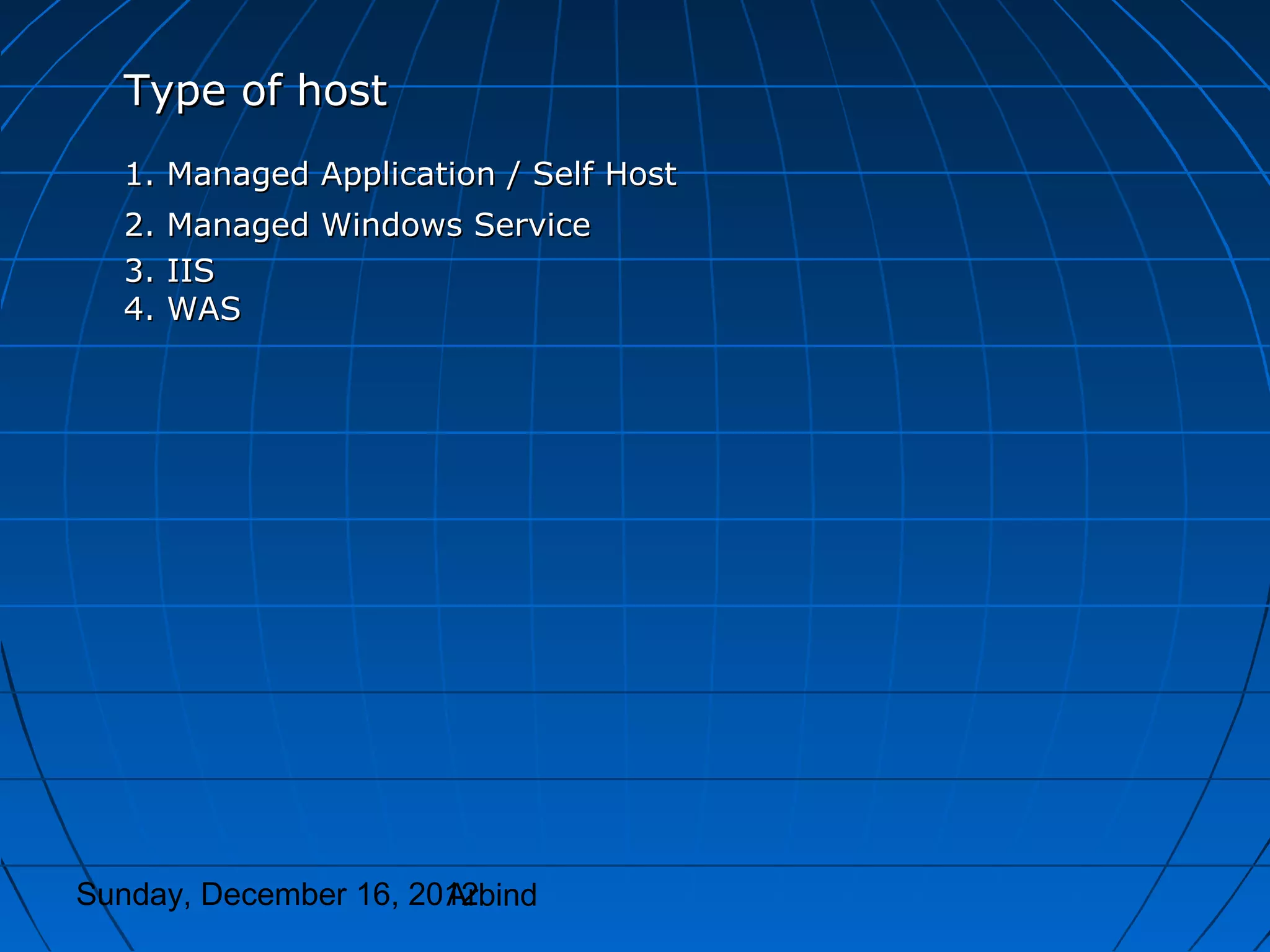
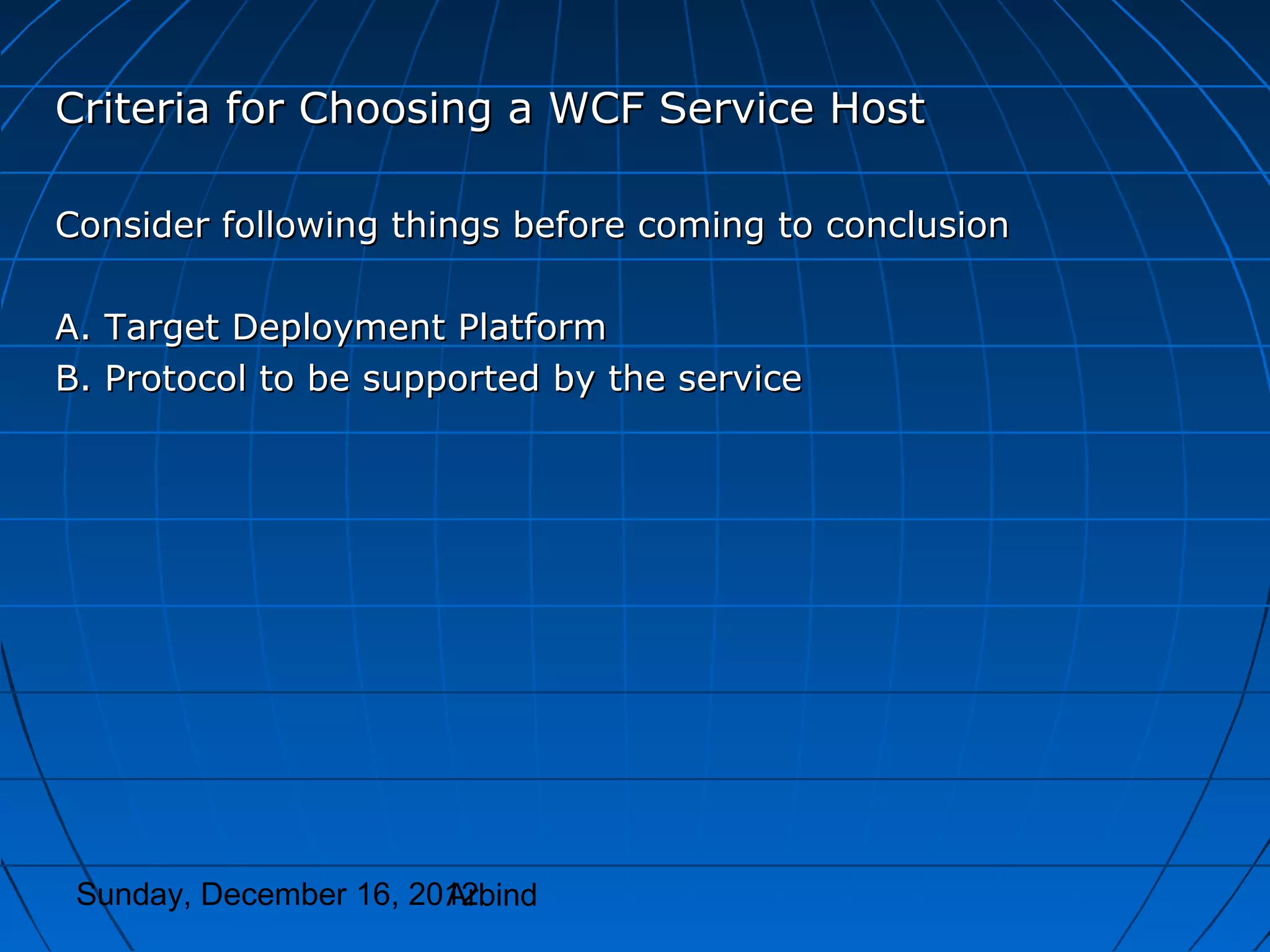
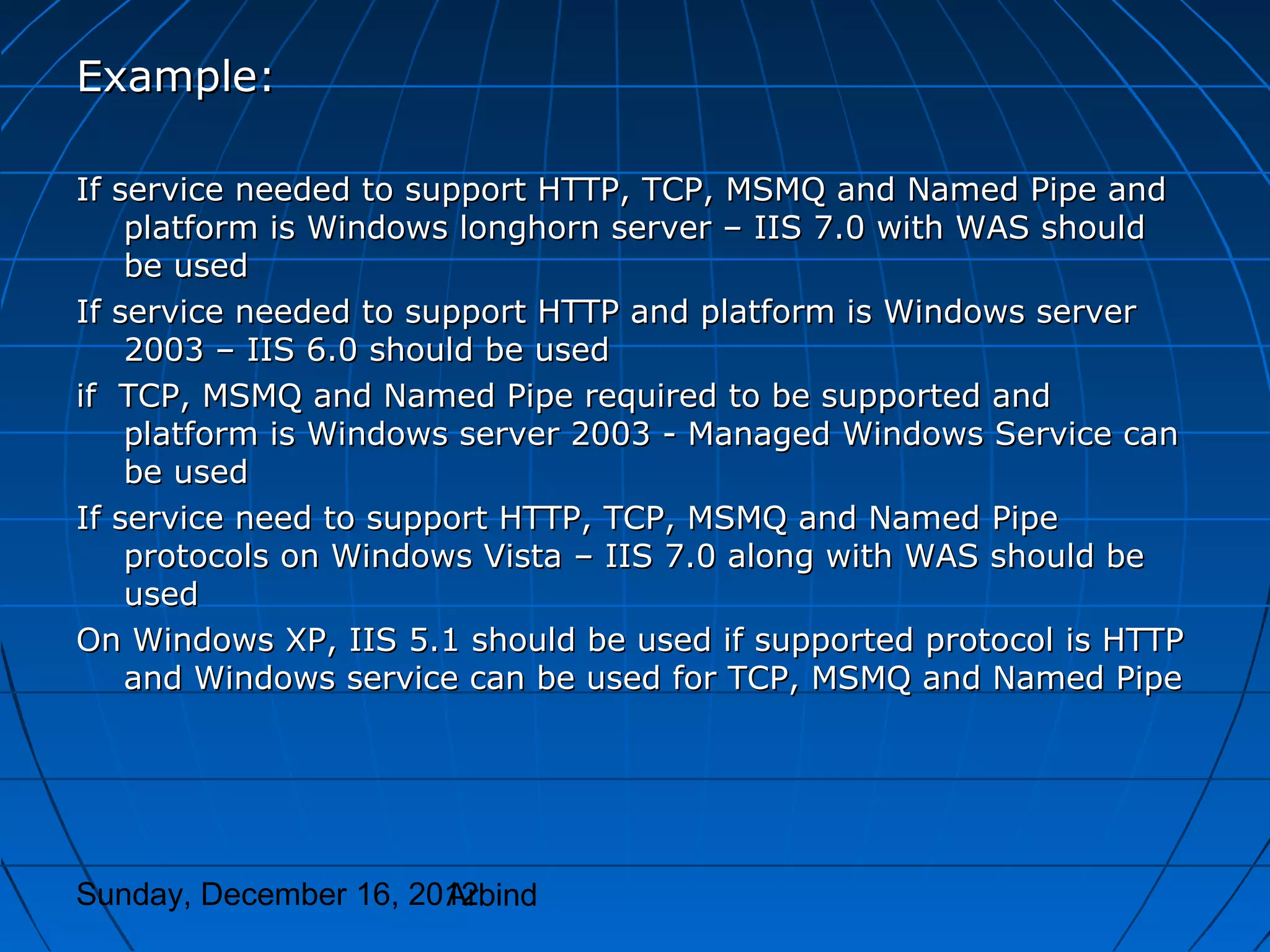
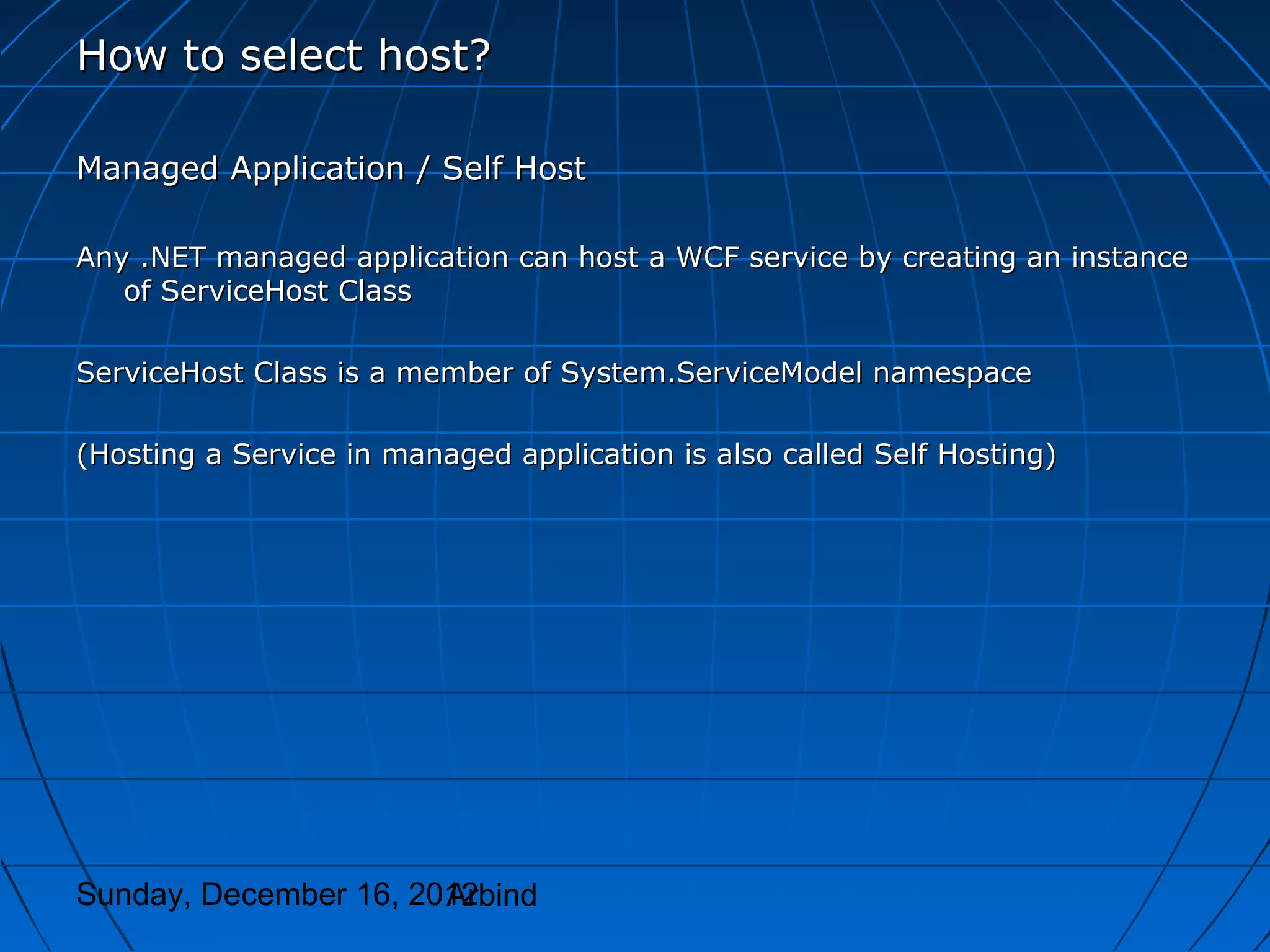
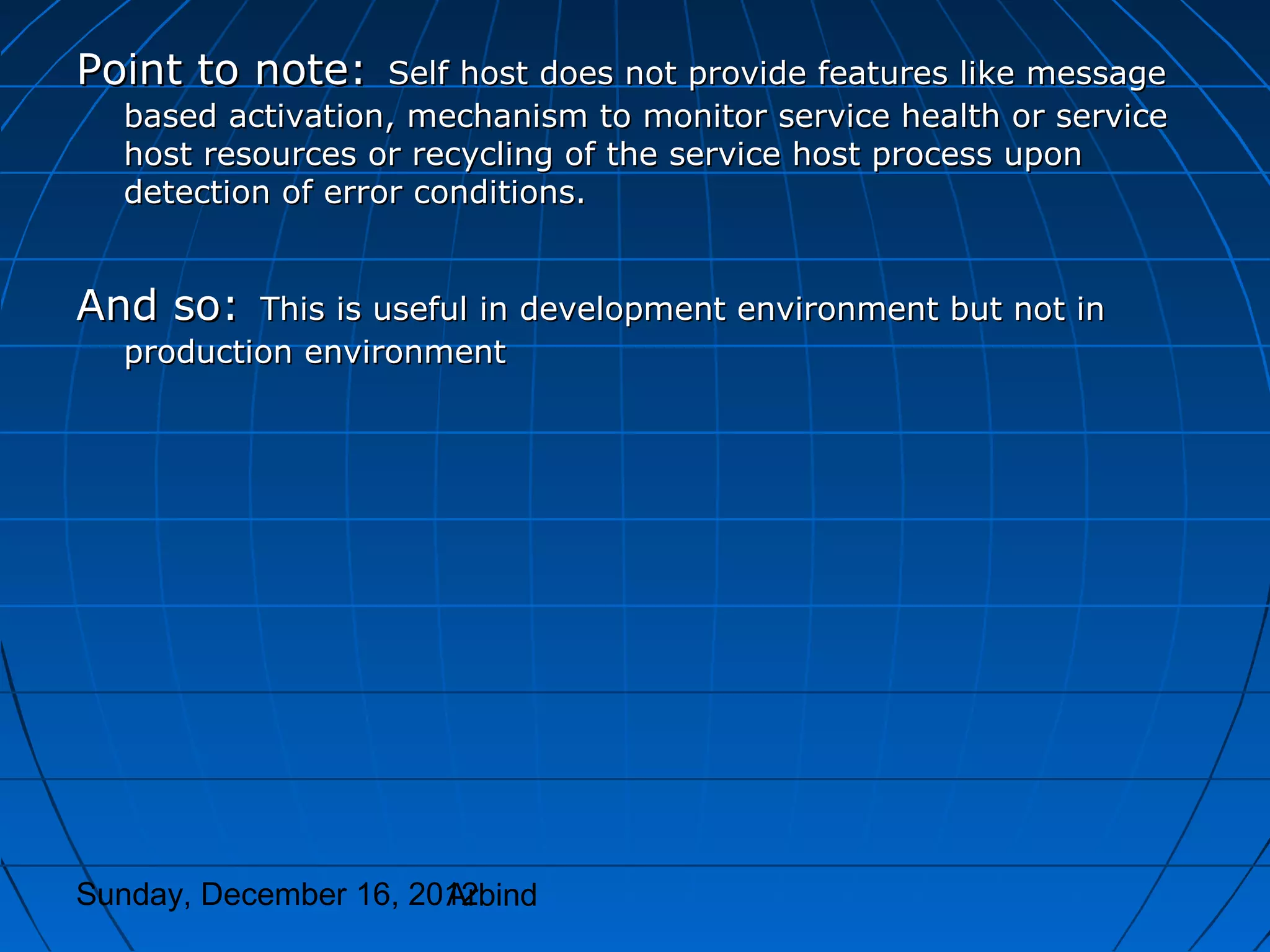
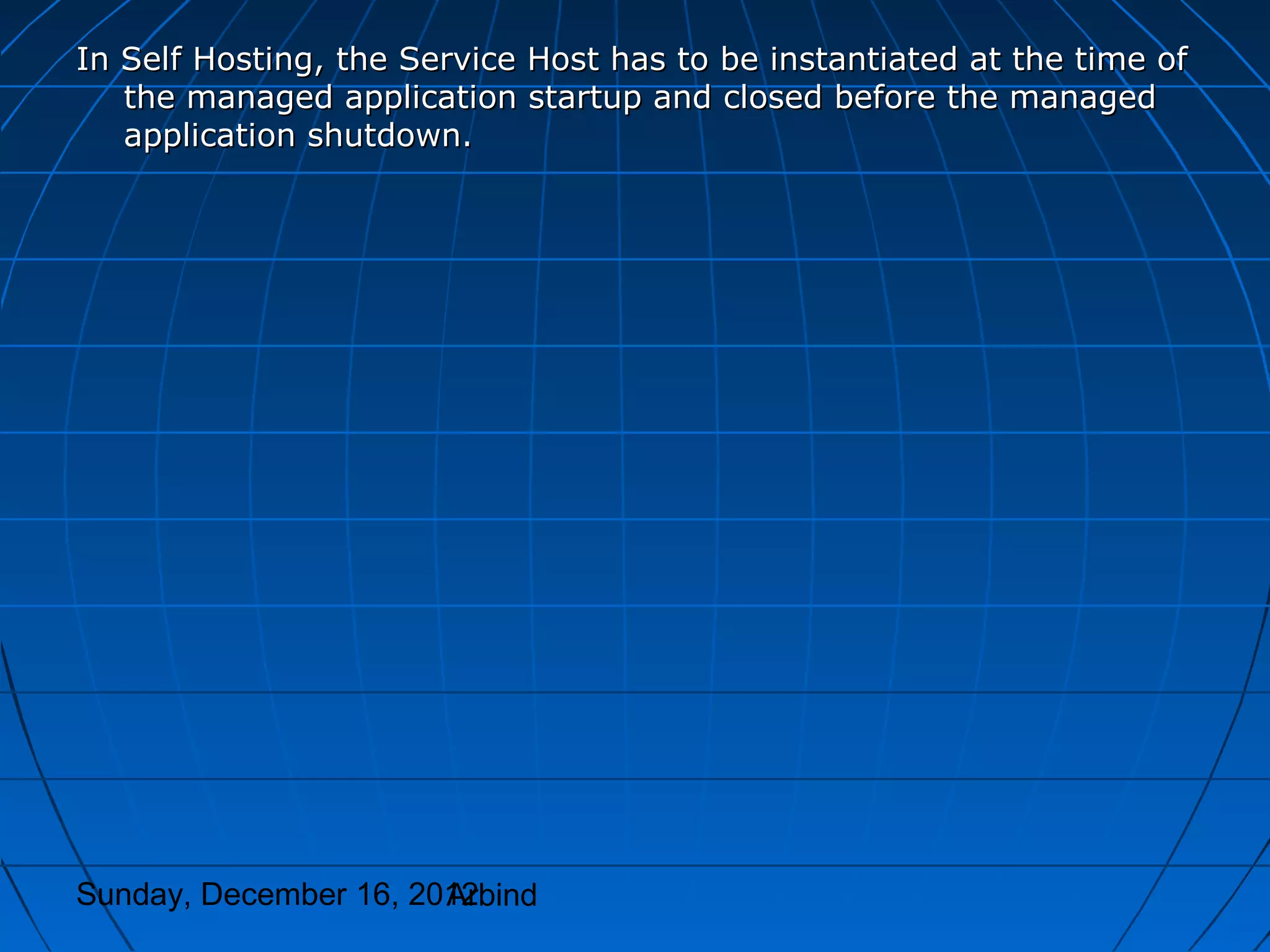
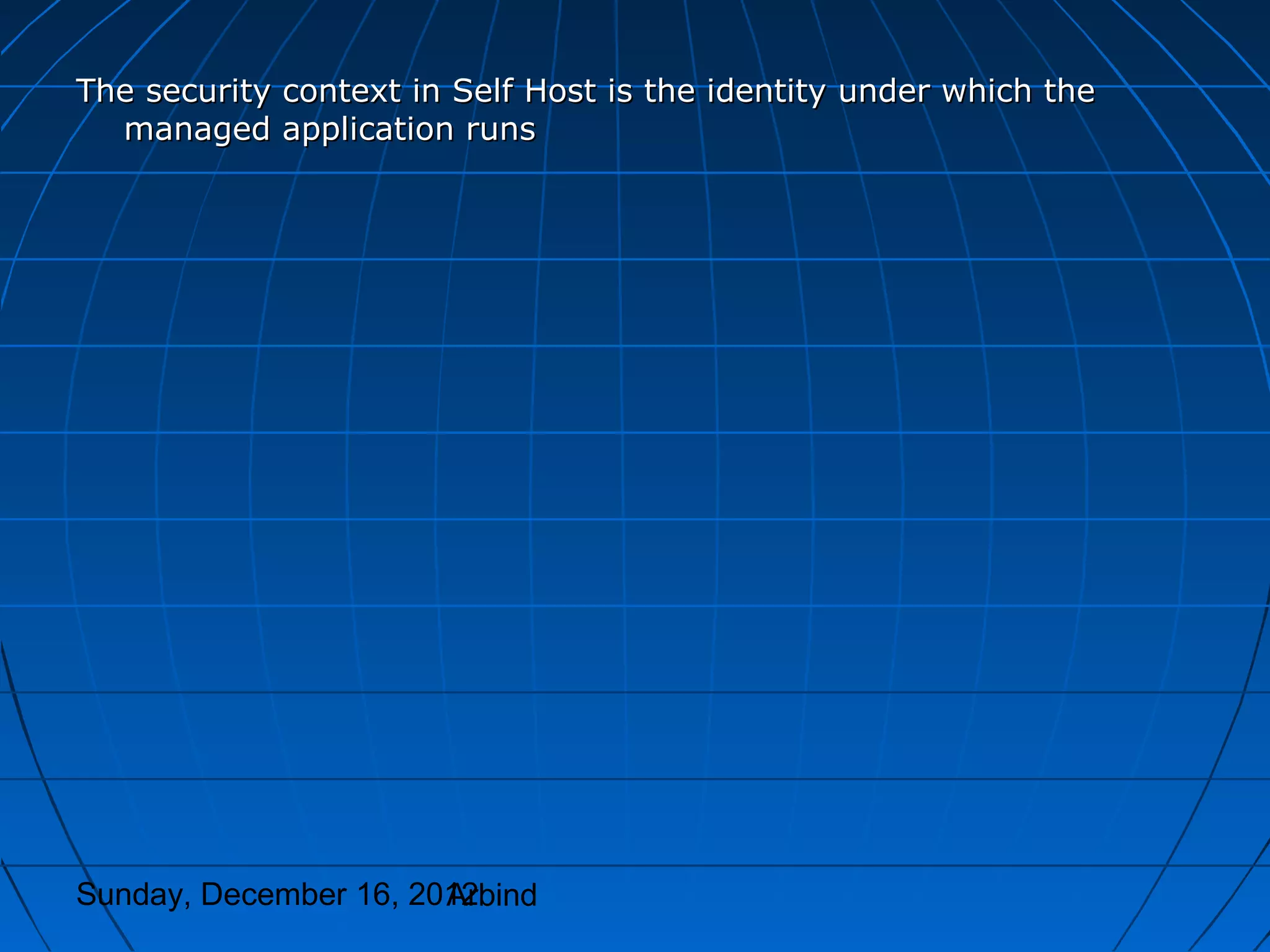
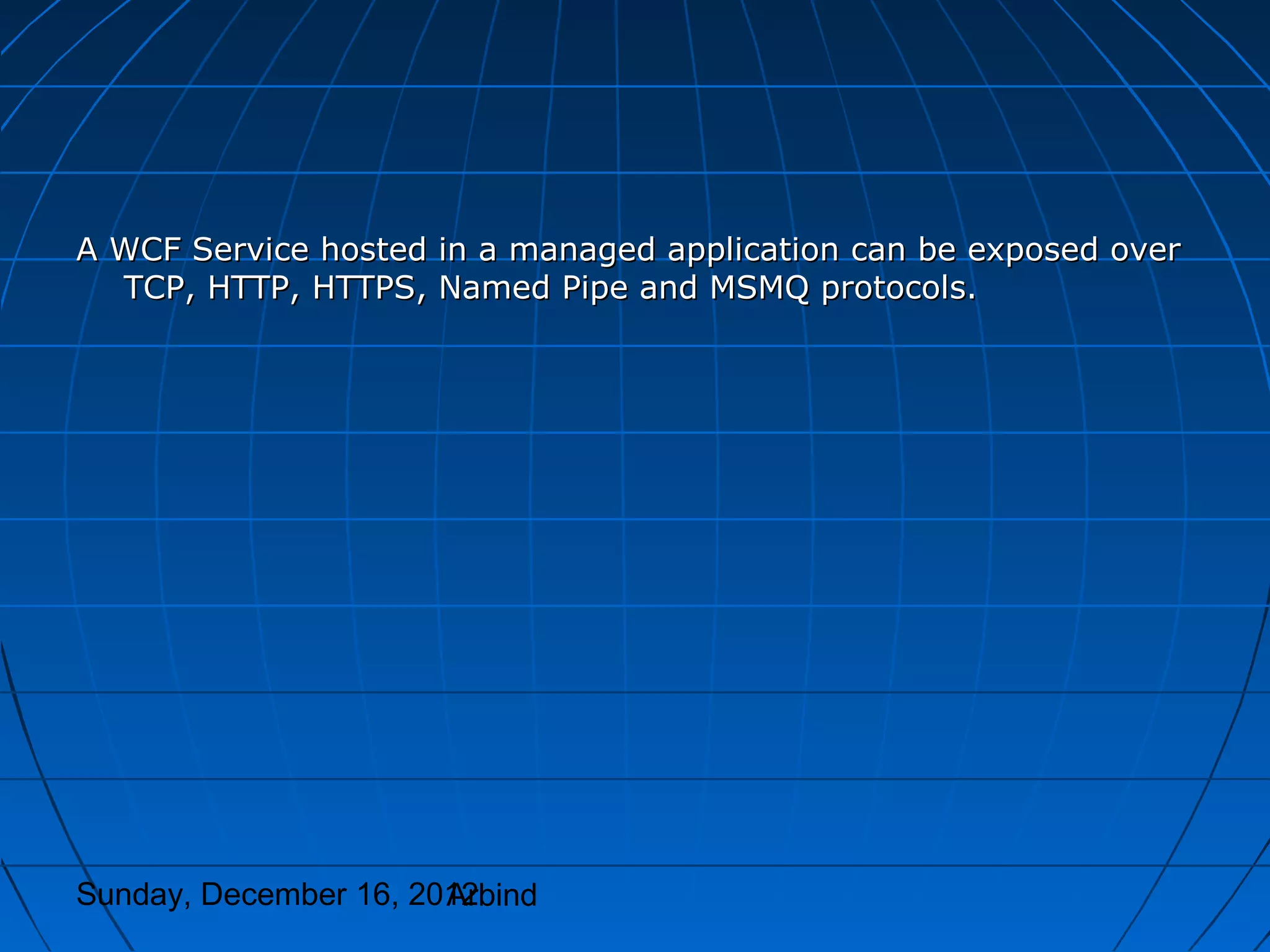
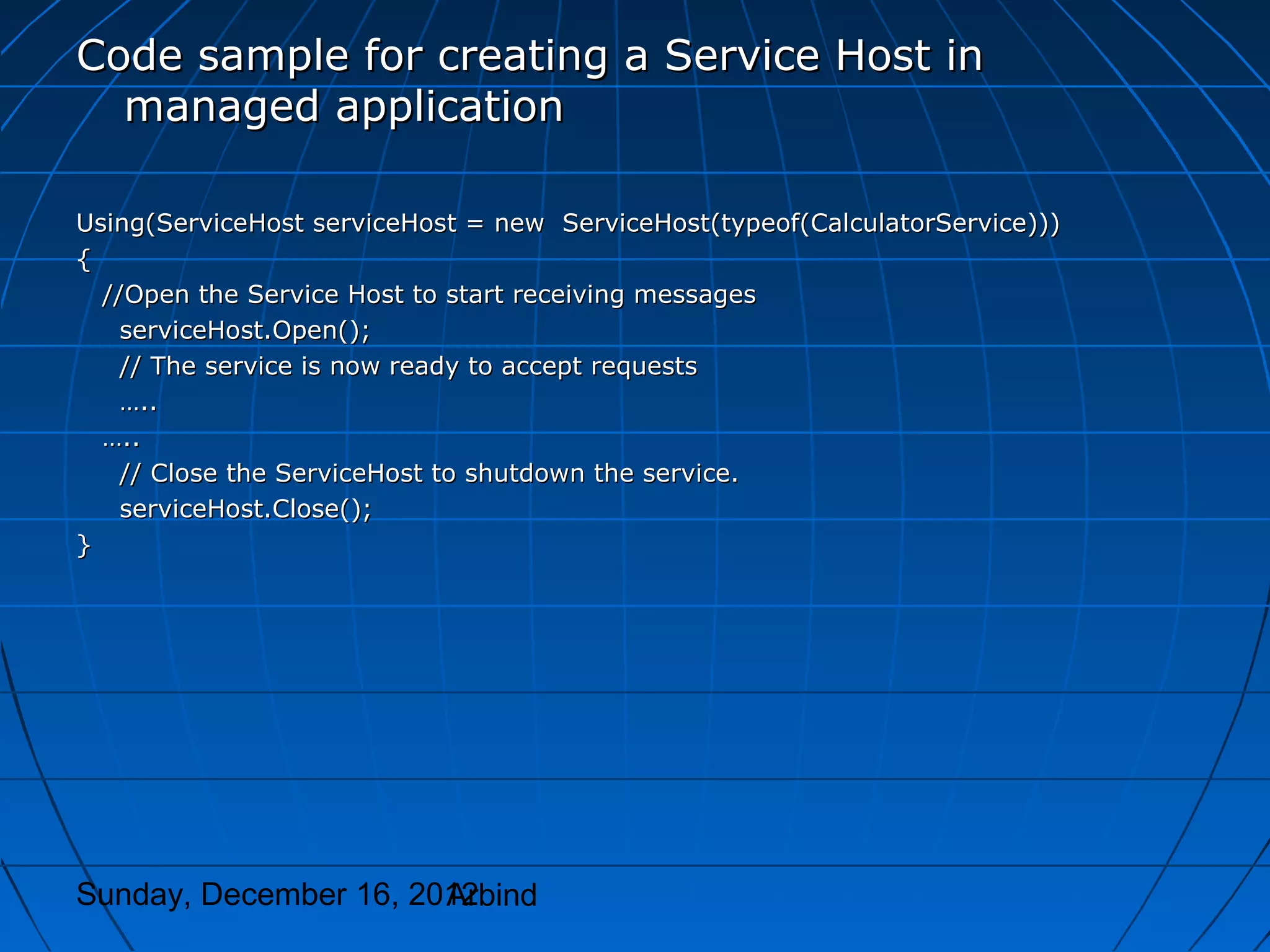
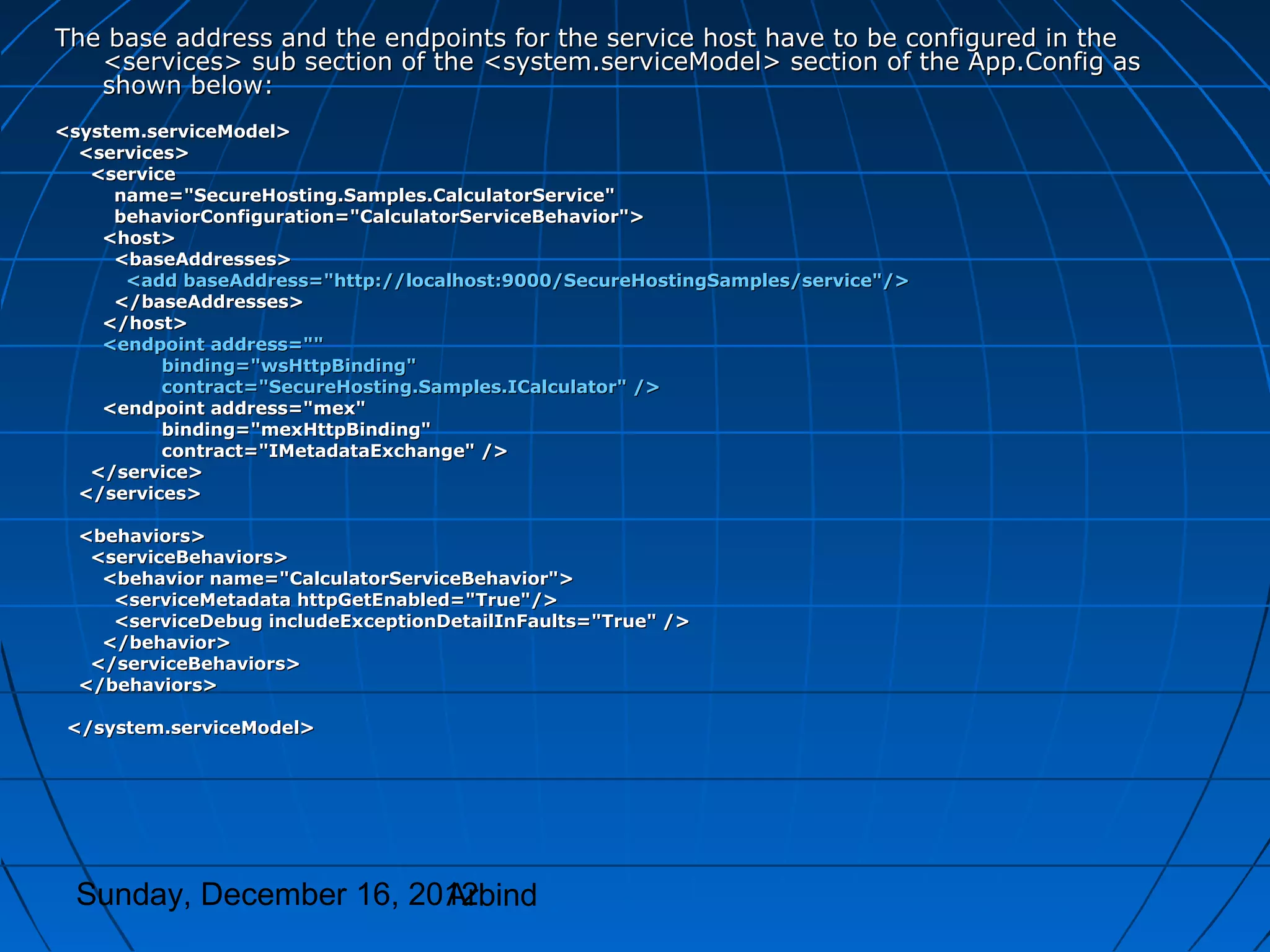
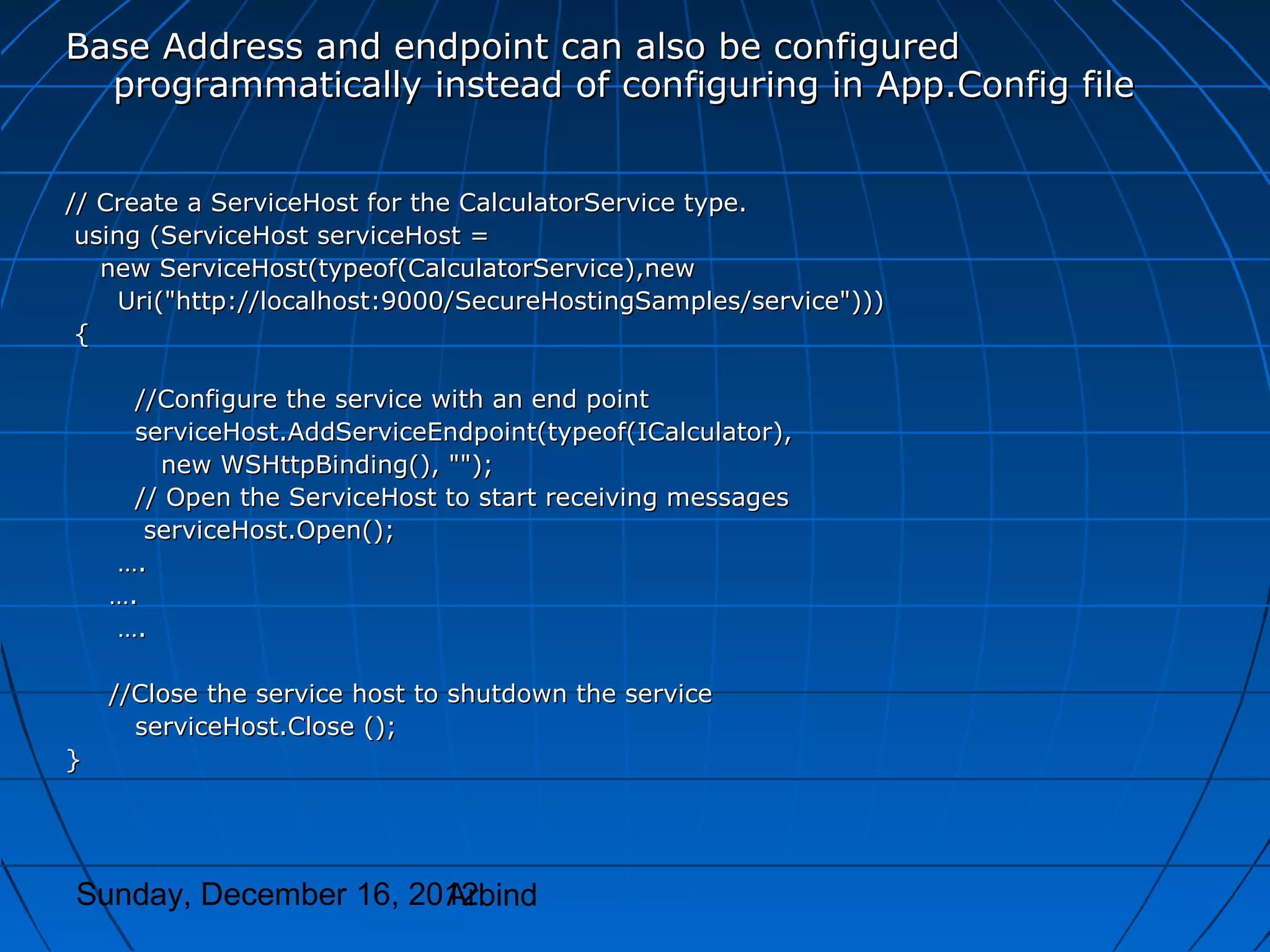
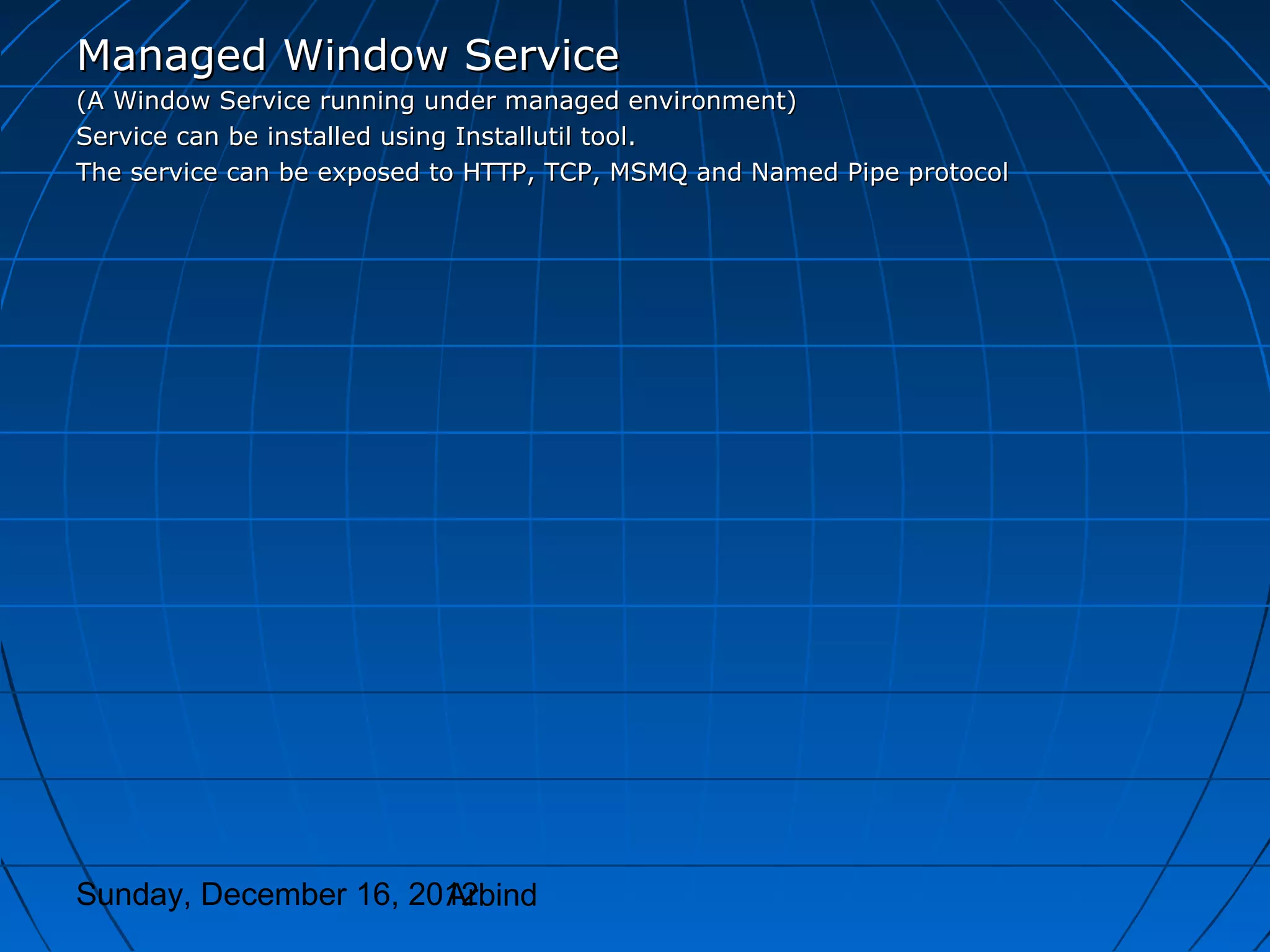
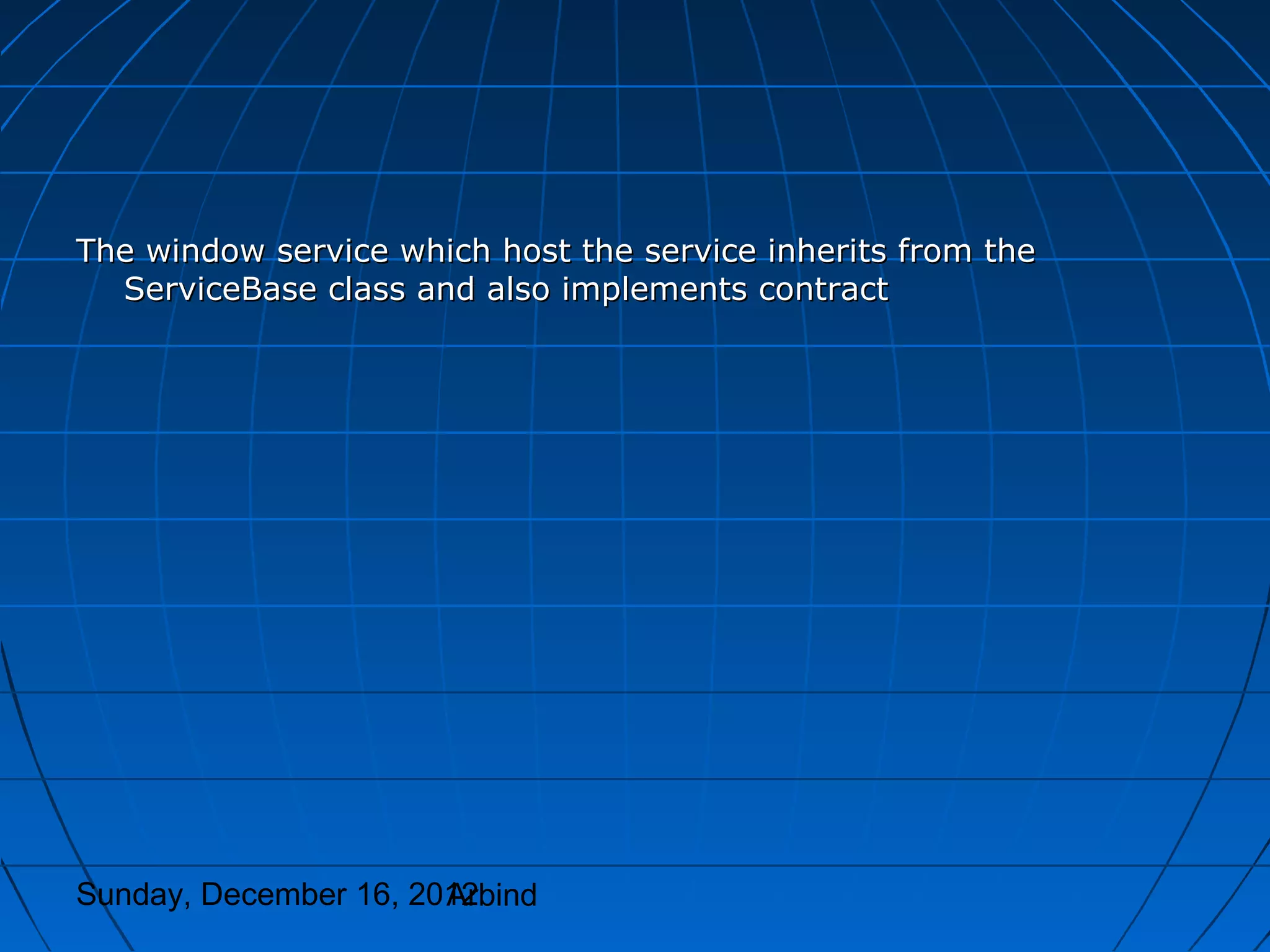
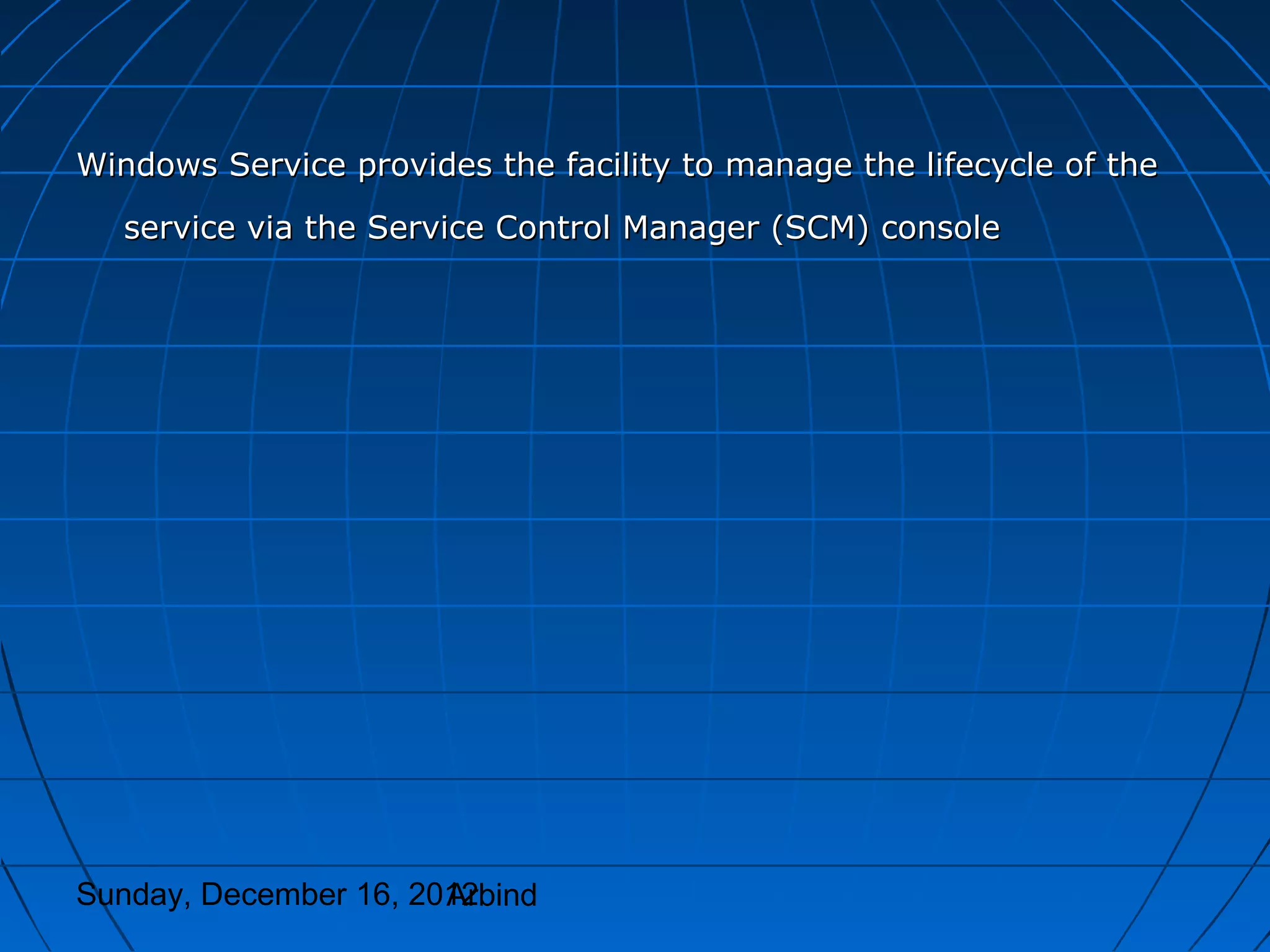
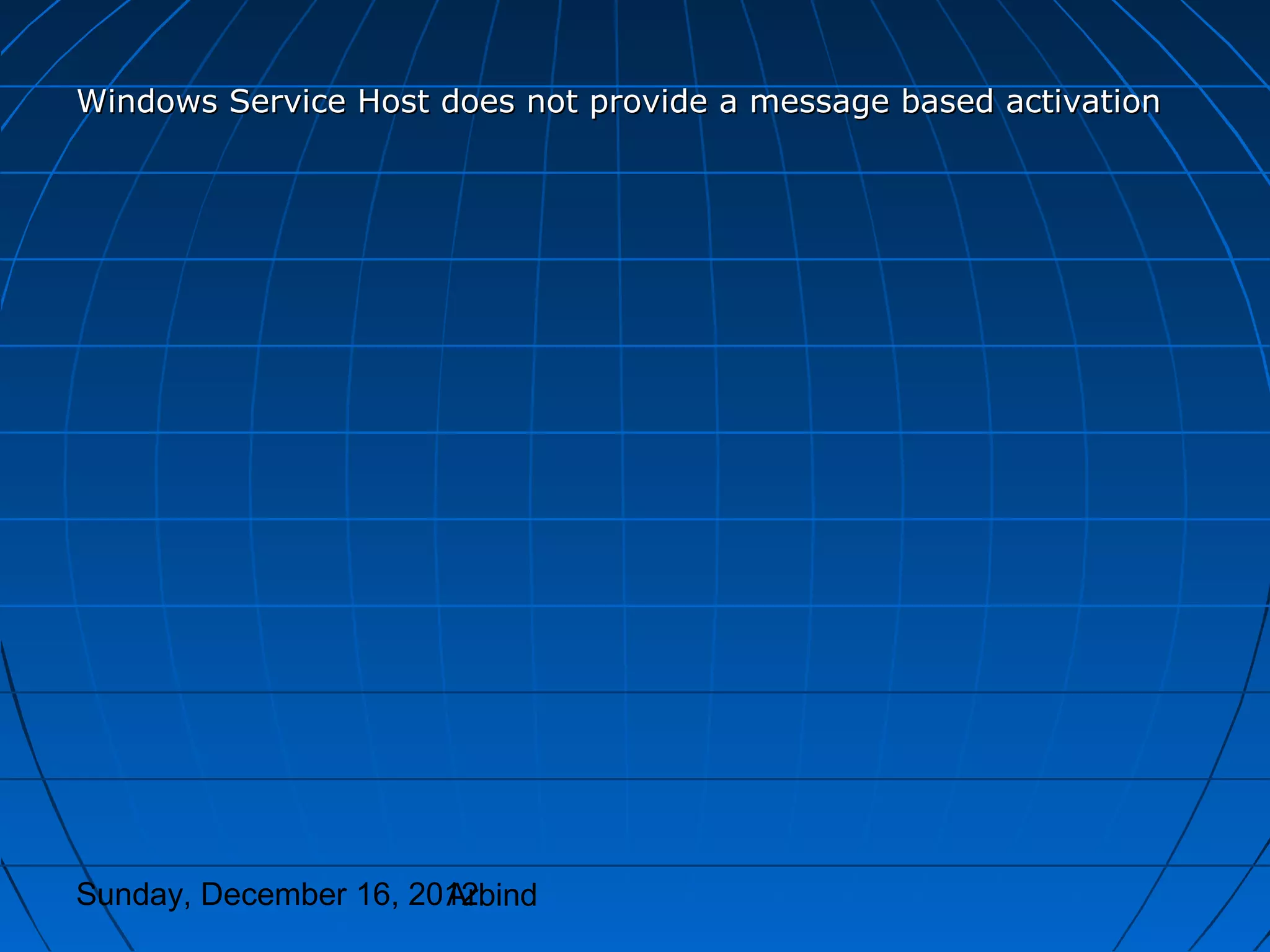
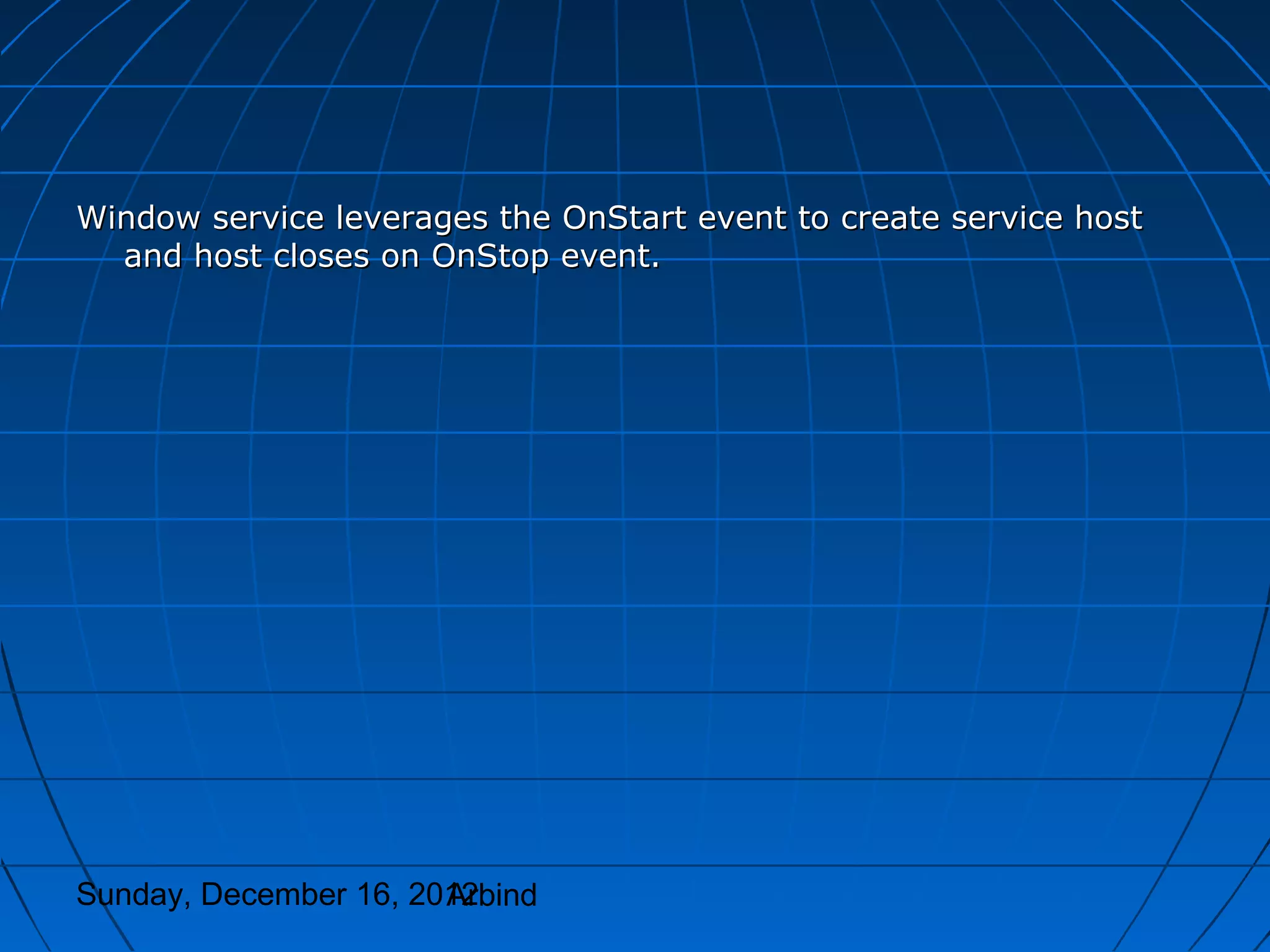
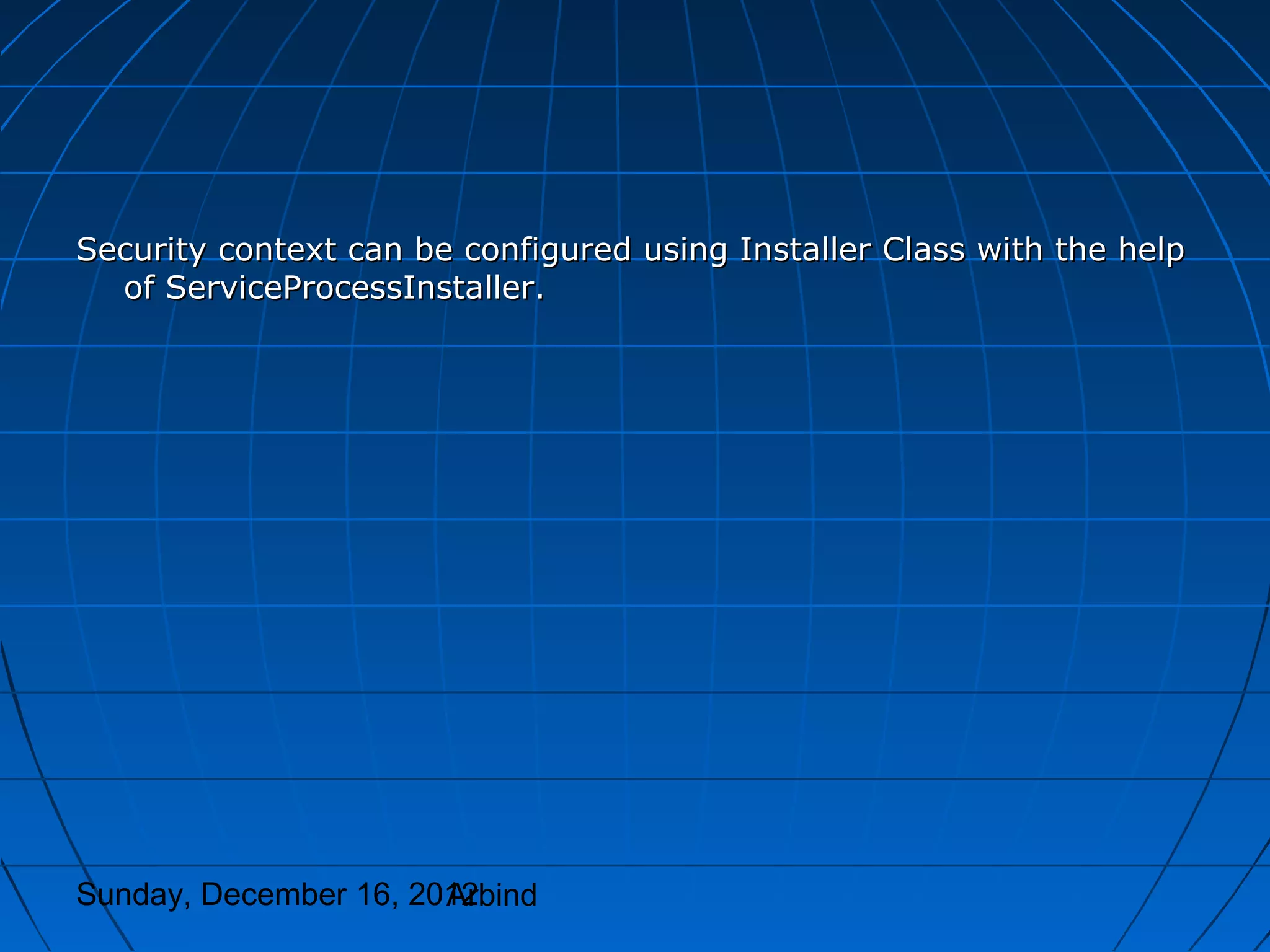
![Sample Code to create Managed Window Service
public class CalculatorService : ServiceBase, ICalculator
{
public ServiceHost serviceHost = null;
public static void Main()
{
ServiceBase.Run(new CalculatorService());
}
public CalculatorService()
{
ServiceName = "WCFWindowsCalculatorService";
}
//Start the Windows service.
protected override void OnStart(string[] args)
{
if (serviceHost != null)
{
serviceHost.Close();
}
// Create a ServiceHost for the Service
serviceHost = new ServiceHost(typeof(CalculatorService));
// Start Listening for the Messages
serviceHost.Open();
}
//Stop the Windows Service
protected override void OnStop()
{
if (serviceHost != null)
{
serviceHost.Close();
serviceHost = null;
}
}
}
Sunday, December 16, 2012
Arbind](https://image.slidesharecdn.com/wcfarchitectureoverview-121216000459-phpapp01/75/Wcf-architecture-overview-48-2048.jpg)
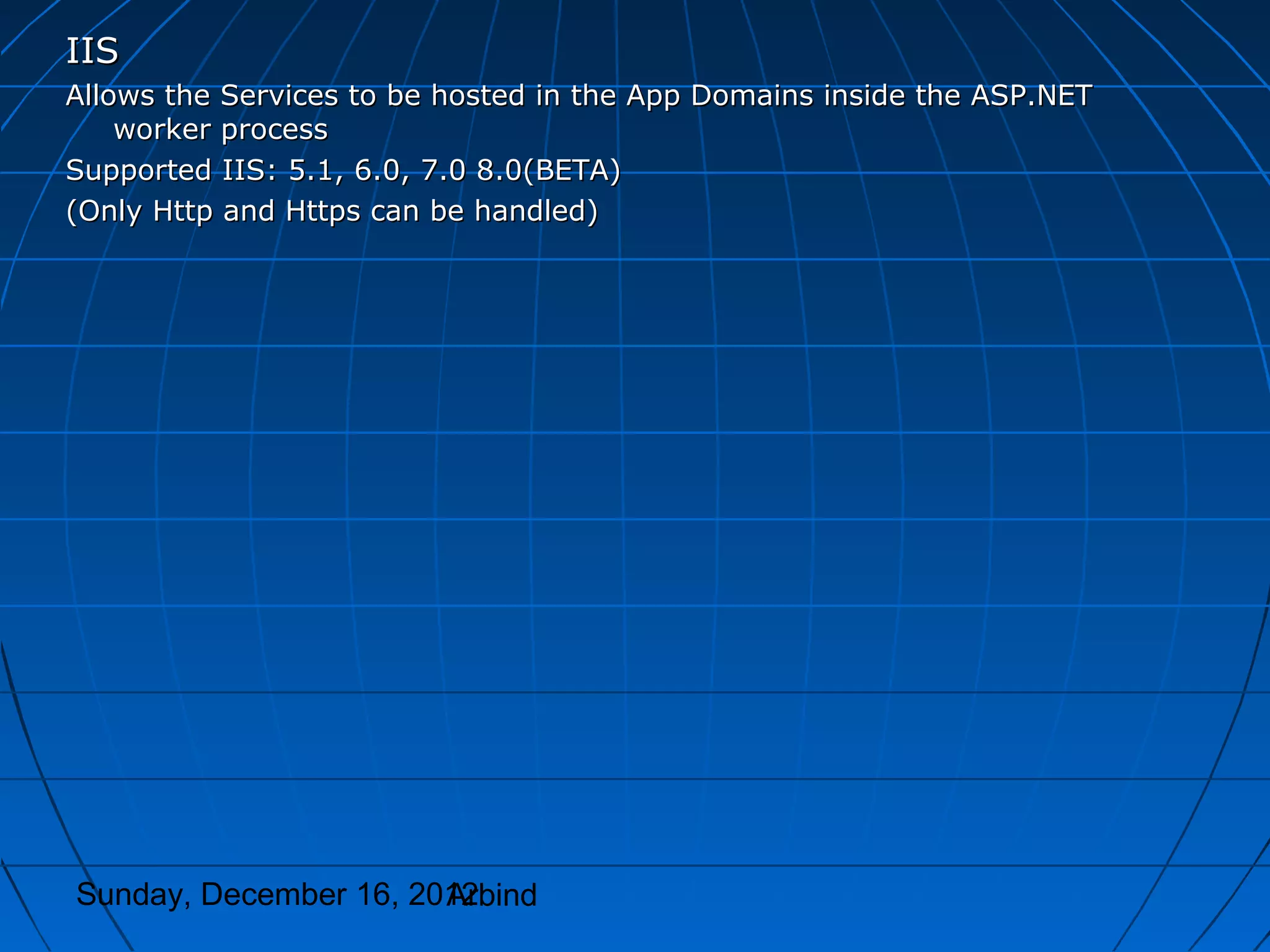
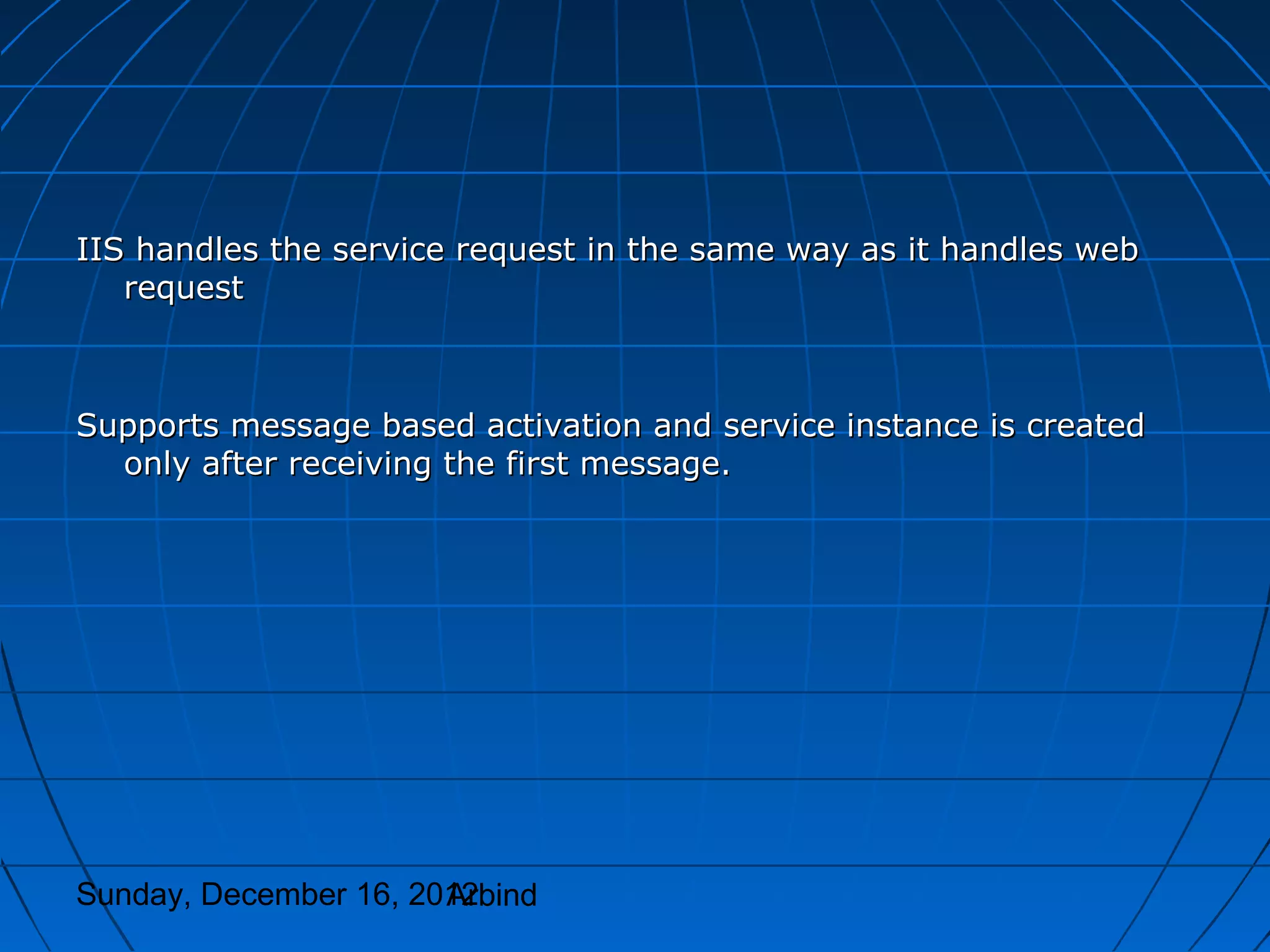
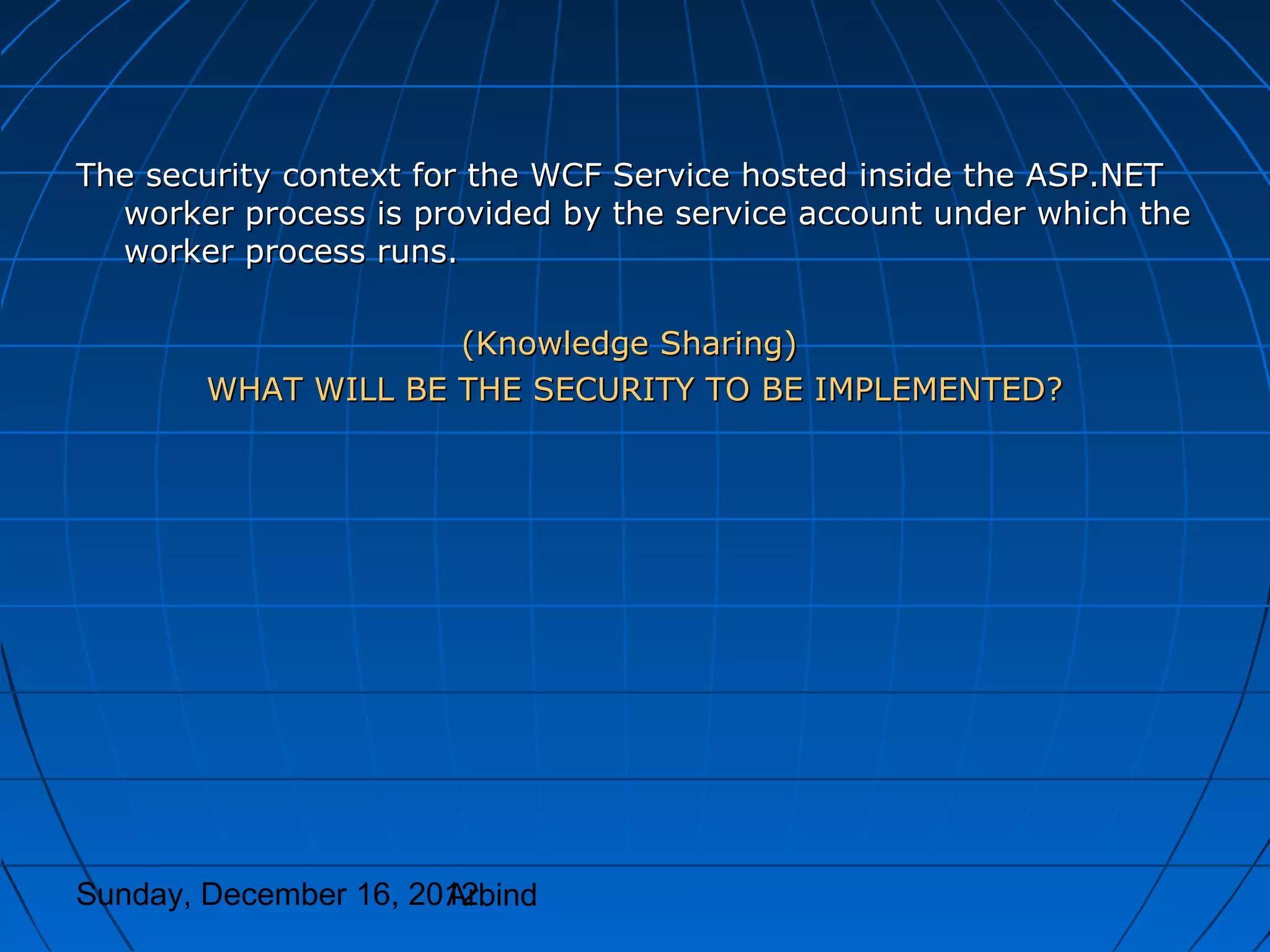
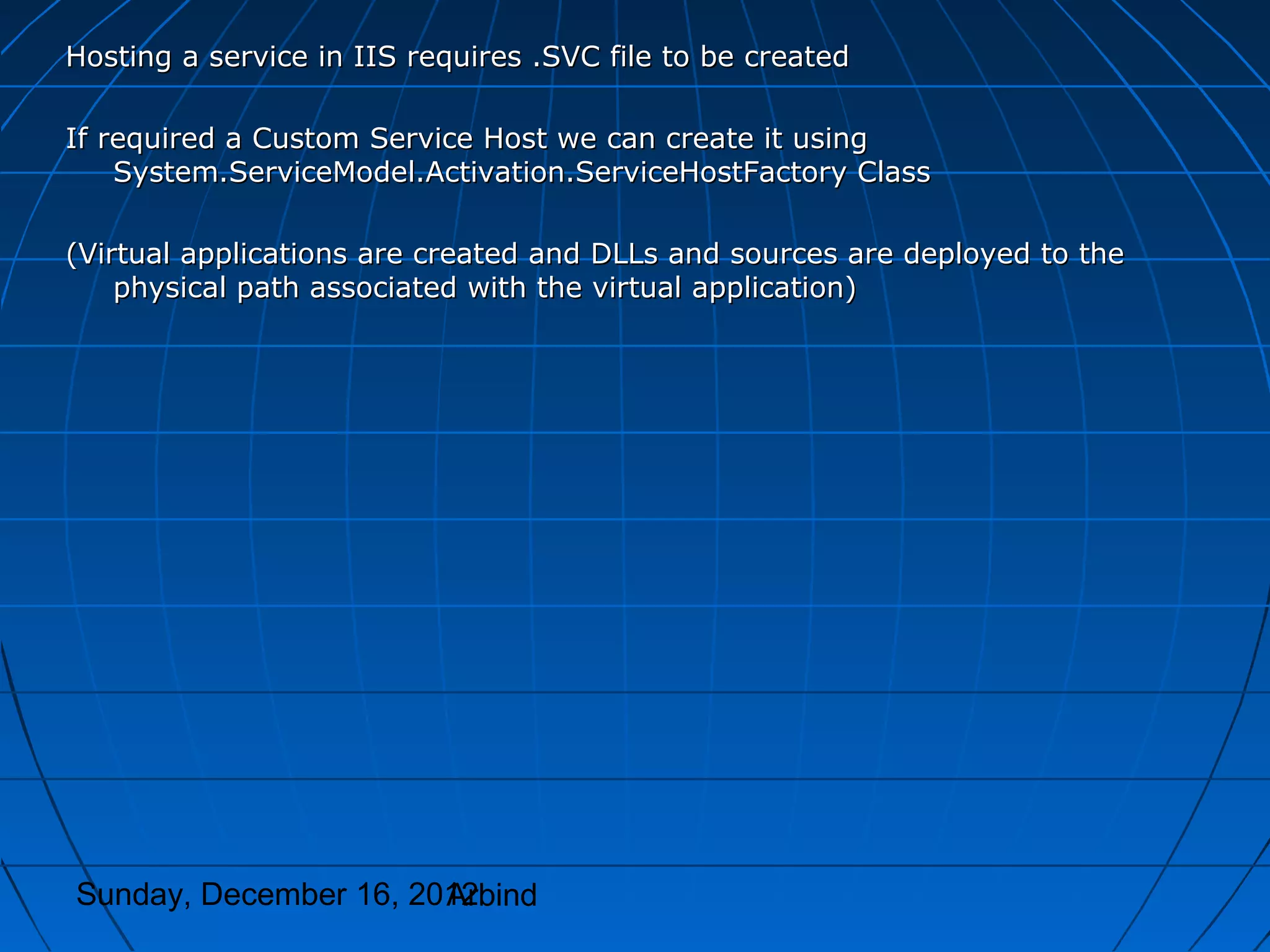
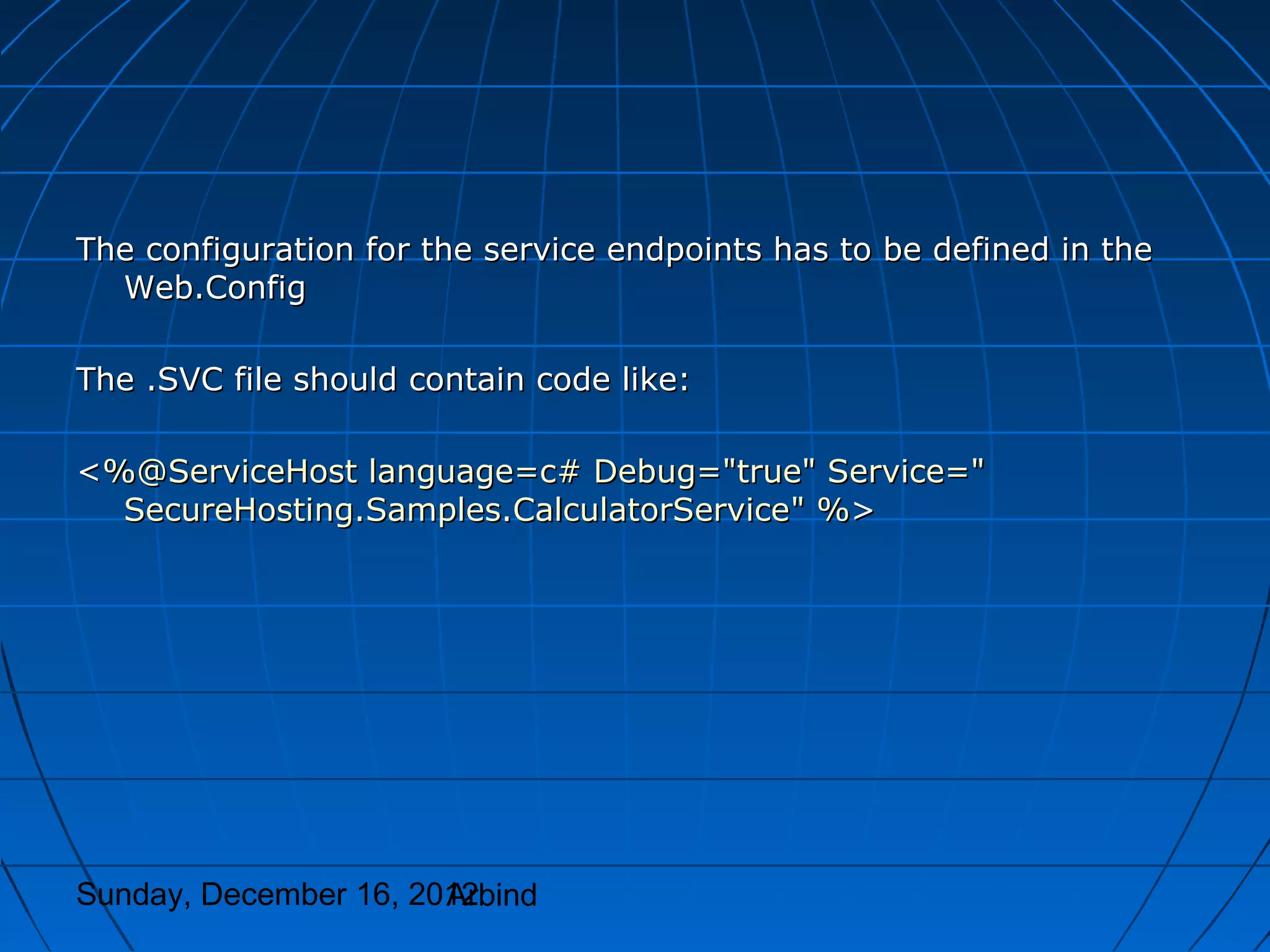
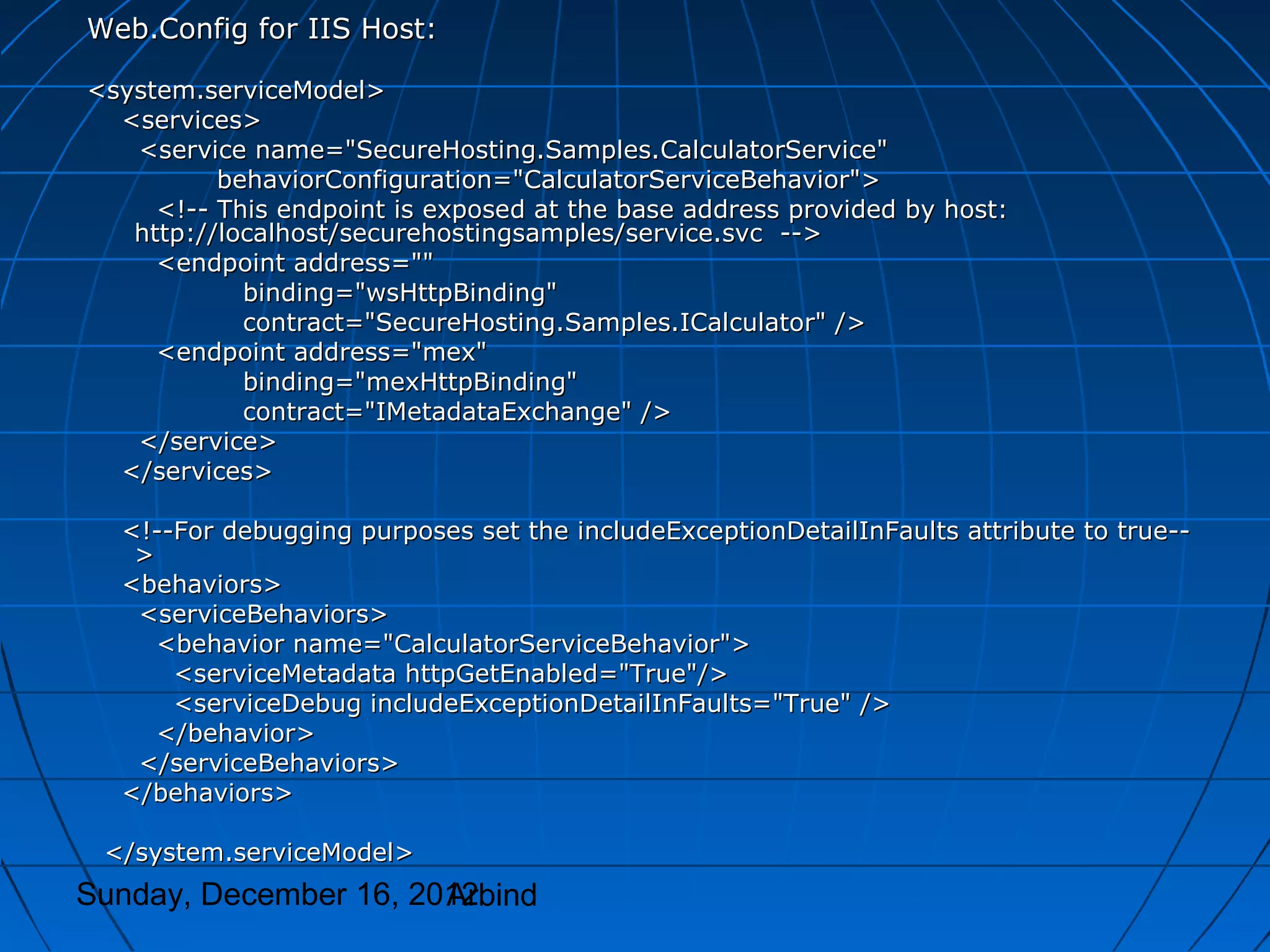
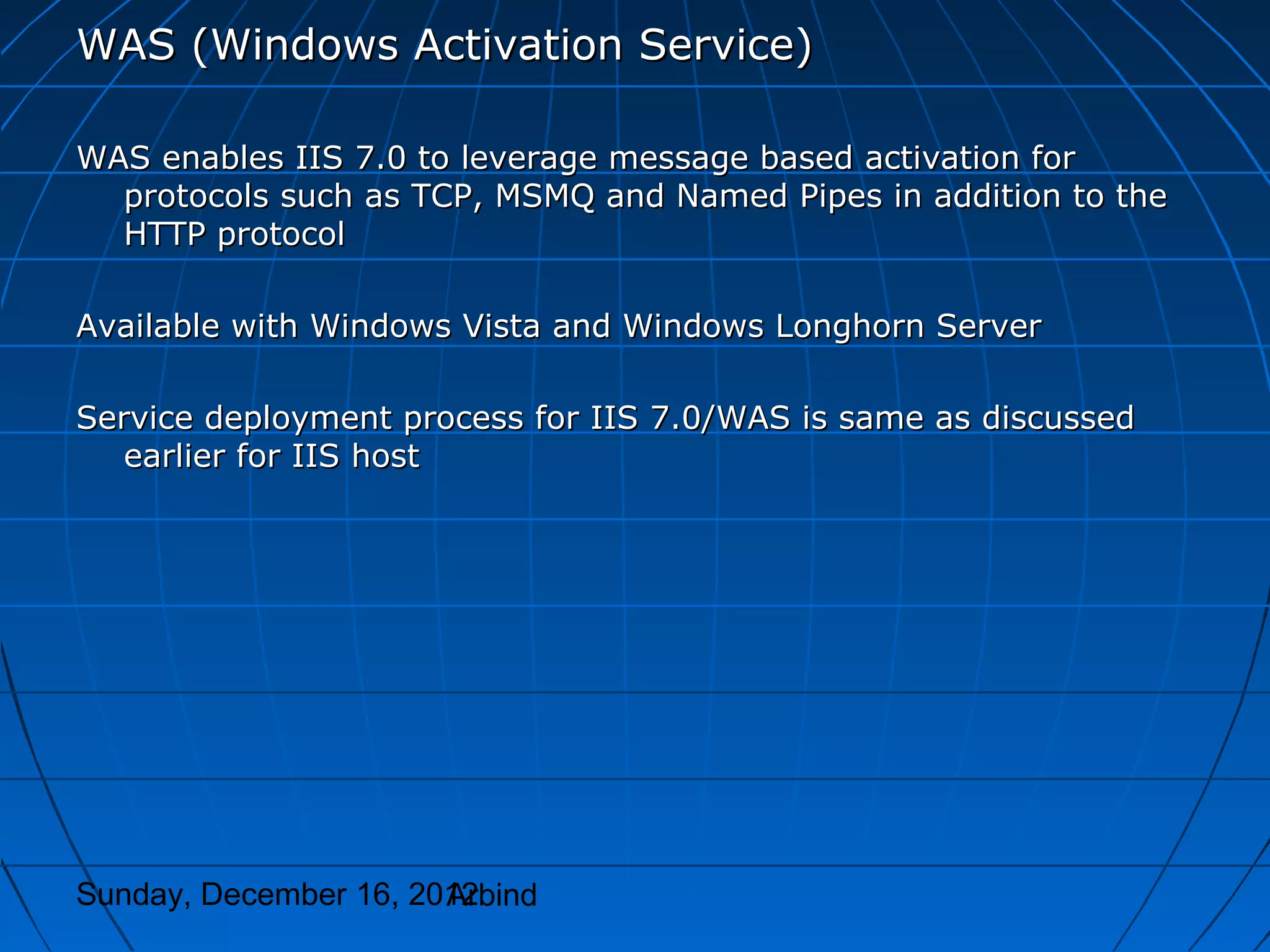
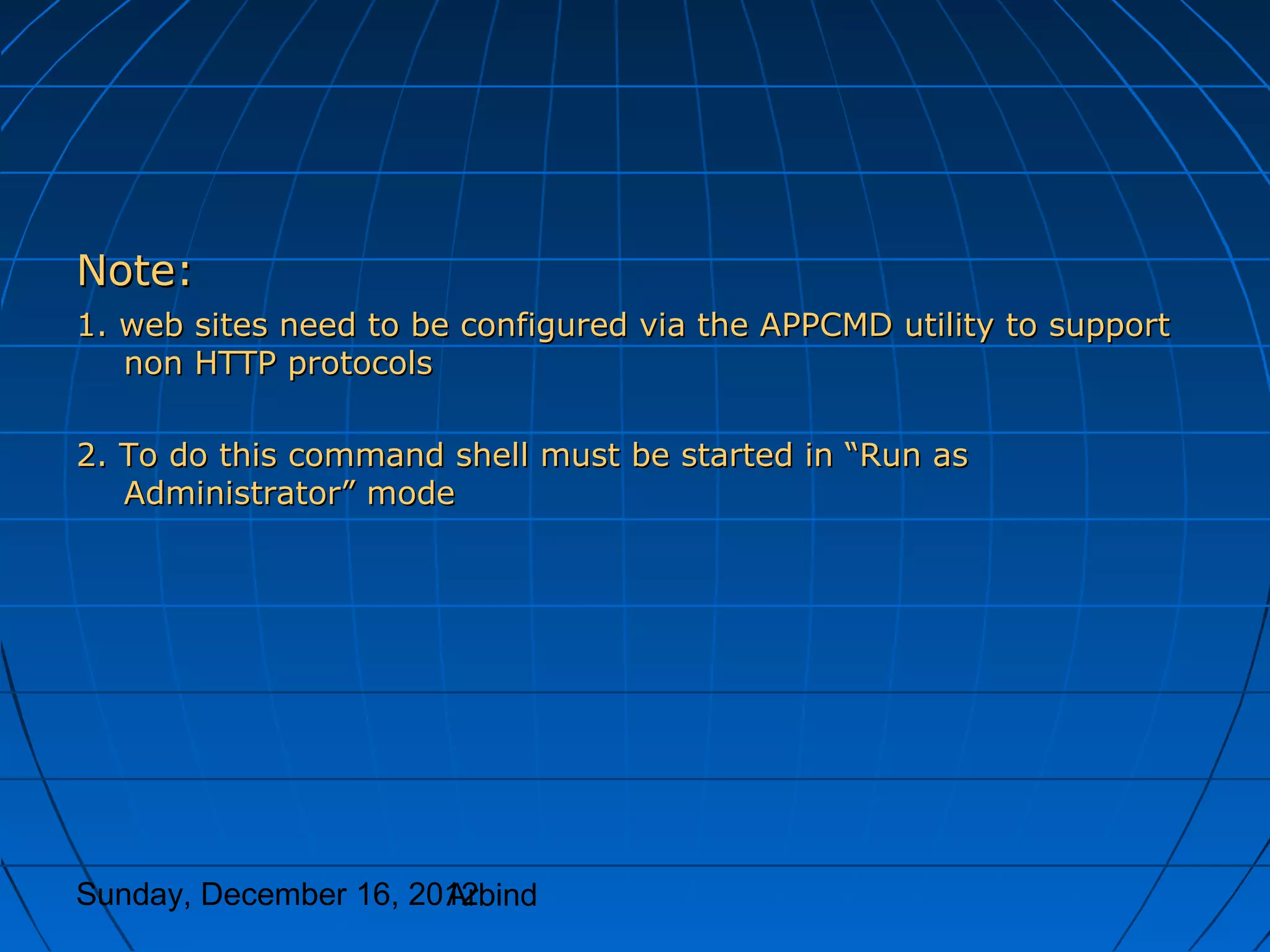
![Command to run:
%windir%system32inetsrvappcmd.exe set site "Default Web Site"
-+bindings.[protocol='net.tcp',bindingInformation='808:*'] FOR
TCP
%windir%system32inetsrvappcmd.exe set site "Default Web Site"
-+bindings.[protocol='net.msmq',bindingInformation='*'] FOR
MSMQ
%windir%system32inetsrvappcmd.exe set site "Default Web Site"
-+bindings.[protocol='net.pipe',bindingInformation='*'] FOR
NAMED PIPE
Sunday, December 16, 2012
Arbind](https://image.slidesharecdn.com/wcfarchitectureoverview-121216000459-phpapp01/75/Wcf-architecture-overview-57-2048.jpg)
